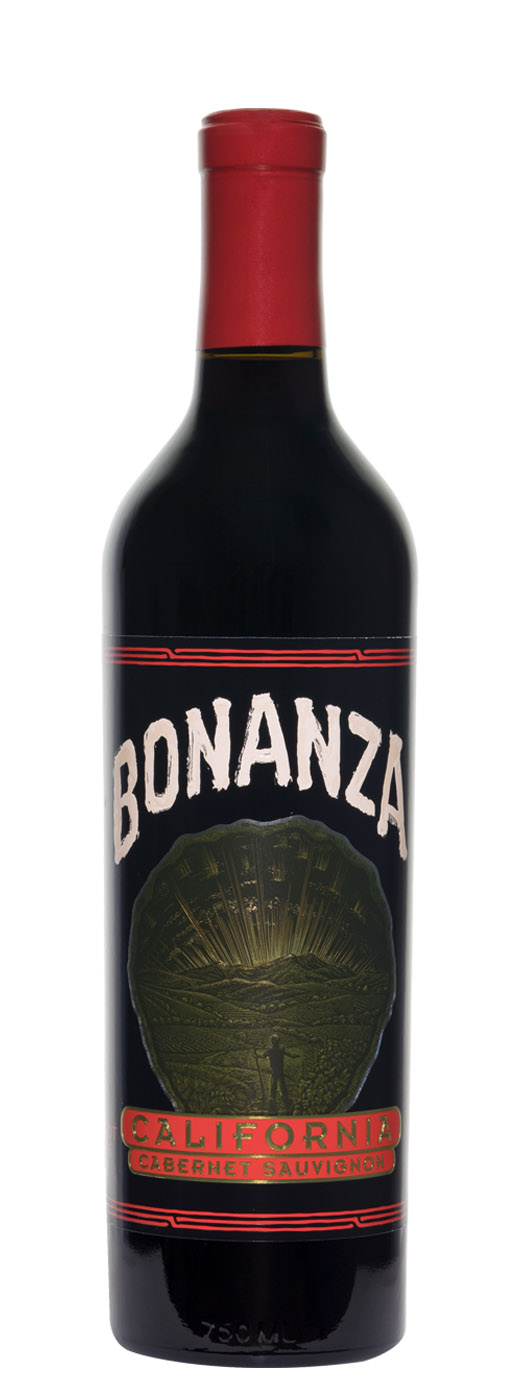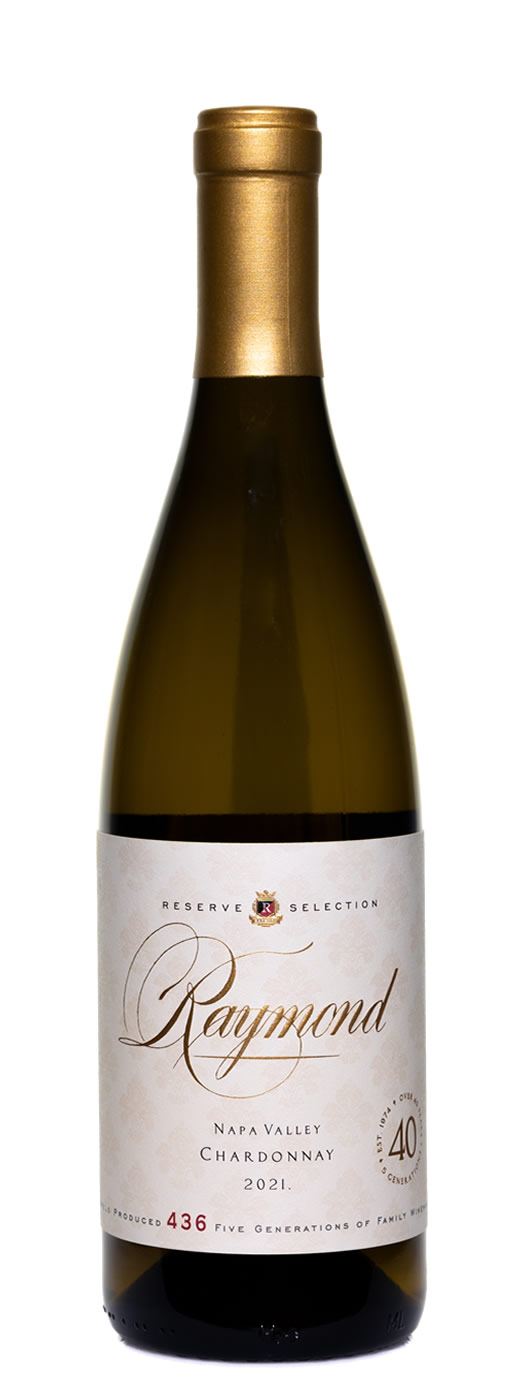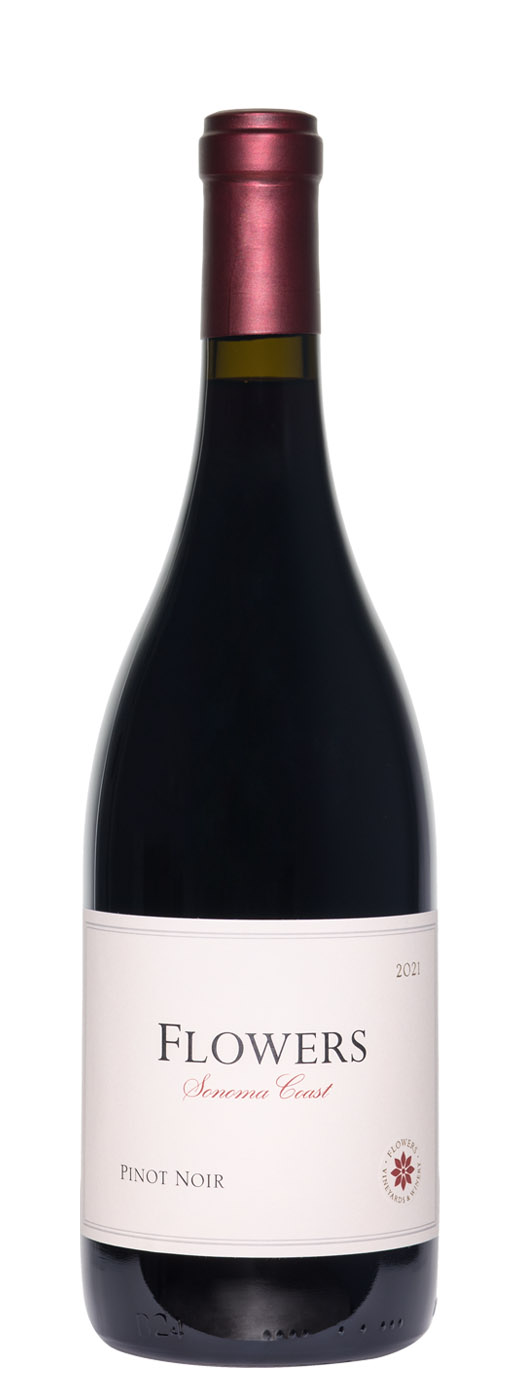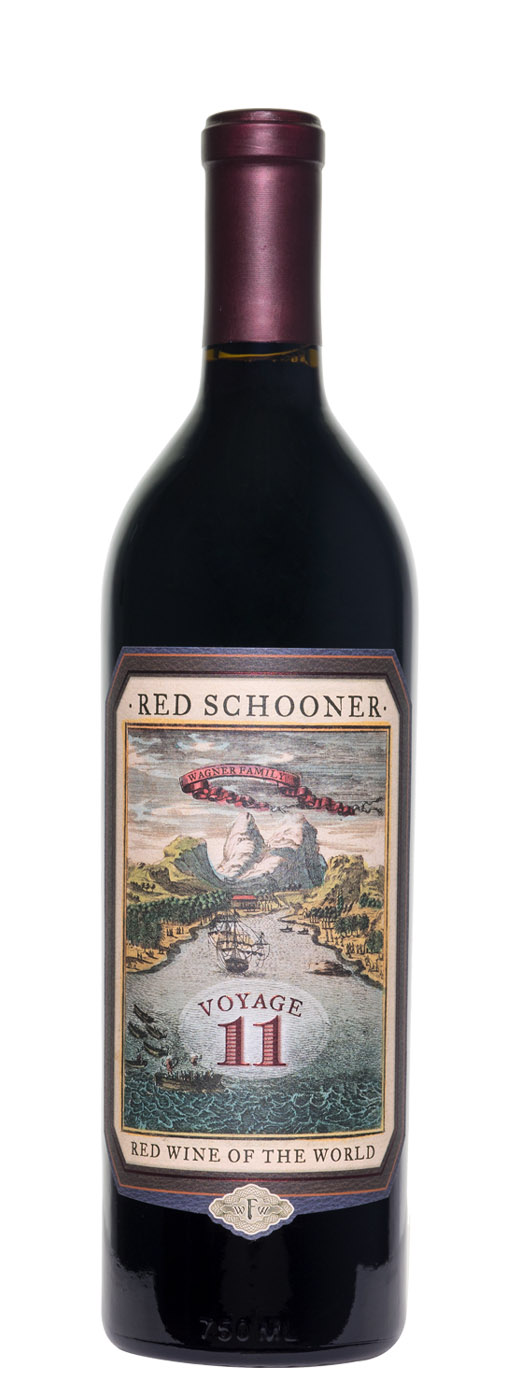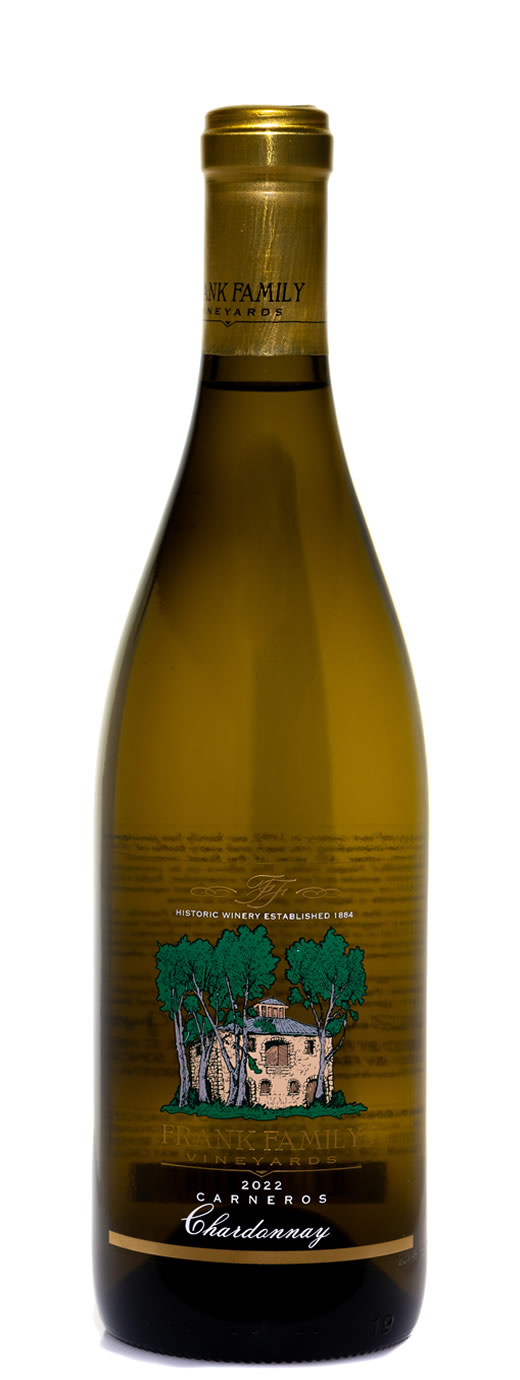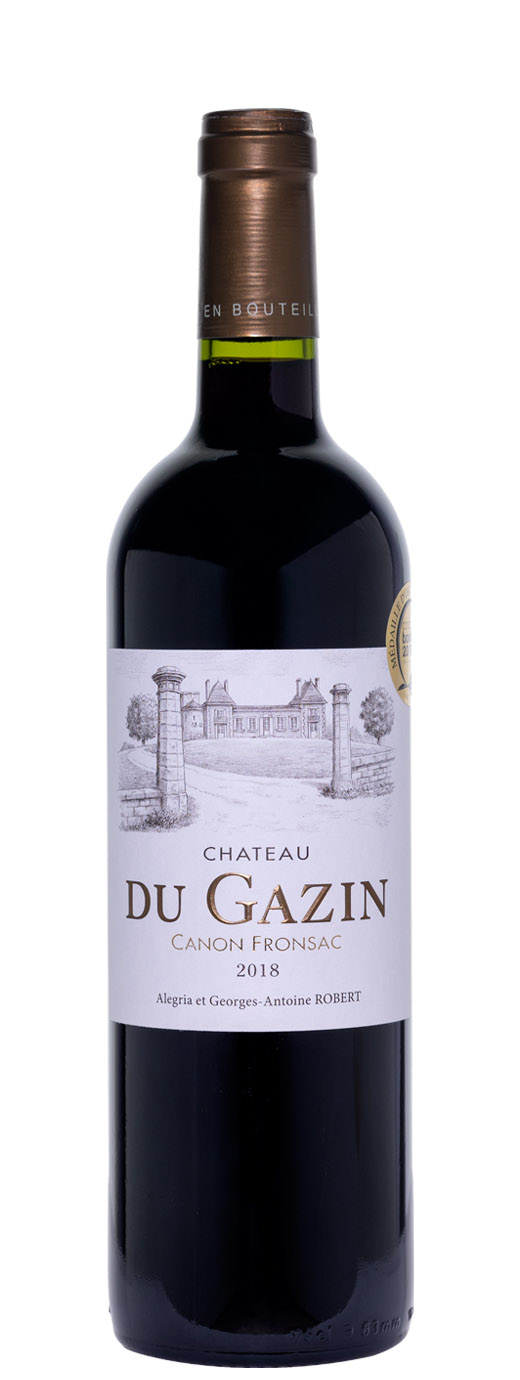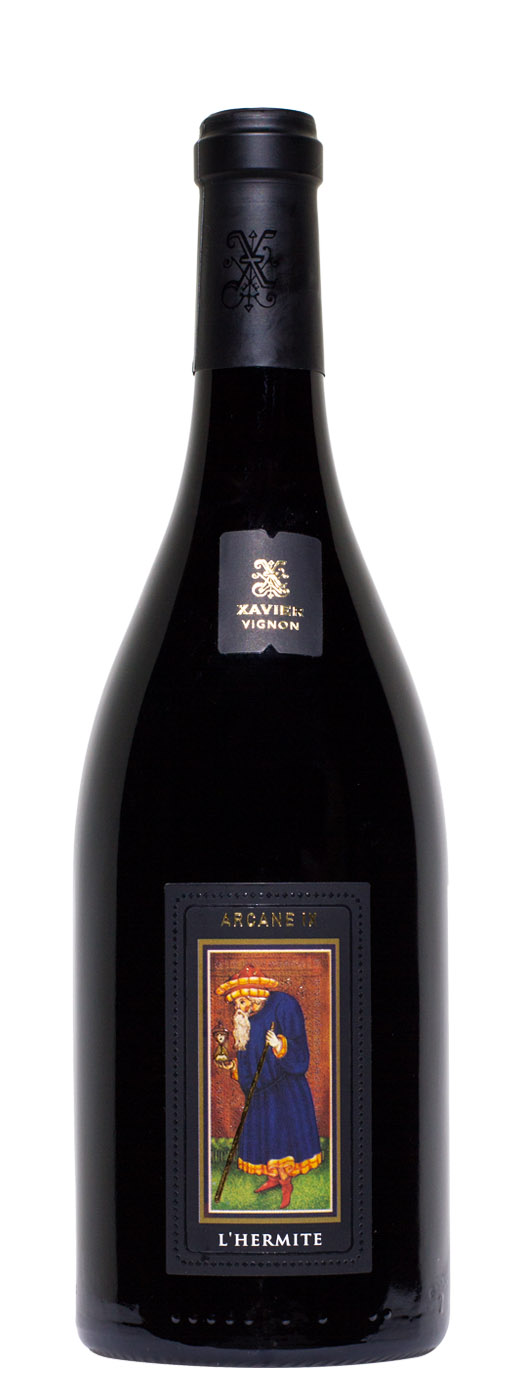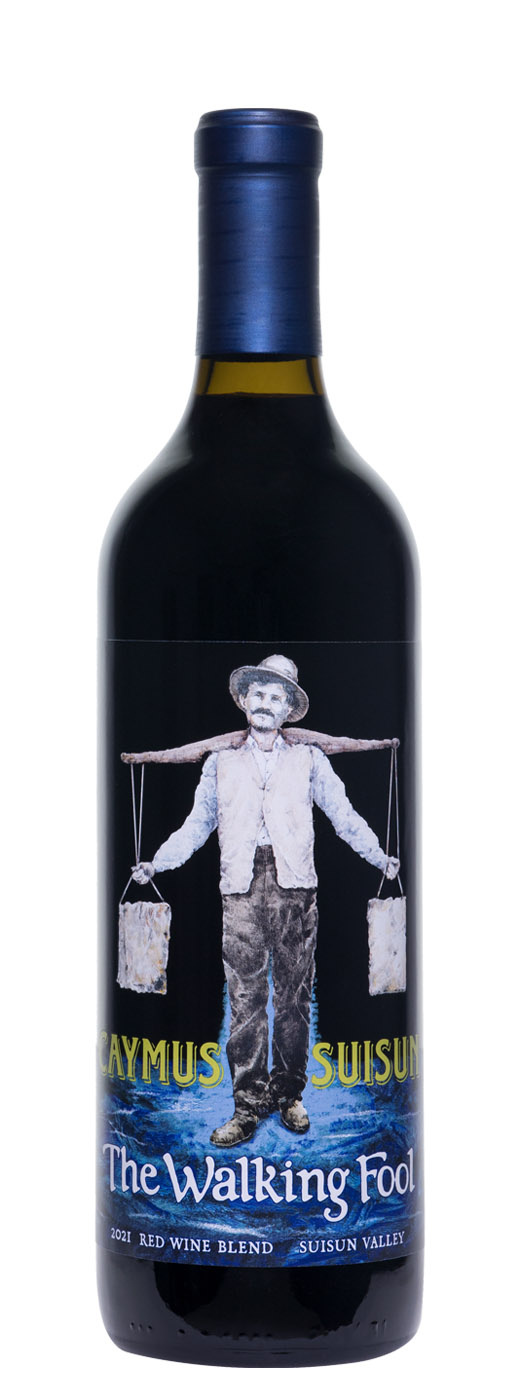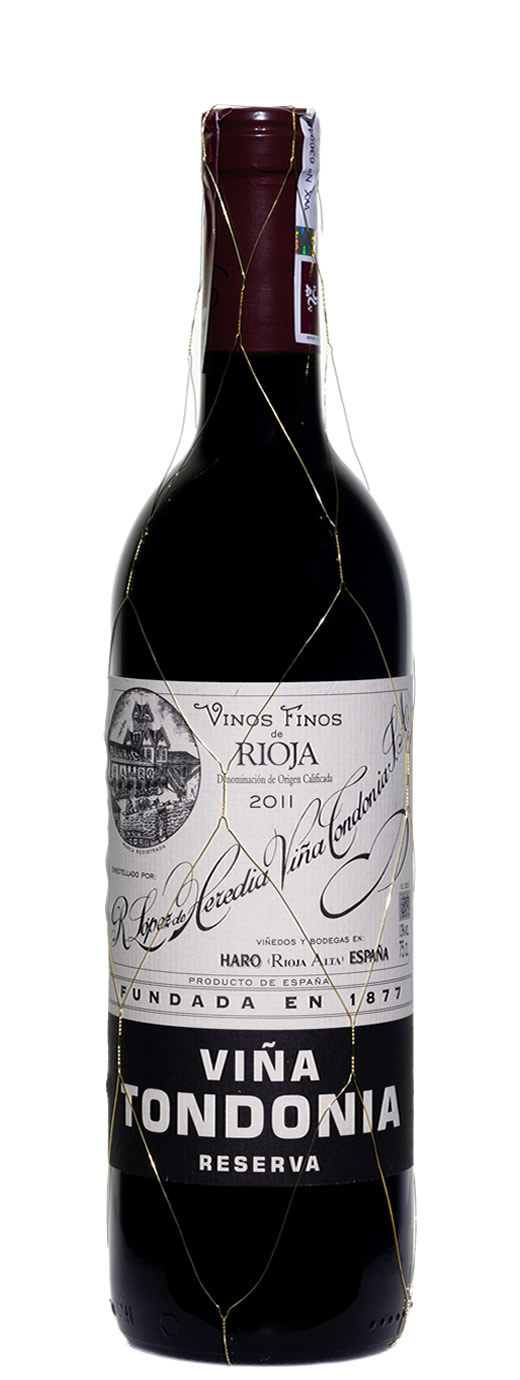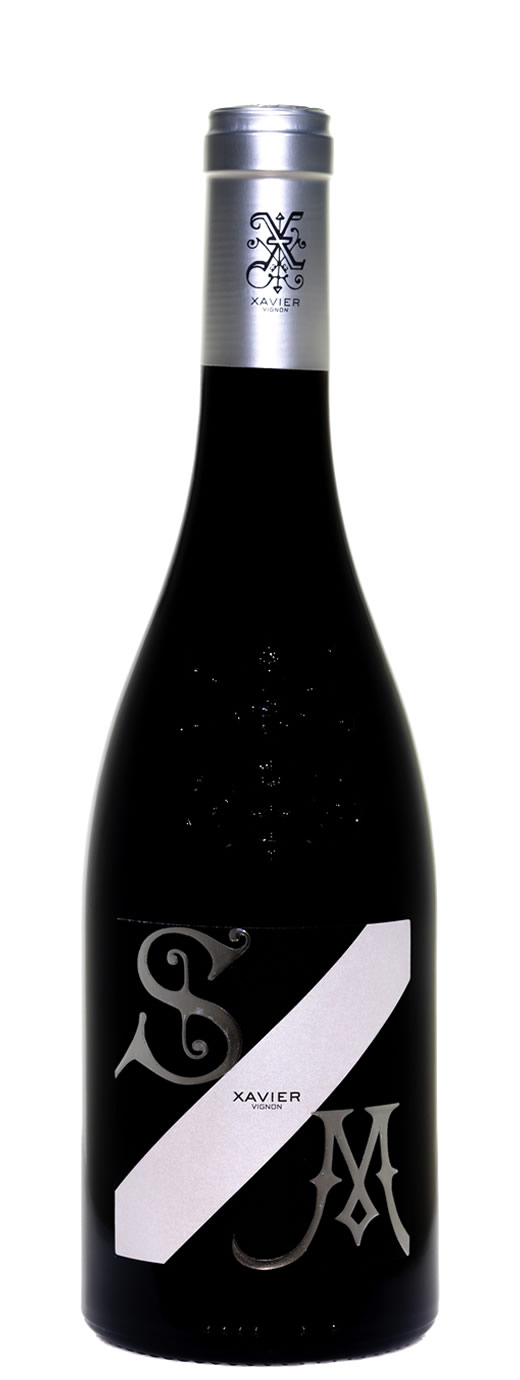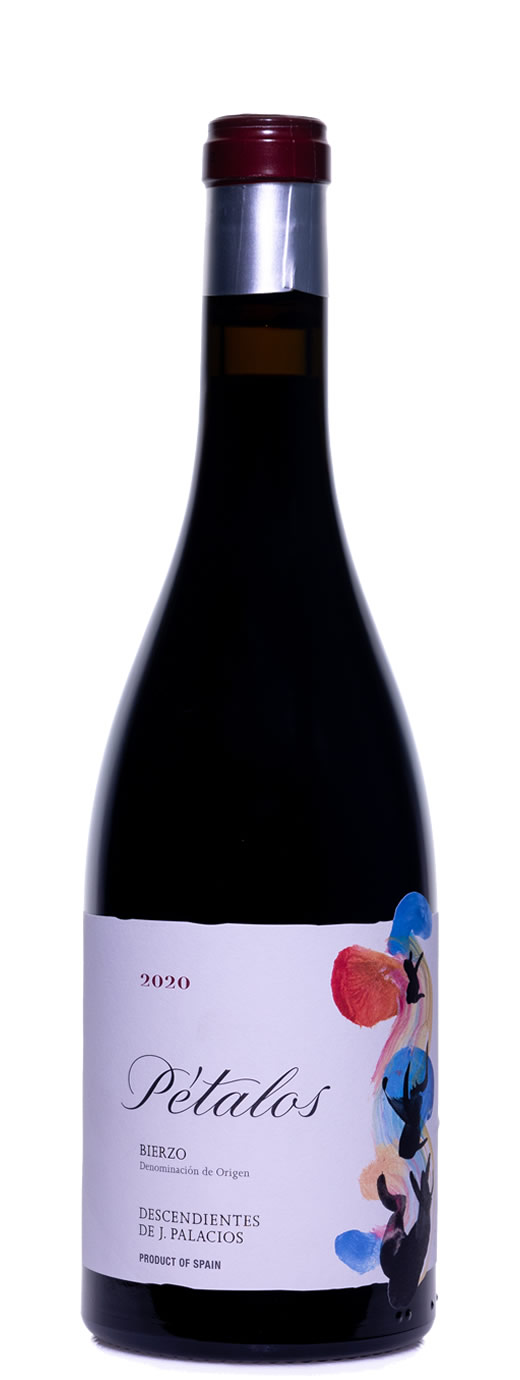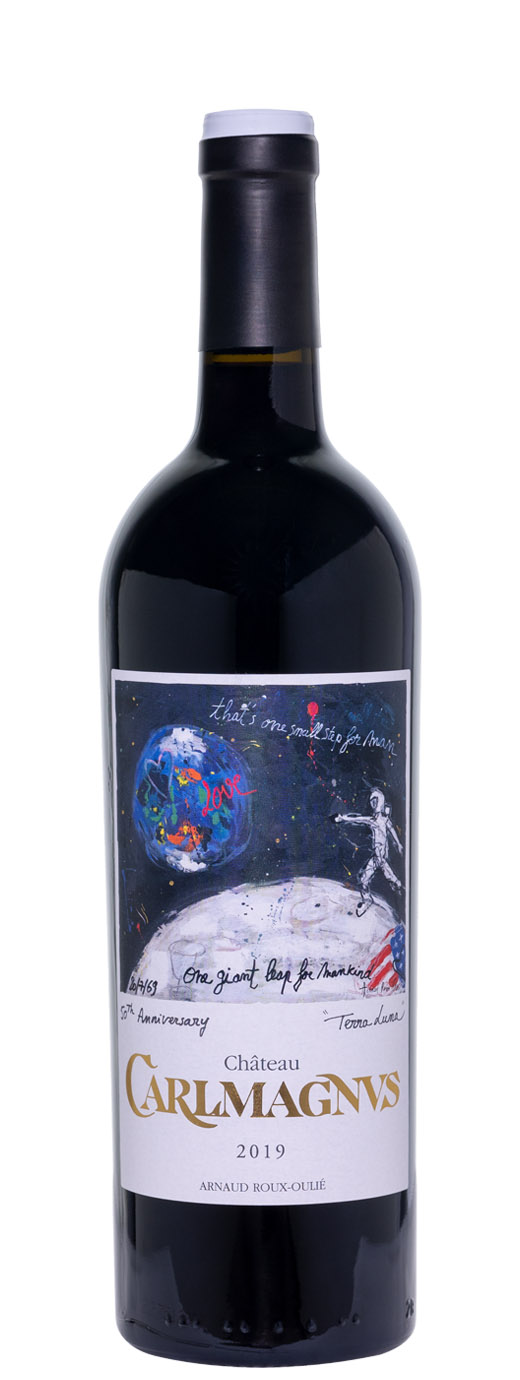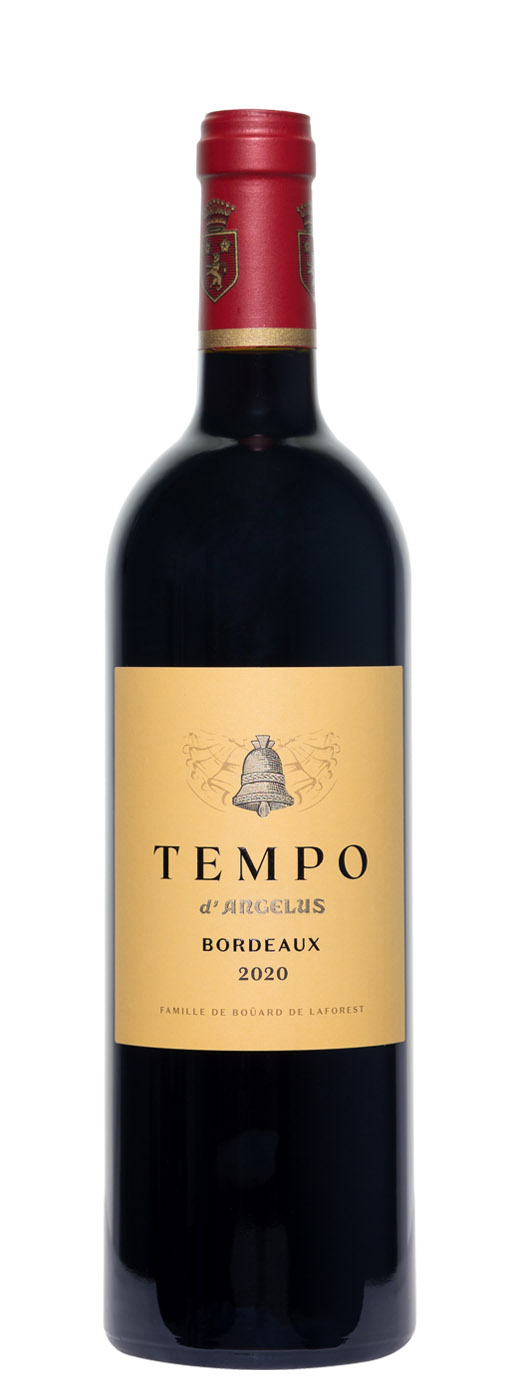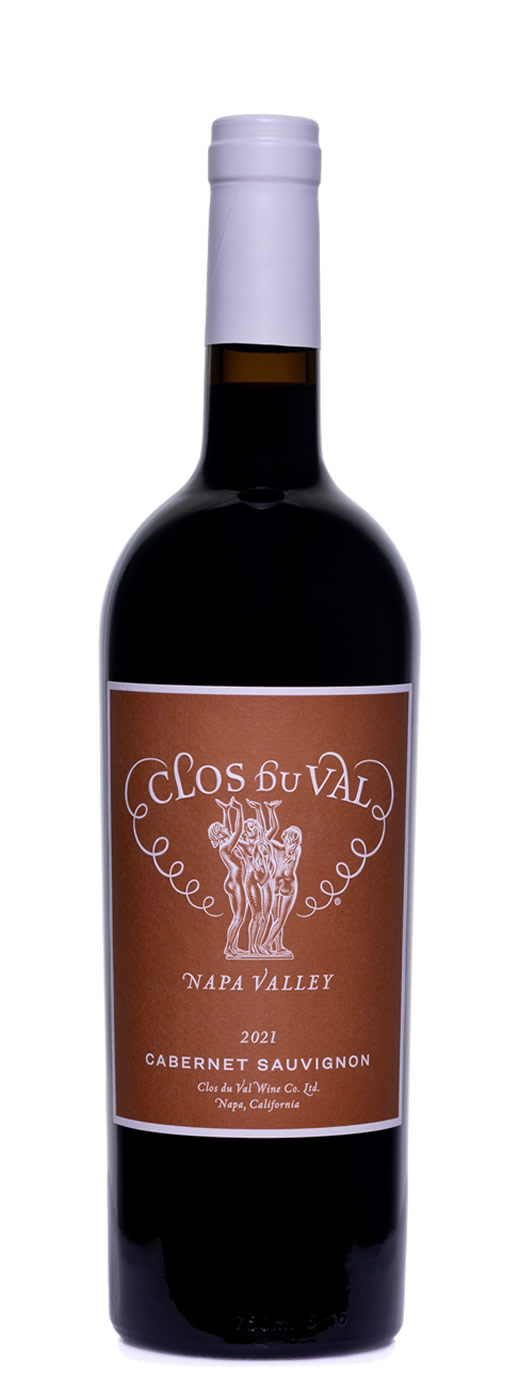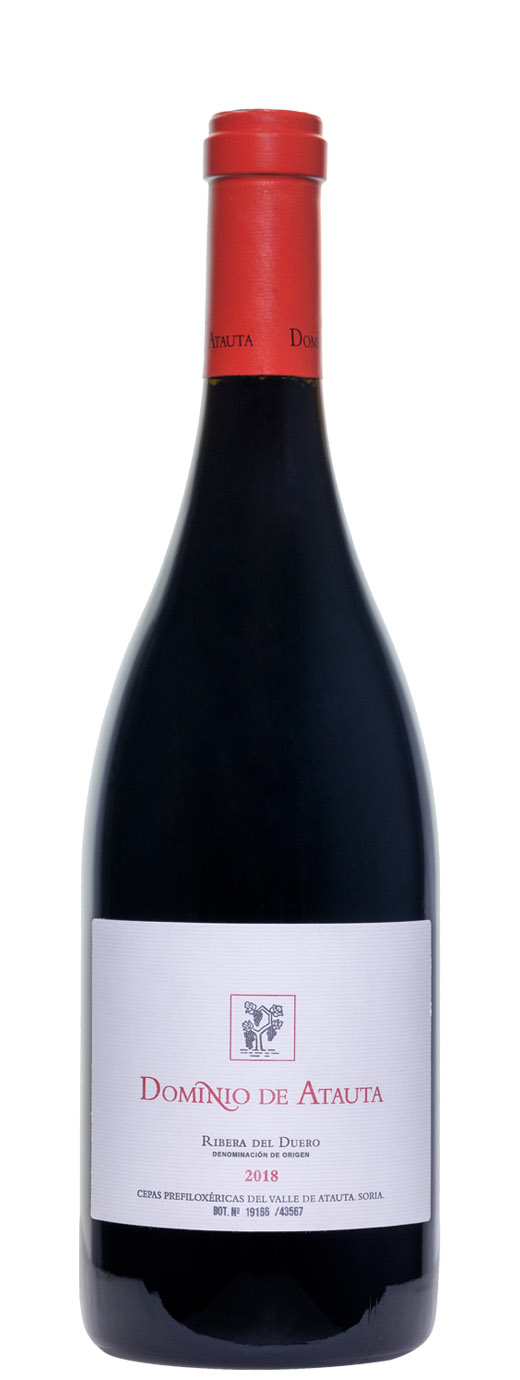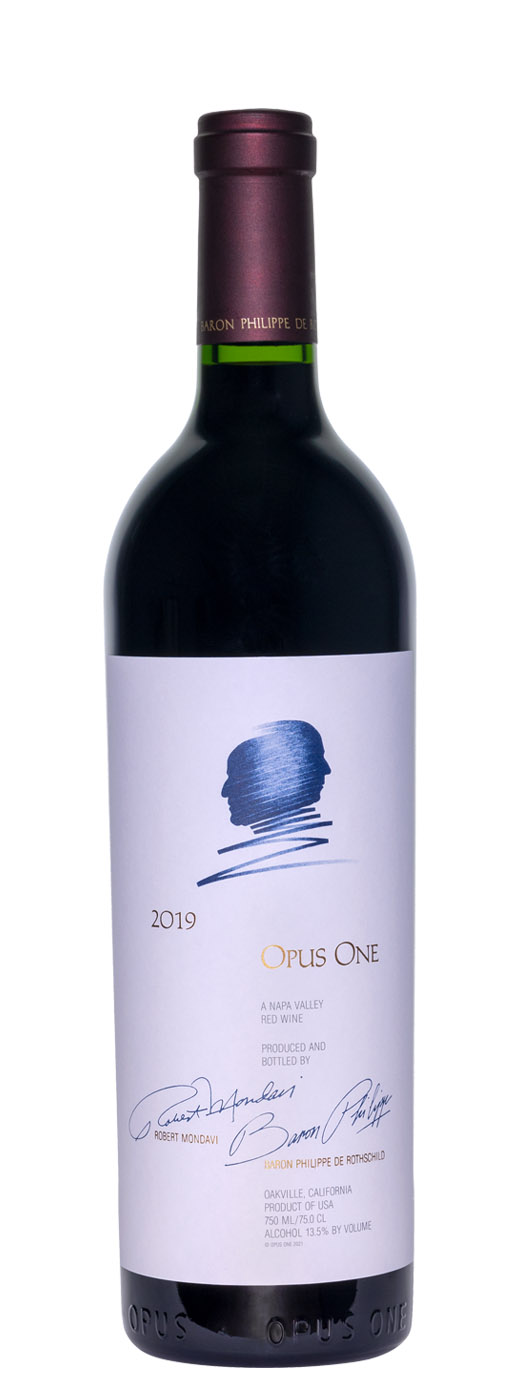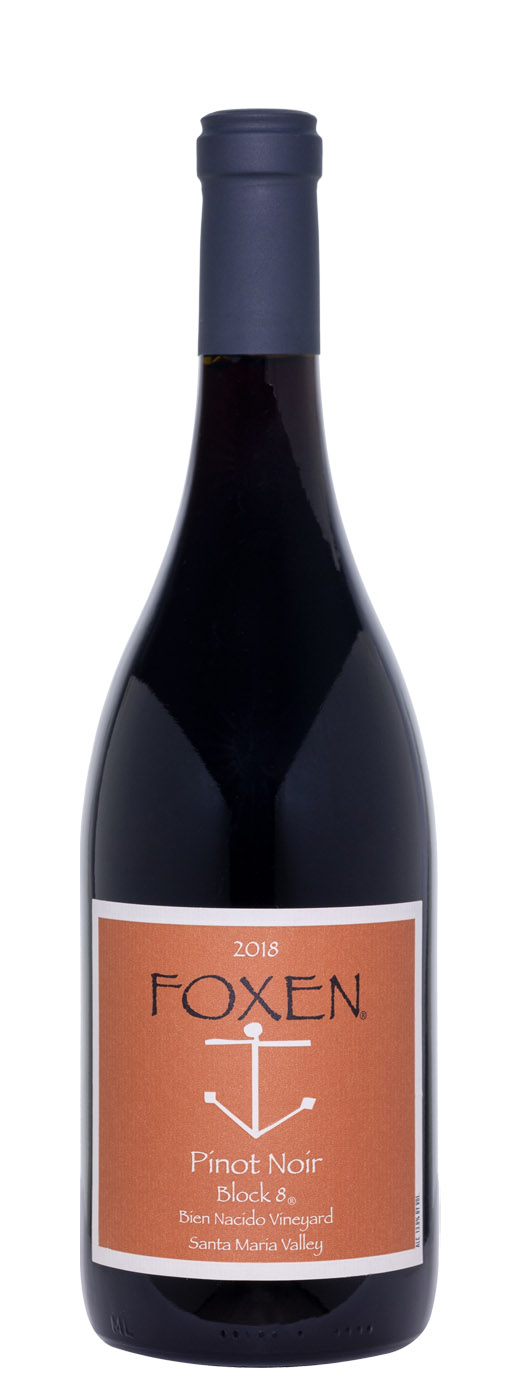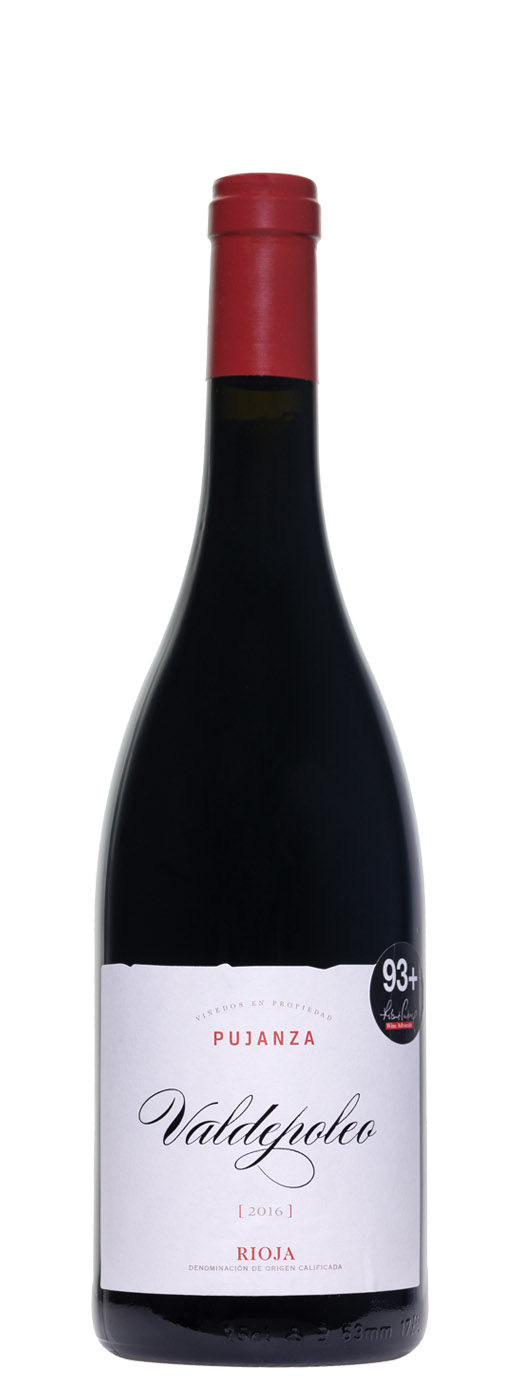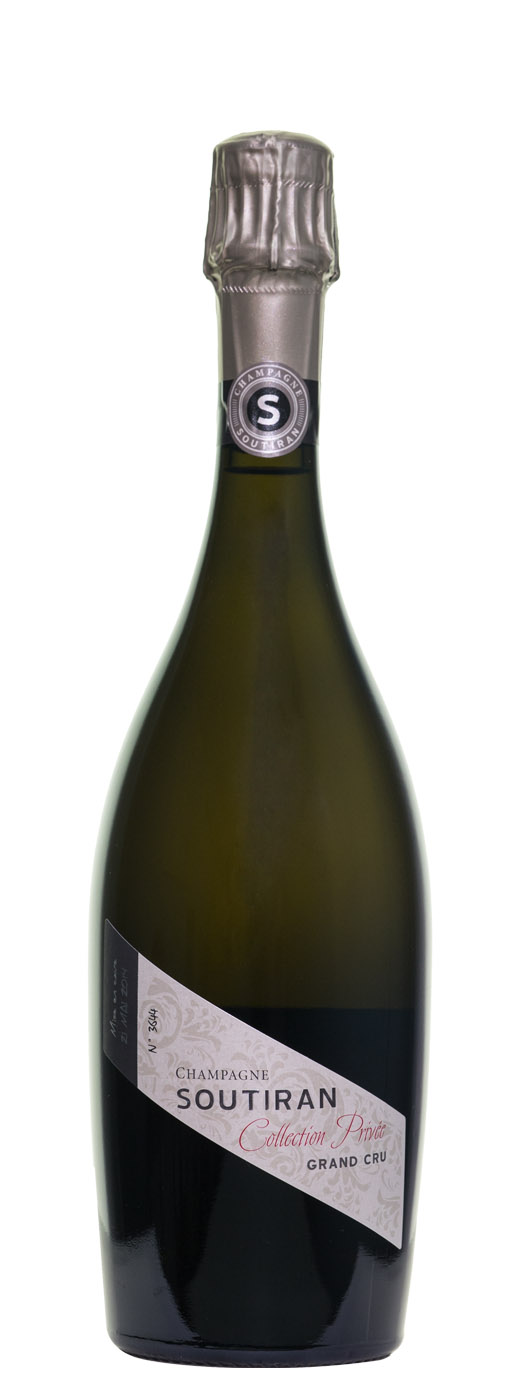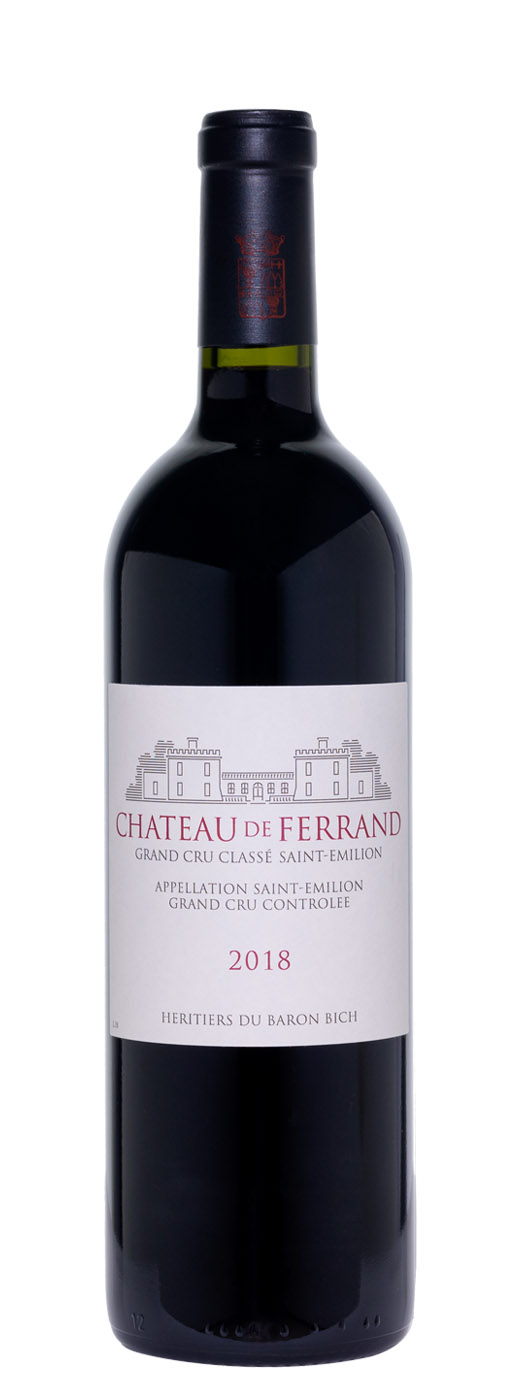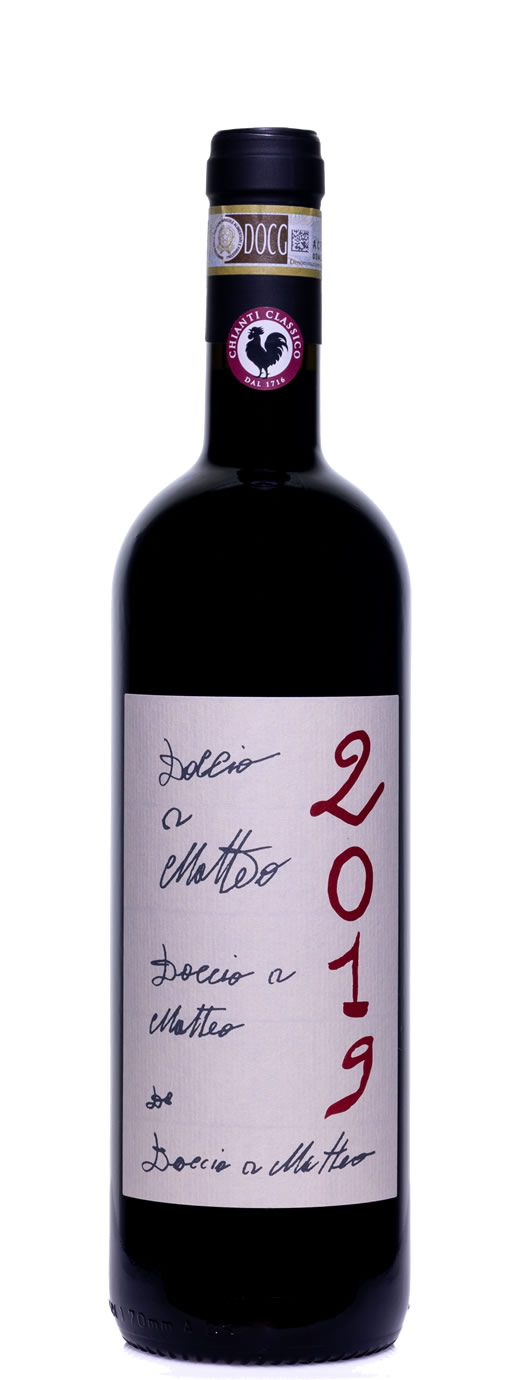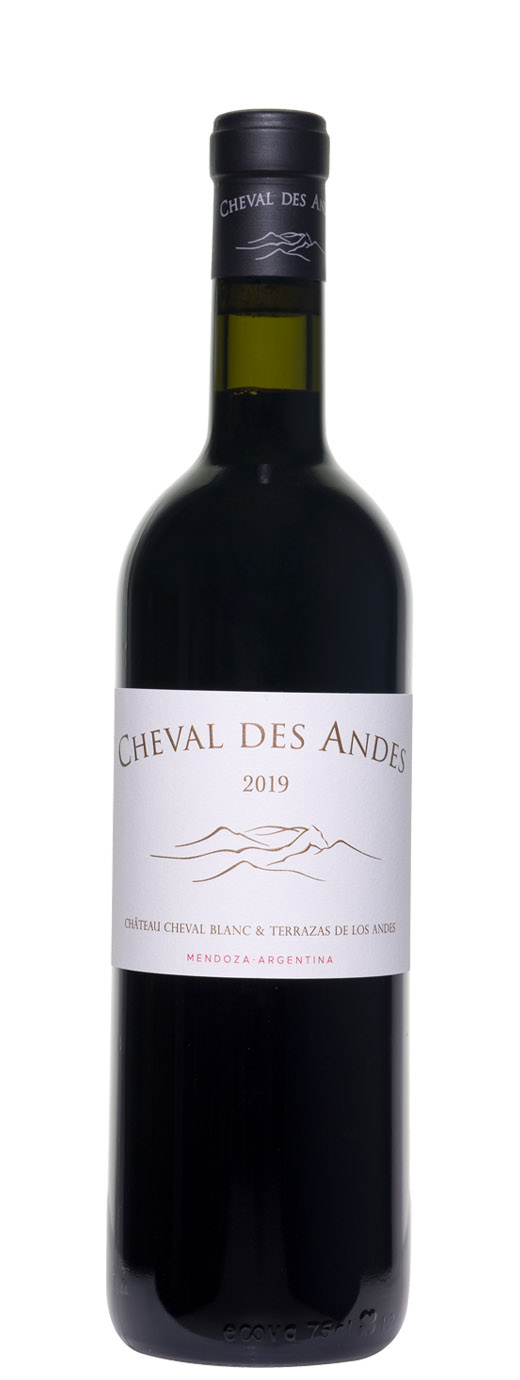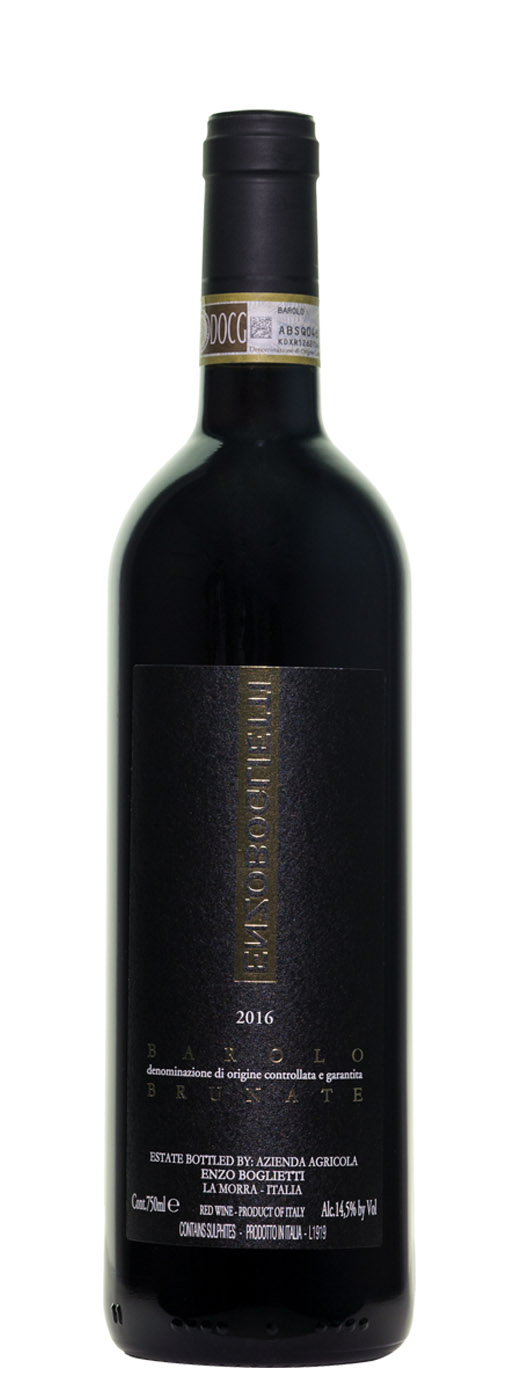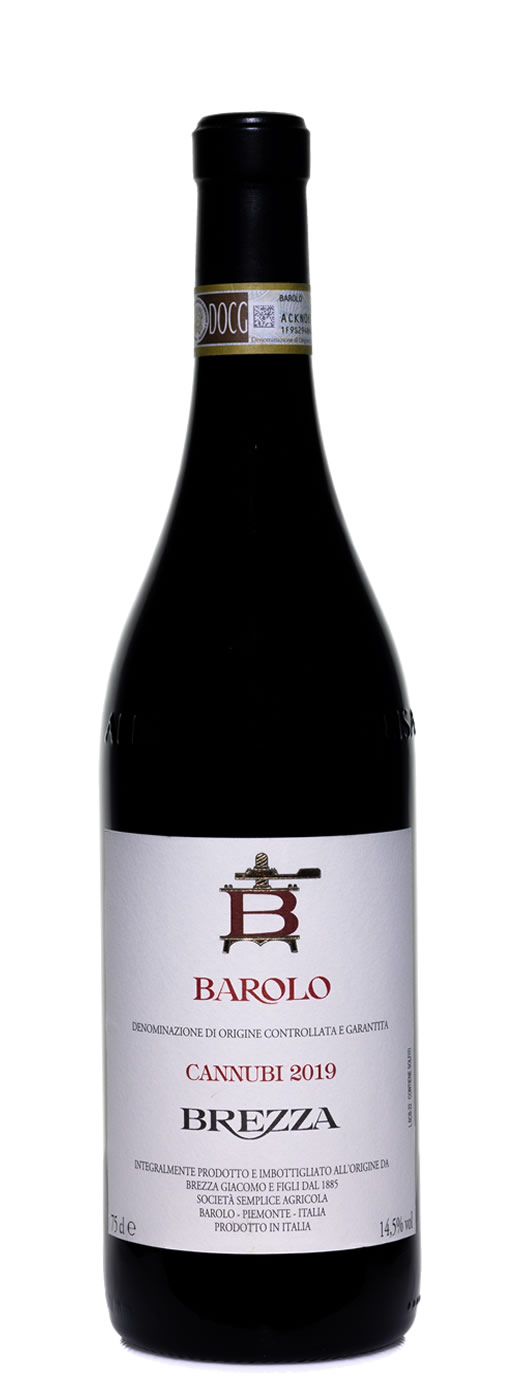BROWSE WINES
- Producer
- 1000 Stories
- 101 North
- 123 Organic
- 13 Celsius
- 14 Hands
- 15 Stars
- 1792
- 1800
- 1800 Tequila
- 1881 Napa
- 19 Crimes
- 1911
- 21 Seeds
- 2XO
- 3 Daughters Brewing
- 360
- 400 Conejos
- 5 Sentidos
- 6 O’Clock
- 689 Cellars
- 7 Deadly
- 7 Moons
- 7venth Sun Brewing Co.
- 818 Tequila
- 99 Brand
- 99 Schnapps
- A Christmann
- A to Z Wineworks
- Aalborg
- Aalto
- Abadia Retuerta
- Abeja
- Abele
- Aberfeldy
- Aberlour
- Abita
- Abita Brewing Co.
- Abreu
- Absente
- Absolut
- AC/DC
- Accendo
- Ace Premium Craft Cider
- Achaval Ferrer
- Ada Nada
- Adami
- Adega Eidos
- Adictivo
- Admiral Nelson’s
- Aerstone
- Agalima
- Agrapart
- Agricola Punica
- Agro de Bazan
- Aguardiente Antioqueno
- Agusti Torello Mata
- Aha Yeto
- Aia Vecchia
- Aime Roquesante
- Akrasia
- Alain Voge
- Alamos
- Albert Bichot
- Albert Mann
- Alberta
- Alberto Nani
- Albino Rocca
- Alcohuaz
- Alex Foillard
- Alexakis
- Alexander Valley Vineyards
- Alfred Giraud
- Algueira
- Alize
- Allan Scott
- Allegrini
- Allegro
- Alltech Lexington Brewing Co.
- Alma Negra
- Almaviva
- Aloft
- Alois Lageder
- Alonso del Yerro
- Alpha Estate
- Alpha Omega
- Alta Pavina
- Alta Vista
- Altamura
- Altano
- Altered Dimension
- Altesino
- Alto del Carmen
- Alto Limay
- Alto Moncayo
- Altos las Hormigas
- Alvaro Palacios
- Alvear
- Alverdi
- Alzinger
- Amalaya
- Amapola Creek
- Amaro dell’Etna
- Amarula
- American Anthem
- American Born
- Amethystos
- Amici
- Amiot-Servelle
- Amisfield
- Amity Vineyards
- Ampeleia
- Amstel
- Amuse Bouche
- Anakota
- Anatolikos Vineyards
- Ancho Reyes
- Anderson Valley Brewing Co.
- Andre
- Andre & Michel Quenard
- Andre Bregeon
- Andre Brunel
- Andre Clouet
- Andre Perret
- Andrea Felici
- Andrea Oberto
- Andremily
- Andrew Will Winery
- Angel’s Envy
- Angeline
- Angels & Cowboys
- Angels Ink
- Angelus
- Angostura
- Angostura Limited
- Angry Orchard
- Anheuser-Busch
- Anis del Mono
- Annabella
- Anselmo Mendes
- Ansgar Clusserath
- Antigal
- Antinori
- Ao Yun
- Aperol
- Aperture Cellars
- Aphillanthes
- Apothic
- Appleton
- Arbor Mist
- Archery Summit
- Ardbeg
- Ardnamurchan
- Argentiera
- Argiano
- Argiolas
- Argyle
- Arianna Occhipinti
- Aristocrat
- Arkenstone
- Armand de Brignac
- Arnaldo Caprai
- ArPePe
- Arrow
- Artadi
- Artazu
- ArteNOM
- Artesa
- Artezin
- Arzuaga
- Asbach
- Aster
- Astral
- Astrolabe
- Atalaya
- Atalayas de Golban
- Atauta
- Athenian Brewery
- Athletic Brewing
- Atian
- Attems
- Au Vodka
- Auguste Clape
- Augustiner-Brau
- Aumont Sake
- Ausas
- Austin Cocktails
- Austin Hope
- Auvigue
- AVA Grace
- Avaline
- Avalon
- Avantes Distillery
- Aveleda
- Averaen
- Averell Damson
- Averna
- Aviary
- Aviation
- Avignonesi
- Avion
- Avorza
- Axia
- AXR
- Azelia
- Azevedo
- Azienda Agricol
- Azienda Agricola Noah
- Azienda Agricola Tornatore
- Azienda Vitivinicola Du Cropio
- Azteca Azul
- B Side
- B. Leighton
- B.R. Cohn
- Babich
- Babylonstoren
- Bacalhoa
- Bacardi Limited
- Bacardi Party Drinks
- Bacio Divino
- Bacoo
- Badenhorst
- Badia Coltibuono
- Baileys
- Baker’s
- Bakon
- Balcones
- Balestard La Tonnelle
- Ballantine’s
- Balletto
- Ballotin
- Balvenie
- Banfi
- Banks Barbados Brewery
- Banshee
- Banyan Reserve
- Bar Dog
- Barbancourt
- Barbare
- Barberani
- Bardstown
- Barefoot
- Barenjager
- Baricci
- Barkan
- Barmen
- Barnett
- Baron de Ley
- Baron De Pichon Longueville
- Barone Fini
- Barone Ricasoli
- Barossa Valley Estate
- Barr Hill
- Barrell Bourbon
- Barrell Craft Spirits
- Barrell Vantage
- Barritt’s
- Barstow
- Bartenura
- Bartles & Jaymes
- Bartolo Mascarello
- Barton
- Barton & Guestier
- Barton’s
- Basil Hayden’s
- Basilica
- Bastianich
- Bastide Blanche
- Batavia Arrack
- Batch & Bottle
- Bauchant
- Bay Cannon Beer Co.
- Bayten
- Bazigos
- Bearface
- BeatBox
- Beau Joie
- Beaucastel
- Beaulieu Vineyard
- Beau-Sejour-Becot
- Beaux Frères
- Becherovka
- Beck’s Brewery
- Bedrock
- Beefeater
- Bel Air
- Bel Air Gloria
- Belargus
- Bell’s Brewery
- Bella Union
- Belle Glos
- Bellefont-Belcier
- Belle-Vue
- Bellevue Mondotte
- Beluga
- Belvedere
- Ben Glaetzer
- Benchmark
- Benedictine
- Benito Ferrara
- Benjamin Leroux
- Benjamin Romeo
- BenMarco
- Bennati
- BenRiach
- Benton Lane
- Benvolio
- Benziger
- Berentzen
- Bergstrom
- Beringer
- Bernard Diochon
- Bernheim
- Beronia
- Bertani
- Bertrand Ambroise
- Beso del Sol
- Bessin
- Bethel Heights
- Beychevelle
- Beyra
- Bianchi
- Bib & Tucker
- Bibi Graetz
- Bieler Pere et Fils
- Big 5
- Big Bad
- Big Cypress
- Big House
- Big Storm Brewing Co.
- Bigallet
- Billecart-Salmon
- Bindi Sergardi
- Binding Brewery
- Bird Dog
- Birgit Eichinger
- Bisci
- Biserno
- Bisol
- Bisquit DuboucheCourvoisier
- Bisson
- Bistra
- Bitburger Brewery
- Black & White
- Black Box
- Black Coral
- Black Haus
- Black Ink
- Black Magic
- Black Maple Hill
- Black Slate
- Black Stallion
- Black Tot
- Black Velvet
- Blackbird Vineyards
- Blackheart
- Blade and Bow
- Blake’s Hard Cider Co.
- Blanc de Bleu
- Blanchard Perez
- Blandy’s
- Block Nine
- Blue Chair Bay
- Blue Ice
- Blue Moon Brewing Co.
- Blue Note
- Blue Point Brewing Co.
- Blue Rock
- Blue Run Spirits
- Bluecoat
- Blufeld
- Boas Quintas
- Bodega Colome
- Bodega Gaintza
- Bodega Garzon
- Bodega Hiruzta
- Bodega K5
- Bodegas Abanico
- Bodegas Avancia
- Bodegas Bouza
- Bodegas Dehesa
- Bodegas Faustino
- Bodegas Godeval
- Bodegas Manzanos
- Bodegas Ordonez
- Bodegas Tarima
- Bodegas Urbina
- Boekenhoutskloof
- Boen
- Bogle
- Bois de Boursan
- Boissiere
- Bold Rock
- Bolla
- Bollinger
- Bols
- Bombay
- Bonal
- Bonanza
- Boneshaker
- Bonny Doon
- Bonollo
- Bonterra
- Boodles
- Booker
- Booker’s
- Booth’s
- Bootleg
- Borchetta
- Bordiga
- Borell-Diehl
- Borgogno
- Borsao
- Bortoluzzi
- Boscarelli
- Boschis
- Bosco
- Bosquet des Papes
- Boston Beer Co.
- Bota Box
- Botromagno
- Bottega S.p.A.
- Bottega Vinaia
- Bouchard
- Boutari
- Boyd & Blair
- Boyer Martenot
- Brady
- Bramare
- Branaire
- Branas Grand Poujeaux
- Brancaia
- Brancott
- Brand Napa Valley
- Brane-Cantenac
- Bravium
- Bread & Butter
- Breca
- Breckenridge
- Brew Hub
- BrewDog
- Brewer-Clifton
- Brigaldara
- Brinley Gold
- Brittan Vineyards
- Broadbent
- Broadside
- Brocard
- Brochard
- Broglia
- Broken Dreams
- Broker’s
- Brother’s Bond
- Brovia
- BroVo
- Browne
- Browne Family
- Brownstone
- Brugal
- Bruichladdich
- Brunier
- Bruno Giacosa
- Bruno Paillard
- Bruxo
- Bryant Family
- Bubba’s Secret Stills
- Bucci
- Buchanan’s
- Buck Shack
- Budureasca
- Budweiser
- Buehler Vineyards
- Buena Vista
- Buffalo Trace
- Buil & Gine
- Bulleit
- Bully Hill
- Bumbu
- Bunan
- Bunnahabhain
- Burgans
- Burgess Cellars
- Burguet
- Burnett’s
- Burst
- Bushmills
- Bushwacker
- Busnel
- Butera
- Butternut
- Buzzballz
- buzzbox
- Ca Bolani
- Ca dei Frati
- Ca’ del Bosco
- Ca’ Furlan
- Ca’ Momi
- Ca’ Rugate
- Ca’Montini
- Ca’n Verdura
- Caballito Cerrero
- Cabo Wabo
- Cabreo
- Cachaca 51
- Cade
- Cafaggio
- Caffe Lolita
- Caffo
- Caiarossa
- Cain
- Cakebread Cellars
- Calera
- Calico Jack
- Calirosa
- Callaway
- Calon Segur
- Calumet Farm
- Calvados Boulard
- Calvet-Thunevin
- Calypso
- Camarena
- Cambon la Pelouse
- Cambria
- Camensac
- Camigliano
- Camille Giroud
- Campari
- Campo al Mare
- Campo Viejo
- Can Feixes
- Canadian Club
- Canadian Hunter
- Canadian LTD
- Canadian Mist
- Canaima
- Canard
- Canard-Duchene
- Candela
- Candolini
- Candoni
- Cane Run
- Canerock
- CannaVinus
- Cannonball
- Canoe Ridge
- Canon
- Canon La Gaffeliere
- Cantemerle
- Cantenac Brown
- Cantera Negra
- Cantina Chiacchiera
- Cantina di Santadi
- Cantine Caggiano
- Cantine del Notaio
- Cantine Maschio
- Cantine Valpane
- Canton
- Canvasback
- Caol Ila
- Caparsa
- Caparzo
- Capezzana
- Caposaldo
- Cappellano
- Cappelletti
- Capriccio
- Captain Morgan
- Caravella
- Carbonnieux
- Cardamaro
- Cardenal Mendoza
- Cardinale
- Carletto
- Carlmagnus
- Carlo Rossi
- Carlos Serres
- Carlsberg
- Carmel Road
- Carmelo Patti
- Carmenet
- Carnivor
- Caro
- Carolans
- Carpano
- Carpineto
- Carta Vieja
- Cartlidge & Browne
- Cartuxa
- Casa Azul
- Casa Castilllo
- Casa Castillo
- Casa Del Sol
- Casa Dragones
- Casa Ferreirinha
- Casa Lapostolle
- Casa Lunardi
- Casa Noble
- Casals
- Casamigos
- Casanova di Neri
- Casarena
- Cascina Chicco
- Cascina degli Ulivi
- Castellare
- Castello di Albola
- Castello di Ama
- Castello di Bolgheri
- Castello di Bossi
- Castello di Gabbiano
- Castello di Neive
- Castello Poggio
- Castello Romitorio
- Castello Vicchiomaggio
- Castiglion Del Bosco
- Castillo
- Castle & Key
- Castle Rock
- Cataldi Madonna
- Catena Zapata
- Caterwaul
- Cathead Distillery
- Catherine & Pierre Breton
- Cathiard Vineyard
- Cattleya Wines
- Cave de Lugny
- Cave des Vignerons D’Estezargu
- Caves Alianca
- Caves Cooperatives de Donnas
- Cavicchioli
- Cavino
- Cavit
- Caymus
- Caymus-Suisun
- Cayuse
- Cazadores
- Cecchi
- Celler Cal Pla
- Celler Cecilio
- Celler del Roure
- Celler Sort del Castell
- Cellers Can Blau
- Cenote
- Cepa 21
- Ceretto
- Cervantes
- Cesari
- Chairman’s Reserve
- Chakras
- Chalk Hill
- Chalone
- Chambers
- Chambord
- Chamisal
- Champagne Ayala
- Champagne Collet
- Champagne de Telmont
- Champagne Devaux
- Champagne Jeeper
- Champagne Lallier
- Champagne Marie Courtin
- Champagne Savart
- Champagne Soutiran
- Champs de Provence
- Chandon
- Chang Beer
- Chanin Wine Company
- Chantegrive
- Chanteleuserie
- Chappellet
- Chapter 24
- Charles Bove
- Charles de Cazanove
- Charles Goodnight
- Charles Heidsieck
- Charles Jacquin
- Charles Joguet
- Charles Krug
- Charles Smith
- Charles Woodson’s Intercept
- Charmail
- Chartogne-Taillet
- Chartreuse
- Chasse-Spleen
- Chateau Beaumont
- Chateau Brejou Eleve
- Chateau Combel-la-Serre
- Chateau d’Auvernier
- Chateau d’Epire
- Chateau D’Esclans
- Chateau de Berne
- Chateau de Campuget
- Chateau de Chaintres
- Chateau de Ferrand
- Chateau De La Cree
- Chateau de la Nerthe
- Chateau de la Ragotiere
- Chateau de Rouanne
- Chateau de Saint Cosme
- Chateau des Bachelards
- Chateau du Gazin
- Chateau du Glana
- Chateau du Petit Thouars
- Chateau Ferrande
- Chateau Fuisse
- Chateau la Garricq
- Chateau La Grave
- Chateau La Gravette Certan
- Chateau La Nerthe
- Chateau Lafitte
- Chateau Larrivaux
- Chateau Malbec
- Chateau Miraval
- Chateau Montelena
- Chateau Sainte Marguerite
- Chateau Souverain
- Chateau St. Jean
- Chattanooga
- Chauvin
- Chehalem
- Chemin Royal
- Chemistry Wine
- Cherry Pie
- Cheurlin
- Cheval Blanc
- Cheval des Andes
- Cheveau
- Chi Chi’s
- Chiarli
- Chicken Cock
- Chila ’Orchata
- Chimay Brewery
- Chinola
- Chionetti
- Chivas Regal
- Chloe
- ChocoVine
- Chopin
- Christian Brothers
- Christophe Buisson
- Chronic Cellars
- Chronology
- Chuckle
- Ciacci Piccolomini
- Cierto
- Cigar City Brewing
- Cimarron
- Cincoro
- Cinerator
- Cinzano
- Ciroc
- Citran
- CK Mondavi
- Clan MacGregor
- Clarendelle
- Clase Azul
- Claude Riffault
- Clay Shannon
- Clean Slate
- CleanCo
- Clement Pichon
- Clerico
- Cliff Lede
- Climax by Tim Smith
- Cline Cellars
- Clipper City Brewing Co.
- Clos Apalta
- Clos Bellane
- Clos Canarelli
- Clos de Los Siete
- Clos de Papes
- Clos des Fous
- Clos des Lunes
- Clos des Rocs
- Clos du Bois
- Clos du Caillou
- Clos du Marquis
- Clos du Roy
- Clos du Val
- Clos Erasmus
- Clos Floridene
- Clos Fourtet
- Clos Grangeneuve
- Clos Henri
- Clos i Terrasses
- Clos L’Eglise
- Clos La Coutale
- Clos Larrouyat
- Clos Lunelles
- Clos Magdeleine
- Clos Pegase
- Cloudburst
- Cloudline
- Cloudy Bay
- Clubtails
- Clyde May
- Clynelish
- Cocchi
- Coche Dury
- Cockburn’s
- Cockspur
- Coconut Cartel
- Codigo 1530
- Codorniu
- Cognac Park
- Cointreau
- Col D Orcia
- Colene Clemens
- Colli di Lapio
- Collotte
- Colombo
- Colores Del Sol
- Colpetrone
- Columbia Crest
- Com Tu
- Comando G
- Combier
- Commanderie de Peyrassol
- Compass Box
- Comte Abbatucci
- Comtes Lafon
- Concannon
- Concha y Toro
- Condado de Haza
- Conjure
- Conn Valley Vineyards
- Cono Sur
- Conquista
- Contadi Castaldi
- Conte Vistarino
- Conterno Fantino
- Contesa
- Continuum
- Conundrum
- Convene
- Cook’s
- Cooks
- Cooper & Thief
- Coopers’ Craft
- Coors Brewing Co.
- Coors Brewing Company
- Copalli
- Copper Dog
- Coppersea
- Coppertail Brewing Co.
- Coppo
- Corazon
- Corbett Canyon
- Cordero di Montezemolo
- Corison
- Cornell Vineyards
- Corona
- Corralejo
- Corsair
- Coruba
- Corvo
- Corzo
- Cos d’Estournel
- Costa Tequila
- Country Boy Brewing
- Courbis
- Courvoisier
- Cousino-Macul
- Coutet
- CR Cellars
- Crabbie’s
- Crafters Union
- Cragganmore
- Craggy Range
- Crane Lake
- Cream of Kentucky
- Cristalino
- Cristom
- Croft
- Croizet
- Crooked Stave Brewery
- Crop
- CrossBarn
- Crossings
- Crowded House
- Crown Point
- Crown Royal
- Crown Valley Brewing
- Cruzan
- Crystal Head
- Crystal Palace
- Cuatro Rayas
- Cuentavinas
- Cuervo
- Cumbe
- Cupcake Vineyards
- Cusumano
- Cutty Sark
- Cutwater
- Cuvaison
- Cuvelier Los Andes
- CVNE
- Cycle Brewing
- Cynar
- Cyrus Noble
- Czechvar
- D’Aguilhe
- d’Aqueria
- D’Arche
- d’Arenberg
- D’Aristi
- d’Armailhac
- d’Arsac
- D’Aurensan
- D’Escurac
- D’Esperance
- d’Usse
- d’Yquem
- Dahlia
- Dalla Valle
- Dalwhinnie
- Damien Martin
- Damilano
- Dana Estates
- Daniel Bouland
- Daniel Chotard
- Daniel-Etienne Defaix
- Dansk Mjod
- Daou
- Darioush
- Dark Horse
- Dashwood
- David Moreau
- Day Owl
- De Belcier
- De Fargues
- De Forville
- De La Riva
- De Morgenzon
- DE Muller
- De Toren
- De Wetshof
- Deanston
- Deep Bay
- Deep Eddy
- Dehu Benoit
- Dei
- DeKuyper
- Del Maguey
- Delamain
- DeLeon
- DeLoach
- Delola
- Denner Vineyards
- Descendientes de J. Palacios
- Deschamps
- Deutz
- Devils River
- Dewar’s
- Deyrem Valentin
- Di Amore
- Di Majo
- Diatom
- Dictador
- Didier Champalou
- Dievole
- Diora
- Diplomatico
- Dirty Monkey
- Disaronno
- Distillerie des Alpes
- Do Ferreiro
- Doc Swinson
- Dogfish Head Brewery
- Dogliotti 1870
- Doladira
- Dolin
- Domaine A et P Villaine
- Domaine A.F. Gros
- Domaine Alary
- Domaine Antoine Jobard
- Domaine Arlaud
- Domaine Arretxea
- Domaine Bernard Baudry
- Domaine Bousquet
- Domaine Carneros
- Domaine Chapuis
- Domaine Comte Armand
- Domaine Coquard-Loison-Fleuro
- Domaine Couturier
- Domaine Curry
- Domaine d’Aupilhac
- Domaine de Champarlan
- Domaine de Chevalier
- Domaine de Jarras
- Domaine de l’Ile Porquerolles
- Domaine de la Charbonniere
- Domaine De La Cote
- Domaine de la Pepiere
- Domaine de la Pertuisane
- Domaine de la Sangliere
- Domaine de la Solitude
- Domaine de Montbourgeau
- Domaine des Aubuisieres
- Domaine des Lambrays
- Domaine des Malandes
- Domaine des Terres Dorees
- Domaine du Bagnol
- Domaine du Cayron
- Domaine du Gour de Chaule
- Domaine du Grand Montmirail
- Domaine du Pre Semele
- Domaine du Roc
- Domaine du Salvard
- Domaine du Viking
- Domaine Feuillat-Juillot
- Domaine Georges Noellat
- Domaine Glinavos
- Domaine Guiberteau
- Domaine Jacques Saumaize
- Domaine Jean Baptiste Senat
- Domaine Jessiaume
- Domaine La Soufrandière
- Domaine Laroche
- Domaine Leflaive
- Domaine Nico
- Domaine Nicolas Rossignol
- Domaine Niero
- Domaine Philippe Gilbert
- Domaine Rene Rostaing
- Domaine Sebastien Dampt
- Domaine Serene
- Domaine Skouras
- Domaine Sylvain Pataille
- Domaine Taupenot-Merme
- Domaine Trotereau
- Domaine Vincent Gaudry
- Domane Serrig
- Dominio Basconcillos
- Dominio de Eguren
- Dominio de Pingus
- Dominio de Tares
- Dominio del Aguila
- Dominio del Bendito
- Dominio Fournier
- Dominus
- Don Amado
- Don Julio
- Don Miguel
- Don Papa
- Don Ramon
- Dona Maria
- Dona Paula
- Doniene Gorrondona Txakolina
- Donnafugata
- DonQ
- Dortmunder Actien Brewery
- Dos Equis
- Dos Hombres
- Dos Primos
- Doubleback
- Dough Ball
- Dow’s
- Doyard
- Dr. Burklin-Wolf
- Dr. H. Thanish
- Dr. Hermann
- Dr. McGillicuddy’s
- Dr. Pauly Bergweiler
- Dragon Stout
- Drambuie
- Dreaming Tree
- Dreyer Wines
- Droin
- Drouhin
- Drouhin Vaudon
- Drumshanbo
- Dry Creek
- Drylands
- Drysack
- Du Tertre
- Dubonnet
- Ducasse
- Duck Hunter
- Duckhorn
- DuClaw Brewing Co.
- Ducru Beaucaillou
- Duggan’s Dew
- Duhart-Milon
- Dujardin
- Duke & Dame
- Dulce Vida
- DuMol
- Dunkin’ Spiked
- Dunn Vineyards
- Duorum
- Dupeuble
- Duplin
- Durfort-Vivens
- Durham Distillery
- Durieu
- Dusted Valley
- Dutton-Goldfield
- E & J
- E11EVEN
- Early Times
- Easton
- Eberle
- Ecco Domani
- Echolands
- Edge
- Edinburgh
- Edmund’s Oast Brewing Co.
- Edradour
- Educated Guess
- Efe
- Efes Beverage Group
- Effen
- Egly-Ouriet
- Egon Muller
- Egri Bikaver
- Eguren
- Einbecker Brewery
- Einstok Brewery
- Eisele Vineyard
- El Bandarra
- El Coto
- El Dorado
- El Enemigo
- El Gran Legado de Vida
- El Jimador
- El Mayor
- El Nido
- El Pino Club
- El Portillo
- El Tequileno
- El Tesoro
- El Toro
- El Vinculo
- Elena Walch
- Elijah Craig
- Elio Altare
- Elio Grasso
- Elio Perrone
- Elk Cove
- Ellman Family Vineyards
- Elouan
- Elvio Cogno
- Elvis Whiskey
- Elysian Brewery
- Emidio Pepe
- Emilio Lustau
- Emilio Moro
- Emmets
- Emmolo
- Empire Estate
- Empress 1908
- Engine
- Enrico Serafino
- EnRoute
- Enzo Boglietti
- Eppa
- Erath
- Erdinger
- Erdinger Brewery
- Eric Chevalier
- Ernesto Catena
- Ernie Els
- Errazuriz
- Escape Brewing Company
- Escorihuela Gascon
- Escudo Rojo
- Espolon
- Essentially Geared
- Estancia
- Etude
- Evan Williams
- Evening Land
- Everclear
- Evesham Wood
- Evodia
- Ex Post Facto
- Excelsior
- Eyrie Vineyards
- Ezra Brooks
- F.X. Pichler
- Fable
- Fabre Montmayou
- Fabrizia
- Faccia Brutto
- Failla
- Fairbanks
- Faire La Fete
- Falcone
- Falesco
- Falua
- Famiglia Rivetti
- Familia Nin-Ortiz
- Familia Zuccardi
- Familiar Air
- Famille Perrin
- Fantini
- Far Niente
- Faretti
- Farina
- Farmer’s
- Fat Bastard
- Fattori
- Fattoria la Massa
- Faugeres
- Faury
- Faust
- Faux Pas
- Favia
- Federalist
- Fee Brothers
- FEL
- Felsina
- Fercullen Falls
- Ferrari-Carano
- Ferreira
- Ferretti
- Fess Parker
- Fetzer
- Feudo Maccari
- Feudo Montoni
- Fever-Tree
- Fieuzal
- Fifty States
- Figeac
- Figenza
- Figgins
- Filliatreau
- Filthy
- Finca Decero
- Finest Call
- Finlandia
- Fireball
- Firefly
- Firesteed
- Fisher Vineyards
- Fishers Island
- FitVine
- Five Farms
- Five Trail
- Fix
- Fleischmann’s
- Fleur Charmante
- Fleur de Mer
- Fleurs de Prairie
- Flor de Cana
- Flora Springs
- Florida CANE
- Florida Mermaid
- Florio
- Flowers
- Foley Johnson
- Folie a Deux
- Folonari
- Fonroque
- Fonseca
- Fontanafredda
- Fontanes
- Fontenil
- Fontenille
- Fonterutoli
- Fontodi
- Fontsainte
- Foradori
- Force & Grace
- Force Majeure
- Fords
- Forge Cellars
- Forjas del Salnes
- Forman
- Foro
- Fortant
- Fortuna
- Fortunate Son
- Fossacolle
- Founders Brewing Co.
- Four Branches
- Four Corners
- Four Roses
- Four Vines
- Four Virtues
- Fourcas-Dupre
- Foursquare
- Foxen
- Foxglove
- Foxhorn Vineyards
- Fraga do Corvo
- Francis Ford Coppola
- Franciscan
- François Chidaine
- Francois Lumpp
- Francois Montand
- Francois Raveneau
- Frangelico
- Frank Family Vineyard
- Franzia
- Frapin
- Fratelli Alessandria
- Fratelli Branca
- Frecobaldi
- Fred Jerbis
- Frederic Esmonin
- Freelander
- Freeman
- Freemark Abbey
- Frei Brothers
- Freixenet
- French Blue
- Frenzy
- Fresca Mixed
- Frescobaldi
- Fresh Vine
- Frias
- Fris
- Frisk
- Frisky
- Fritz Haag
- Frontera
- Fruit & Flower
- Fuenteseca
- Fuji
- Fukano Distillery
- Fu-Ki
- Fuligni
- Fundador
- Funky Buddha Brewery
- Futo
- Fuzzy’s
- Fy
- G.E. Massenez
- G4
- Gael Petit
- Gaffel Becker & Co.
- Gai’a
- Gaja
- Galliano
- Gallo
- Gallo Family Vineyards
- Gancia
- Ganevat
- Garofoli
- Garrison Brothers
- Gary Farrell
- Gaspar’s
- Gasparilla Distillery
- Gassier
- Gaston-Chiquet
- Gato Negro
- Gator Bite
- Gazela
- Gekkeikan
- Gem & Bolt
- Gemma di Luna
- Genesee Brewing Co.
- Gentilini
- George Dickel
- George Remus
- Georges Vernay
- Gerard Bertrand
- Gerard-Tremblay
- Germain-Robin
- Geyser Peak
- Ghost Block
- Giacomo Brezza e Figli
- Giacomo Conterno
- Giant Steps
- Giesen
- Giffard
- Gin Mare
- Gin XII
- Gini
- Giodo
- Gionelli
- Giovanni Manzone
- Giovanni Rosso
- Girard
- Giraud
- Girolamo Russo
- Giscours
- Giulia Negri
- Giuliana
- Giuseppe Cortese
- Giuseppe Mascarello
- Giuseppe Quintarelli
- Glantenay
- Glazebrook
- Glen Grant
- Glen Moray
- Glen Scotia
- GlenAllachie
- Glencadam
- Glendalough
- Glenelly
- Glenfiddich
- Glengoyne
- Glenkinchie
- Glenmorangie
- Gloria
- Gloria Ferrer
- Glunz Family Winery
- Gnarly Head
- Gold’s Liquors
- Golden Road Brewing
- Golden West
- Golden Winery
- Goldschlager
- Goldschmidt
- Gonzalez Byass
- Good Money
- Goose Island Brewery
- Goose Ridge Winery
- Gordon & MacPhail
- Gordon’s
- Gosling’s
- Gosset
- Goutorbe Pere et Fils
- Gozio
- Gradis’ciutta
- Graffigna
- Graham Beck
- Graham’s
- Gramercy
- Gramona
- Gran Coramino
- Gran Duque D’Alba
- Gran Gala
- Gran Moraine
- Grand Marnier
- Grand Mayne
- Grand Puy Ducasse
- Grand Puy Lacoste
- GrandBarrail Lamarzelle Figeac
- Grander
- Grandial
- Grands Bois
- Grange Cochard
- Grant’s
- Gratien & Meyer
- Gravel Bar
- Graville Lacoste
- Gray Whale
- Grayson
- Green Bench Brewing Co.
- Green River Distilling Co.
- Greg Norman
- Grey Coast
- Grey Goose
- Greywacke
- Grgich Hills
- Grind
- Grochau Cellars
- Grolsch
- Grosjean Vins
- Groth
- Gruaud Larose
- Gruet
- Guastaferro
- Guigal
- Guillon Painturaud
- Guinness Brewery
- Guiraud
- Gulden Draak
- Gulfi
- Gundlach-Bundschu
- Guy Breton
- Guy Farge
- Guy Larmandier
- Hacker-Pschorr Brewery
- Hahn
- Haig Club
- Hakuryu
- Hakuyou
- Half Shell
- Hall
- Hamilton
- Hamilton Russell
- Hampden Estate
- Hampton Water
- Handy & Schiller
- Hanson of Sonoma
- Hanzell
- Happy Dad
- Haraki
- Haras de Pirque
- Haraszthy Family Cellars
- Hard Rock
- Hard Truth
- Harken
- Hartford Court
- Hartley
- Harveys
- Harwood
- Haut Batailley
- Haut-Bages Liberal
- Haut-Bergey
- Haut-Brion
- Haute Couture
- Haut-Simard
- Havana Club
- Hayman’s
- Heaven Hill
- HEAVENSAKE
- Hedges
- Heering
- Heidi Schrock
- Heidsieck Monopole
- Heineken
- Heinrich Reissdorf Brewery
- Heitz
- Heiwa Shuzo
- Hella Cocktail Co.
- Hendrick’s
- Hendry
- Henkell
- Hennessy
- Henri & Philippe Jouan
- Henri Boillot
- Henri Bourgeois
- Henri Champliau
- Henri Dosnon
- Henri et Gilles Buisson
- Henri Giraud
- Henriot
- Henry McKenna
- Herdade do Rocim
- Herencia Altes
- Heritage du Pic Saint Loup
- Heritiers du Comte Lafon
- Hermann J. Wiemer
- Hermanos del Villar
- Herradura
- Hess
- Heublein
- Hickinbotham
- Hidalgo
- High Noon
- High Plains
- High West
- High Wire Distilling
- Highland Park
- Highlands 41
- Hine
- Hiram Walker
- Hiro
- Hirsch
- Hirtzberger
- Hochstadter’s
- Hoegaarden Brewery
- Hofbrauhaus
- Hofstatter
- Hogue
- Honest Thief Wines
- Honig
- Hook or Crook Cellars
- Hoopes
- Hooten Young
- Hope Family Wines
- Hornitos
- Horse Soldier
- Hotel Tango
- Hourglass
- Howler Head
- Hpnotiq
- Huber
- Hudson
- Huet
- Huyghe Brewery
- Hyde Estate
- Hyland Estates
- I Custodi
- I Greppi
- i heart
- I Pastini
- I Pentri
- I.W. Harper
- Icardi
- Ice Box
- Iceberg
- Icehouse
- Idda
- Idoniko
- If You See Kay
- iichiko
- Il Conte
- Il Feuduccio
- Il Marroneto
- Il Palazzino
- Il Palazzotto
- Il Poggione
- Il Tramonto
- Ilegal
- Imagery
- Immortal Estate
- Imperial
- Inama
- Indoggo
- Indri
- Inglenook
- Ink Grade
- Innis & Gunn
- Inniskillin
- Innocent Bystander
- Intrinsic
- Invivo X, SJP
- Ioppa
- Iron + Sand
- Iron City Brewing Company
- Irvine’s
- Island Grove
- Isle of Jura
- Isole e Olena
- Istine
- Italicus
- Ixsir
- Izadi
- Izar-Leku
- J & B
- J M da Fonseca
- J Roget
- J Vineyards
- J Wray
- J. Bookwalter
- J. Lassalle
- J. Lohr
- J.P. Chenet
- Jack Daniel’s
- Jackson Morgan
- Jacob’s Creek
- Jacob’s Pardon
- Jacquart
- Jacquesson
- Jagermeister
- Jaja
- JaM Cellars
- Jam Jar
- James Bryant Hill
- James E. Pepper
- Jameson
- Jamieson Ranch
- Janasse
- Jankara
- Januik
- Janzen
- Javi Revert
- JAX
- JCB by Jean Charles Boisset
- JDub’s Brewing Co.
- Jean Dauvissat
- Jean Foillard
- Jean Grivot
- Jean Paul Thevenet
- Jean-Baptiste Adam
- Jean-Claude Boisset
- Jean-Louis Chave
- Jean-Luc Colombo
- Jean-Michel Dupré
- Jean-Paul Tollot & Anne Gros
- Jean-Pierre Bailly La Craie
- Jefferson’s
- Jermann
- Jim Barry
- Jim Beam
- Jivaeri
- Joanin Becot
- Joao Portugal Ramos
- Joel Gott
- John Barr
- John D. Taylor
- Johnnie Walker
- Johnny Drum
- JOJO
- Jolivet
- Jordan
- Jorge Ordonez
- Jose Antonio Garcia
- Jose Cuervo
- Jose Gil
- Jose Pariente
- Josef Spreitzer
- Joseph Carr
- Joseph Dorbon
- Joseph Drouhin
- Joseph Magnus
- Joseph Phelps
- Josh Cellars
- Joto
- Juan Gil
- Juggernaut
- Jules Loren
- Julius Echter
- Jullius
- Justin
- Juve Camps
- K Vintners
- Kaesler
- Kaetsu Shuzo
- Kagatsuru
- Kahlua
- Kaiken
- Kaku-Rei
- Kali Hart
- Kallstadt Kallstadter Kobnert
- Kammer
- Kamora
- Kangakoi
- Kanonkop
- Karavitakis
- Karkov
- Kasama
- Katsaros
- Ke Ke
- Keel Farms
- Keenan
- Keeper’s Heart
- Keever
- Kelley Fox
- Kelt
- Ken Wright
- Kendall-Jackson
- Kensei
- Kentucky Coffee
- Kentucky Gentleman
- Kentucky Owl
- Kentucky Vintage
- Kenwood
- Keplinger
- Kermit Lynch
- Kessler
- Ketel One
- Kettmeir
- Keush
- Khor
- Kickled Mary
- Kikusui
- Kilchoman
- Killepitsch
- Killian’s
- Kilo Kai
- Kim Crawford
- Kiminoi
- King Estate
- Kinky
- Kirin
- Kirinzan
- KirYianni
- Kistler
- Kizakura
- Klein Constantia
- Kleos
- Klinker Brick
- Knob Creek
- Knotty Vines
- Knuttel
- Kokomo
- Komos
- Kona Brewing Co.
- Kono
- Konstantin Frank
- Korbel
- Kosta Browne
- Kourtaki
- Kracher
- Kretaraki
- KRIS
- Krombacher Brewery
- Kronan
- Kronenbourg Brewery
- Krug
- Kruger-Rumpf
- Krutz Family Cellars
- Kubota
- Kuentz-Bas
- Kula
- Kuleto
- Kumeu River
- Kurvball
- Kylie Minogue
- L Aubry et Fils
- L.N. Mattei
- L’Aventure
- L’Ecole
- L’Eglise Clinet
- L’Epicourchois
- L’Evangile
- L’Usine Cellars
- La Belle
- La Cana
- La Carraia
- La Clotte
- La Colliere
- La Conseillante
- La Crema
- La Dauphine
- La Dominique
- La Favorite
- La Fiorita
- La Gaffeliere
- La Giaretta
- La Giuva
- La Gordonne
- La Grand Comtadine
- La Grange Clinet
- La Gritona
- La Historia de Nosotros
- La Horra
- La Jota
- La Lagune
- La Marca
- La Mascaronne
- La Mission Haut-Brion
- La Mondotte
- La Posta
- La Prevostura
- La Rioja Alta
- La Rose Perriere
- La Scolca
- La Sirena
- La Soumade
- La Spinetta
- La Tour Carnet
- La Valentina
- La Vieille Cure
- La Vieille Ferme
- Labatt Brewing Co.
- Labegorce
- Laberinto
- Lackner-Tinnacher
- Lacoste Borie
- LaCroix
- Ladoucette
- Lady Bligh
- Lafage
- Lafite Rothschild
- Lafont Fourcat
- Lagar de Besada
- Lagavulin
- Lagler
- Lagrange
- Lagunitas Brewing Co.
- Laherte Freres
- Lail Vineyards
- Laird & Company
- Lakeridge
- Lalo
- LaLuca
- Lamarche
- Lambert de Seyssel
- Lana
- Lancaster Estate
- LandShark
- Lanessan
- Langmeil
- Langoa Barton
- Language of Yes
- Lanson
- Laphroaig
- Lapierre
- Lapis
- Larceny
- Larcis Ducasse
- Larkmead
- Larmandier-Bernier
- Laroche Mas La Chevaliere
- Laroque
- Laroze
- Larressingle
- Larrivet Haut Brion
- Larusee
- Lascombes
- Latour
- LaTour Martillac
- Laurent-Perrier
- Laurenz V.
- Law Estate
- Layer Cake
- Lazzaroni
- Le Cinciole
- Le Clos du Beau-Pere
- Le Contesse
- Le Crocke
- Le Gay
- Le Pupille
- Leblon
- Leclerc Briant
- Leefield Station
- Leeuwin
- Left Hand Brewing Co.
- Legent
- Leinenkugel Brewing Co.
- Lemelson
- Lemon Hart
- Leon Barral
- Leone de Castris
- Leonetti
- Leopold Bros
- Leoville Barton
- Leoville Las Cases
- Leoville Poyferre
- Lepanto
- Leroux
- Les Carmes Haut-Brion
- Les Champs
- Les Gravieres
- Les Trois Croix
- Les Valentines
- Leviathan
- Lewis Cellars
- Li Veli
- Libelula
- Liberty Creek
- Liberty School
- Librandi
- Licor 43
- Lifevine
- Lighthouse
- Lillet
- Limavady
- Limerick Lane
- Lindeman’s
- Lindemans Brewery
- Line 39
- Lingua Franca
- Lini Oreste e Figli
- Linie
- Lioco
- Lionel Faury
- Liquid Alchemist
- Liquid Farm
- Livio Felluga
- Livio Sassetti
- Llord’s
- Lobos 1707
- Locations
- Loch Lomond
- Lock Stock & Barrel
- Lola
- Lolailo
- Lolea
- Lombardo
- London
- Long Meadow Ranch
- Long Shadows
- Longevity
- Loosen Brothers
- Lopez de Heredia
- Lord Calvert
- Lorenza Wine
- Los Arango
- Los Bermejos
- Los Siete Misterios
- Los Sundays
- Los Vascos
- Los Vecinos del Campo
- Losada
- Lost Coast Brewery
- Lou Dumont
- Louis Bernard
- Louis Dumont
- Louis Jadot
- Louis Latour
- Louis Martini
- Louis Michel
- Louis Perdrier
- Louis Pommery
- Louis Roederer
- Love Hammer
- Luc Belaire
- Luca
- Luca Paretti
- Luccio
- Luce della Vite
- Lucia by Pisoni
- Lucien Albrecht
- Lucien Crochet
- Lucien Jacob
- Lucien Lardy
- Lucky Buddha
- Luig Bosca
- Luigi Baudana
- Luigi Einaudi
- Luigi Righetti
- Luis Pato
- Luis Perez
- Luke
- Luksusowa
- Luna Nuda
- Lunazul
- Lungarotti
- Lutum
- Luxardo
- Luzon
- Lvov
- Lynch-Bages
- Lynsolence
- M.Chapoutier
- Maal
- Mac and Billy
- Macauley
- Macphail
- MacRostie
- Madria Sangria
- Maestro Dobel
- Magellan
- Maison L’Envoye
- Maison Leffe
- Maison Nicolas
- Maison No. 9
- Maison Roche de Bellene
- Maison Surrenne
- Maker’s Mark
- Malamatina
- Malartic Lagraviere
- Malene
- Malescot St. Exupery
- Malfy
- Malibu
- Malibu Splash
- MAN Family Wines
- Mancino
- Mandarine Napoleon
- Mandois
- Mango Shotta
- Manischewitz
- Marabino
- Marañones
- Maraska
- Marc Hebrart
- Marcarini
- Marcati
- Marcelo Pelleriti
- Marchesi de Frescobaldi
- Marchesi Fumanelli
- Marchetti
- Marcoux
- Marenco
- Marengo
- Margaritaville
- Margaux
- Marguet
- Marie Brizard
- Marietta
- Marina Cvetic
- Marine Layer
- Mark West
- Markham
- Marojallia
- Marques de Caceres
- Marques de Gelida
- Marques de Legarda
- Marques de Murrieta
- Marques de Riscal
- Marquis D’Alesme Becker
- Martell
- Martin Miller
- Martin Ray
- Martinelli
- Martinez Bujanda
- Martinez Lacuesta
- Martini & Rossi
- Martinsancho
- Mas Alta
- Mas Martinet
- Masahiro
- Masciarelli
- Masi
- Maso Poli
- Massaya
- Masseria Li Veli
- Massimo Clerico
- Master of Mixes
- Masterson’s
- Mastroberardino
- Mata
- Matanzas Creek
- Matarromera
- Matchbook
- Mateus
- Mathilde
- Matias Riccitelli
- Matsui
- Matsunoi
- Matthews Estate
- Matthiasson
- Matua
- Mauritson
- Mauritson Rockpile Winery
- Mauro
- Mauvesin Barton
- Maxem
- Maxime Magnon
- Maximin Grunhaus
- Mayacamas
- Mayacayas
- Maybach Family Vineyards
- Mazzei
- Mazzi
- McBride Sisters
- McConnell’s
- McCormick
- McKenzie’s
- McManis
- McPrice Myers
- Medley Bros
- Meili
- Meiomi
- Meletti
- Melka
- Melville
- Ménage à Trois
- Meo-Camuzet
- Mer Soleil
- Mercat
- Mercer
- Mercouri Estate
- Merkelbach
- Merry Edwards
- Merryvale
- Merum Priorati
- Merus
- Mesquida Mora
- Metaxa
- Mettler
- Meukow
- Meulenhof
- Mey Icki
- Meyney
- Mezcal El Silencio
- Mezcal Union
- Mezcalero
- Mezzacorona
- Mi Campo
- Miami Club
- Michael & David Phillips
- Michael David
- Michael Mondavi
- Michel Lafarge
- Michel Magnien
- Michelangelo
- Michele Chiarlo
- Michele Satta
- Michelob
- Michter’s
- Mickey’s
- Midleton
- Midnight Moon
- Midori
- Mijenta
- Mike’s Hard Lemonade Co.
- Milagro
- Milbrandt Vineyards
- Miles
- Milk & Honey M&H
- Miller Brewing Co.
- Mind & Body
- Miner
- Minuty
- Mionetto
- Mirassou
- Mitolo
- Moccagatta
- Modelo Brewery
- Moet & Chandon
- Mogen David
- Mohua
- Molinari
- Mollydooker
- Molson Brewery
- Mon Frere
- Monaco Cocktail
- Monastero
- Monchhof
- Monin
- Monkey 47
- Monkey Shoulder
- Monsanto
- Monster The Beast Unleashed
- Monte Alban
- Monte Faustino
- Montecillo
- Montelobos
- Montenegro
- Montepeloso
- Monteraponi
- Montes
- Montevina
- Montezuma
- Montille
- Montisci
- Montrose
- Montsecano
- Moosehead Brewery
- Moretti Beer
- Morgan
- Morgante
- Morisfarms
- Morland Brewery
- Morlet
- Mortlach
- MoShine
- Mosquita Muerta
- Moulin du Cadet
- Mount Eden
- Mount Gay
- Mount Peak
- Mount Veeder
- Mouton Rothschild
- Mozart
- Mr Black Coffee and Spirit
- Mr. & Mrs. T
- Mr. Boston
- Mr. Pickles
- Mr. Tom’s
- Mt Difficulty
- Mt. Brave
- Muga
- Mugneret-Gibourg
- Mugnier
- Mulderbosch
- Muller-Catoir
- Mumm
- Munyon’s
- Mur Mur
- Murphy-Goode
- Musar
- Myers’s
- Mylonas
- Mythos Brewery
- Naia
- Naked Malt
- Napa Cellars
- Nardini
- Natty Daddy
- Natural Ice
- Natural Light
- Nautilus
- Navarre
- Nc’Nean
- Neft
- Negly
- Neisson
- Nelson Bros
- Neon Zebra
- Neta
- New Age
- New Amsterdam
- New Belgium Brewing Co.
- New Planet Brewery
- New Riff
- Newcastle
- Newton
- Next Round Cocktails
- Neyers
- Nicholas Feuillatte
- Nickel & Nickel
- Nicolas Feuillatte
- Nicolas-Jay
- Nicole Chanrion
- Nielson
- Nielson by Byron
- Nieto Senetiner
- Nigl
- Nikka
- Niner
- Nino Franco
- Nishide Shuzo
- Nit de Nin
- No. 3
- Noah’s Mill
- Nobilo
- Noble Oak
- Noble Vines
- Noca
- Noemia de Patagonia
- Nola Grace
- Nolet’s
- Nomad
- Nomine-Renard
- Nonino
- Nora
- Nordes
- North Coast Brewing Co.
- Norton
- Notorious Pink
- Novellum
- Nozzole
- NueveUno
- Nulu
- Numanthia
- Nutrl
- Nuvo
- Nux Alpina
- Nyak Cognac
- O’Doul’s
- O’Reillys
- O’rte
- O’Shaughnessy
- Oak & Eden
- Oak Ridge Winery
- Obalo
- Oban
- Oberon
- Occidental
- Ocean
- Odette
- Odyssee
- Ohishi Distillery
- Okocim Brewery
- Old Camp
- Old Elk
- Old Forester
- Old Grand-Dad
- Old Monk
- Old Overholt
- Old St. Pete
- Old Thompson
- Ole Smoky
- Oliver Winery
- Olivier Riviere
- Olmeca
- Ology Brewing
- On The Rocks
- Once Upon A Vine
- Onda
- Ontanon
- Opaque
- Opici
- Opolo Vineyards
- Opus One
- Original Sin
- Orin Swift
- Orinda Hayes
- Orion Wines
- Orma
- Ormes de Pez
- Ornellaia
- Orphan Barrel
- Orube
- Osborne
- Ossian
- Ostatu
- Ott
- Ottella
- Otto’s
- Outerbound
- Ouzo #12
- Overstone
- Ovid Winery
- Ovis
- Ovum
- Oyster Bay
- P. Bouley
- Pabst Brewing Co.
- Pacific Rim
- Pacifico
- Paco & Lola
- Paddy’s
- Padre Azul
- Pago de Los Capellanes
- Pahlmeyer
- Paitin
- Palacios Remondo
- Paladar
- Palazzo Wine
- Palivou Estate
- Pallavicini
- Pallieres
- Pallini
- PAMA
- Panizzi
- Paolo Conterno
- Paolo Saracco
- Paolo Scavino
- Papa’s Pilar
- Papalin
- Pape Clement
- Paradis
- Parducci
- Parenchère
- Parrot Bay
- Partida
- Partner
- Parusso
- Pascal Aufranc
- Pascal Janvier
- Pascual Toso
- Paso-D’Oro
- Pasote
- Passoa
- Pasxa
- Patrick Bottex
- Patrimony
- Patron
- Patsch
- Patty Green
- Patz & Hall
- Paul Anheuser
- Paul Bara
- Paul Blanck
- Paul Dolan
- Paul Hobbs
- Paul Jaboulet
- Paul Lato
- Paul Masson
- Paul Pernot
- Paula Kornell
- Paulaner Brewery
- Paveil de Luze
- Pavelot
- Pavie
- Pavie Decesse
- Pavillon Blanc
- Paydirt
- Pazo da Boucina
- Pazo de Barrantes
- Pazo de Senorans
- Pazos de Lusco
- Peake Ranch
- Peay
- Pecchenino
- Pedesclaux
- Pedra Cancela
- Pedroncelli
- Pegau
- Pehu-Simonet
- Peirano Estate
- Peirson Meyer
- Peju
- Penderyn
- Pendleton
- Pendulum
- Penelope Bourbon
- Penfolds
- Peninsola
- Penley
- Penner-Ash
- Pennsylvania Dutch
- Per Se
- Perchance
- Pere Labat
- Perfect Season
- Perliss
- Pernod
- Pernod Ricard Hellas
- Peroni
- Perrier-Jouet
- Perrin & Fils
- Pertinace
- Perusset
- Pesquera
- Pesquie
- Peter Jakob Kuhn
- Peter Lauer
- Peter Michael
- Petit Gravet
- Petri
- Petrolo
- Pewsey Vale
- Peyrabon
- Phil Long
- Philadelphia
- Philippe Chavy
- Philippe Raimbault
- Philipponnat
- Phillips Distilling Company
- Piancornello
- Pichler-Krutzler
- Pichon Longueville Lalande
- Picket Fence
- Pico Maccario
- Pierde Almas
- Piero Benevelli
- Pieropan
- Pierre Gelin
- Pierre Gimonnet
- Pierre Guillemot
- Pierre Paillard
- Pierre Peters
- Pierre Usseglio
- Pietradolce
- Pighin
- Pilsner Urquell
- Pimm’s
- Pinaq
- Pine Barrens
- Pine Ridge
- Pinnacle
- Pintia
- Pio Cesare
- Piper Sonoma
- Pisco Capel
- Pisoni
- Pitu
- Planeta
- Plantation
- Platinum
- Play Hard
- Plomari
- Plumeshu
- Plumpjack
- Plymouth
- PM Spirits Project
- Podere le Ripi
- Poggio al Tesoro
- Poggio Antico
- Poggio Scalette
- Pol Roger
- Poliziano
- Pommery
- Pomp & Whimsy
- Ponche Crema
- Pontet Canet
- Ponzi
- Popov
- Portlandia
- Portmagee
- Potazzine
- Potensac
- Poujeaux
- Powers
- Pra
- Prager
- Prairie Artisan Ales
- Prairie Organic
- Praline
- Predator
- Prescription
- Presidente
- Pride
- Priest Ranch
- Prieure de Saint-Ceols
- Prieure Lichine
- Primarius
- Primo 1861
- Primus
- Proclamation
- Produttori del Barbaresco
- Proper Twelve
- Prophecy
- Prospero
- Protos
- Provenance
- Prunotto
- Puech-Haut
- Puerto De Indias
- Puiatti
- Pujanza
- Pulenta
- Pure Kentucky
- Purity
- Purkhart
- Purlieu
- Purple Cowboy
- Purple Hands
- Pusser’s
- Pyrat
- Quady
- Quaglia
- Querceto
- Querciabella
- Quilt
- Quinta do Carmo
- Quinta do Noval
- Quinta Nova
- Quinta Vale D. Maria
- Quintessa
- R. Jelinek
- Raats
- Rabbit Hole
- Rabble
- Racines
- Radikon
- Raeburn
- Raen
- Rain
- Rainstorm
- Ram’s Point
- Ramazzotti
- Ramey
- Ramon Bilbao
- Ramonet
- Ramos Pinto
- Rancho La Gloria
- Rancho Las Hermanas
- Ransom
- Rapaura Springs
- Rapet
- Rare Perfection
- Rattlesnake Rosie’s
- Raul Perez
- Rauzan Segla
- Ravel & Stitch
- Raventos i Blanc
- Raymond
- Raymond Usseglio
- Raynal
- Razzouk
- Real Sangria
- Realm Cellars
- Reata
- Rebecca Creek Distillery
- Rebel Yell
- Rebellious
- Recanati
- Recchia
- Rectoral de Amandi
- Red Diamond
- Red Door
- Red Eye Louie’s
- Red Horse
- Red Stag
- Red Stripe
- Redbreast
- Redbridge
- Redd’s Brewing Company
- Redemption Rye
- Redneck Riviera
- Redwood Empire
- Regis Bouvier
- Regis Minet
- Remelluri
- Remirez de Ganuza
- Remoissenet
- Remy Martin
- Renato Ratti Winery
- Rene Geoffroy
- Resalte de Peñafiel
- Resonance
- Reuilly
- Revel Stoke
- Rex Goliath
- Rex Hill
- Rey Azul
- Rey Sol
- Reyka
- Reynvaan
- Rhiannon
- Rhum Barbancourt
- Rhum Clement
- Riazul
- Ricacha
- Ricasoli
- Rich & Rare
- Rickshaw
- Ridge
- Rieussec
- Rihaku Shuzo
- Riondo
- Ripeau
- Rippon
- Risata
- Rittenhouse
- Ritual Zero Proof
- Riunite
- Riva De La Rosa
- Rivetto
- Roagna
- Robert Biale
- Robert Craig
- Robert Hall
- Robert Mondavi
- Robert Oatley
- Robert Weil
- Roberto Voerzio
- Robertson Winery
- Rocca della Macie
- Rocca di Montemassi
- Rocche Costamagna
- Rochioli
- Rock N Roll
- Rockey’s
- Rockwell
- Roco
- Roda
- Rodney Strong
- Roederer Estate
- Roger Coulon
- Roger Goulart
- Roger Groult
- Roger Sabon
- Rogue Vine
- Roland Lavantureux
- Rolling Rock
- Romana
- Romano Dal Forno
- Romate
- Rombauer
- Rompope Coronado
- Ron Abuelo
- Ron Barcelo
- Ron Botran
- Ron Carlos
- Ron Centenario
- Ron del Barrilito
- Ron Matusalem
- Ron Pampero
- Ron Rubin
- Ron Rubin Winery
- Ron Viejo de Caldas
- Ron Zacapa
- RonDiaz
- Ronrico
- Roots Run Deep
- Roscato
- Rose All Day
- Roserock
- Roth
- Rothman & Winter
- Rothschild & Vega Sicilia
- Rough Rider
- Roulaison
- Roulot
- Round Pond
- Routestock
- Rovellotti
- Row Eleven
- Rowan’s Creek
- Royal Jamaican
- Ruby Red Rosé
- Ruca Malen
- Rudd Estate
- Ruffino
- Rui Roboredo Madeira
- Ruinart
- RumChata
- Rumcojones
- RumHaven
- Rumple Minze
- Ruskova
- Russell’s Reserve
- Russian Standard
- Rust en Vrede
- Ruta 22
- Rutherford Hill
- Rutherford Ranch
- Rutherford Wine Company
- Ryan’s
- Sabate i Coca
- Sabroso
- Sadie Family
- Sailor Jerry
- Saint Clair
- Saint Cosme
- Saint Damien
- Saint Pierre
- Saint-Hilaire
- Salers Gentiane
- Saltwater Woody
- Salvador’s
- Samuel Adams
- Samuel Billaud
- Samuel Smith’s Brewery
- San Antonio
- San Antonio Winery
- San Cosme
- San Felice
- San Fereolo
- San Filippo
- San Giusto A Rentennano
- San Marzano
- San Pedro
- San Roman
- San Salvatore
- San Sebastian
- San Vicente
- Sandeman
- Sandhi
- Sandoval
- Sandro Fay
- Sansonina
- Sant’Antonio
- Santa Carolina
- Santa Cristina
- Santa Ema
- Santa Margherita
- Santa Marina
- Santa Rita
- Santa Teresa
- Santo
- Santos
- Sapporo Brewery
- Sauvion
- Sauza
- Savage & Cooke
- Savary
- Savory & James
- Saxum
- Sazerac
- Scarbolo
- Scarecrow
- Scarlet Ibis
- Scarlet Vine
- Scarpetta
- Scattered Peaks
- Schäfer-Fröhlich
- Scharffenberger
- Schilling Cider
- Schiopetto
- Schladerer
- Schlichte
- Schloss Gobelsburg
- Schloss Vollrads
- Schlumberger
- Schmitt Sohne
- Schoffit
- Schrader
- Schramsberg
- Schug
- Sclavos
- Scoresby
- Scott Family Estate
- Scotto Cellars
- Scotto Family Cellars
- Se Busca
- Sea Sun
- Seaglass
- Seagram’s
- Seagram’s Escapes
- Sean Minor
- Sebastiani
- Secret Mistress
- Seedlip
- Seghesio
- Segura Viudas
- Selby
- Select Club
- Sella Antica
- Selvapiana
- Semeli
- Send Nudes
- Senejac
- Senorio Pecina
- Serge et Filles Dagueneau
- Serial
- Servin
- Sesti
- Sette Ponti
- Seven Apart
- Seven Daughters
- Seventy Five
- Sexual Chocolate
- Shafer
- Shannon Ridge
- Shaw
- Shaya
- Sheep Dip
- Sheep Dog
- Sheffield
- Shibata
- Shiner
- Sho Chiku Bai
- Shock Top
- Sia
- Siduri
- Siempre
- Sierra Cantabria
- Sierra del Mar
- Sierra Nevada Brewing Co.
- Siesta Key
- Siete Leguas
- Sigalas
- Sigalas Rabaud
- Silent Pool
- Silk & Spice
- Silks
- Silver
- Silver Ghost
- Silver Oak
- Silver Palm
- Silver Totem
- Silverado
- Simi
- Simonet
- Simple Life
- Simply Spiked
- Sine Qua Non
- Sinegal
- Singha
- Sipsmith
- Six & Twenty
- Sixpoint Brewery
- Sixto
- Skinos
- Skol
- Skrewball
- Skyy
- Slam Dunk
- Slane
- Slow Press
- Small Town Brewery
- Smirnoff
- Smirnoff Ice
- Smirnoff Zero Sugar Infusions
- Smith & Cross
- Smith & Hook
- Smith Haut Lafitte
- Smooth Ambler
- Snowden
- Sobieski
- Soggy Dollar
- Soho
- Sokol Blosser
- Solar Viejo
- Solena
- Solerno
- Solomon Hills
- Son of Liberty
- Sonoma-Cutrer
- Soonhari
- Soter
- SOTO
- Sottimano
- Soudars
- Soul
- Soutard-Cadet
- Southbound
- Southern Comfort
- Southern Tier Brewing Co.
- Spaten Franziskaner Brau
- Spazio
- Spellbound
- Speri
- Sperino
- Speyburn
- Spot Whiskey
- Spottswoode
- Squealing Pig
- St Huberts
- St Innocent
- St. Aix
- St. Andre de Figuiere
- St. Augustine Distillery
- St. Bernardus Brewery
- St. Brendan’s
- St. Elizabeth
- St. Francis
- St. George
- St. Germain
- St. Pauli Brewery
- St. Remy
- St. Supery
- St. Urbans-Hof
- Stag’s Leap Wine Cellars
- Staglin
- Stags’ Leap Winery
- Standish
- Starborough
- Starling Castle
- Starmont
- Starward
- Statti
- Stave & Steel
- Ste. Michelle
- Steele
- Stefano Massone
- Stella Artois Brewery
- Stella Crinita
- Stella Rosa
- Stephane Magnien
- Sterling
- Stewart Cellars
- Stiegl Brewery
- Stillhouse
- Stock
- Stolichnaya
- Stoller
- Stolpman Vineyards
- Stone Brewing Co.
- Stoneleigh
- Stones
- Stonestreet
- Storypoint
- Stratton Lummis
- Stray Dog
- Strega
- Stroh
- Strongbow
- Suavia
- Substance
- Sudiurautu
- Suduiraut
- Suertes del Marques
- Sugarlands
- Sula Vineyards
- Summer Dreams
- Summers Estate
- Sun Cruiser
- Sun Goddess
- Sunny D
- Sunny Wines
- Suntory
- Superbird
- Surfside
- Susana Balbo
- Sutter Home
- Svedka
- Swanson
- Sweet Amber
- SweetWater Brewing Co.
- Syltbar
- Sylvain Bailly
- Taaibosch
- Taboadella
- Tahuan
- Taittinger
- Takamine
- Takara
- Taken
- Talbot
- Talbott
- Talisker
- Talley
- Tamber Bey
- Tamdhu
- Tampa Bay Brewing Company
- Tanduay
- Tanqueray
- Tanteo
- Tapatio
- Tapiz
- Tarantula
- Tardieu Laurent
- Tasca d’Almerita
- TATE
- Tate
- Tavignano
- Taylor
- Taylor Fladgate
- Teacher’s
- Tears of Llorona
- Tecate
- Tedeschi
- Teeling
- Telmo Rodriguez
- Tempier
- Tempus Fugit
- Ten High
- Tensley Wines
- Tenuta d’Ornellaia
- Tenuta dell’Ornellaia
- Tenuta delle Terre Nere
- Tenuta di Arceno
- Tenuta di Ceppaiano
- Tenuta le Calcinaie
- Tenuta Olim Bauda
- Tenuta Polvaro
- Tenuta San Guido
- Tenuta Sant’Anna
- Tenuta Sassoregale
- Tenute Neirano
- Tepozan
- Tequila 1921
- Tequila 512
- Tequila Ocho
- Tequila Rose
- Teremana
- Terlano
- Terlato Vineyards
- Terra d’Aligi
- Terra Valentine
- Terra Vega
- Terrabianca
- TerraNoble
- Terras Gauda
- Terrazas de Los Andes
- Terredora
- Terroir Al Limit
- Teryan
- Teso la Monja
- Tesseron
- Tesseron Estate
- Tether
- Texas Roadhouse
- Textbook
- Thatcher’s
- The Bloody Buddy
- The Botanist
- The Calling
- The Club
- The Crane Assembly
- The Critic
- The Dalmore
- The Dimple Pinch
- The Exclusive Malts
- The Famous Grouse
- The Fighting 69th Regiment
- The Finnish Long Drink
- The Four Graces
- The GlenDronach
- The Glenlivet
- The Glenrothes
- The Hidden Sea
- The Infamous Goose
- The Kraken
- The Macallan
- The Ned
- The Pinot Project
- The Prisoner Wine Company
- The Roaster’s Daughter
- The Seeker
- The Sexton
- The Simple Grape
- The Singleton
- The Soldier
- The Specialyst
- The Walls
- Thibault Liger-Belair
- Thick Skinned
- Thienelt
- Thistle & Thorn
- Thivin
- Three Finger Jack
- Three Olives
- Three Pears
- Three Sticks
- Three Wine Company
- Thunevin-Calvet
- Thymiopoulos
- Tia Maria
- Tiberio
- Tiefenbrunner
- Tikal
- Tikves
- Tilia
- Tincup
- TintoNegro
- Tio Pepe
- Tip Top Proper Cocktails
- Tiramisu
- Tito’s
- Titus
- To Kalon Vineyard Co.
- Toad Hollow
- Toasted Head
- Tokara
- Tolaini
- Tomas Postigo
- Tomatin
- Tomintoul
- Tommaso Bussola
- Tor Kenward
- Tor Wines
- Torbreck
- Torello
- Tormaresca
- Toro Albala
- Torre d’Orti
- Torre de Ona
- Torremilanos
- Torres
- Torresella
- Toschi
- Tr3smano
- Trader Vic’s
- Trapiche
- Traveller
- Treana
- Trediberri
- Trentadue
- Tres Agaves
- Tribuno
- Tribute
- Trico
- Tripping Animals Brewing
- Trivento
- Trois Toits
- Tropical Moscato
- Troplong Mondot
- Troupis
- Truchard
- True Myth
- Truly
- Truman
- Tsantali
- Tsiakkas
- Tsingtao Brewery
- Tsukinowa
- Tua Rita
- Tuaca
- Tucher Brau
- Tullamore Dew
- Tullibardine
- Turley
- Turnbull Wine Cellars
- Twisted Tea
- Two Fingers
- Two Hands
- Two James
- Twomey
- TX
- Txomin Etxaniz
- Ty Ku
- Tyler
- Tyler Winery
- Typesetter
- Uccelliera
- Ultimate Provence
- Umani
- Uncle Nearest
- Uncle Val’s
- Underwood
- Une Femme
- Unibroue
- Union Forge
- Union Wine Co.
- Unrated
- Uppercut
- UV
- Vaglio
- Vago
- Vajra
- Val di Suga
- Valandraud
- Valckenberg
- Valdemonxes
- Valderiz
- Valle Reale
- Valravn
- Van Duzer
- Van Gogh
- Vannieres
- Vassaltis
- Vasse Felix
- Vavasour
- Vega Sicilia
- Venge
- Venica & Venica
- Ver Sacrum
- Veramonte
- Verbena
- Verdi
- Verino
- Verite
- Verpoorten
- Very
- Very Olde St. Nick
- Vetus
- Veuve Clicquot Ponsardin
- Veuve du Vernay
- Veuve Fourny & Fils
- Via Alpina
- Viarae
- ViBE by Vendange
- Viberti Giovanni
- Vice Versa
- Victory Brewing Co.
- Vieille Julienne
- Vietti
- Vieux Chateau Certan
- Vieux Chateau Saint Andre
- Vieux Donjon
- Vigneti Vecchio
- Vilarnau
- Villa Jolanda
- Villa Maria
- Villa Massa
- Villa Pereire
- VIlla Pozzi
- Villa Rosa
- Villa Sandi
- Villa Sant’Anna
- Villa Sparina
- Villacreces
- Villadoria
- Villemaurine
- Villon
- Vilmart & Cie
- Vina Cobos
- Vina Gonzalez Bastias
- Vina Leyda
- Viña Mein
- Vina Pedrosa
- Vina Requingua
- Vina Robles
- Vina Seña
- Vina Tarapaca
- Vina Ventisquero
- Vincent Dauvissat
- Vincent Paris
- Vine Hill Ranch VHR
- Vinedo Chadwick
- Vinedos de Paganos
- Vinedos Emiliana
- Vineyard 29
- Vinos Sanz
- Vissoux
- Vivaltus
- Vizcarra Ramos
- VOGA
- Voirin Jumel
- Volans
- Volcan de Mi Tierra
- Voliero
- Volker Eisele
- Volkov
- Volpaia
- Volver
- Von Payne
- Von Winning
- Vorspannhof Mayr
- Votanikon
- Vouette & Sorbee
- Wachau
- Wairau River
- Walt
- Walter Hansel
- Waris Hubert
- Warre
- Warsteiner
- Waterford
- Wathen’s
- Wayfarer Estate
- Weather Wines
- Weihenstephan Monastery
- Weinert
- Weingut Donnhoff
- Weingut Franz Hirtzberger
- Weingut Juliusspital
- Wells & Young’s Brewery
- Wente
- Western Son
- Weyerbacher Brewing Co.
- Wheatley
- Whiplash
- Whipshots
- WhistlePig
- White Claw
- White Horse
- White X
- Whitehall Lane
- Whitehaven
- Whitley Neill
- Wicked Dolphin
- Wicked Weed Brewing
- Widmer Brothers Brewery
- Widow Jane
- Wild Turkey
- Willakenzie
- Willamette Valley Vineyards
- Willett
- Willi Brundlmayer
- William Hill
- Williams Selyem
- Windsor
- Wine & Soul
- Wiser’s
- Wodka
- Wolf Spirit Distillery
- Wolfburn
- Woodbridge
- Woodchuck Cidery
- Woodford Reserve
- Woodinville
- Writers’ Tears
- Wynns
- Wyoming Whiskey
- Xavier Vignon
- Xicaru
- Yacoubian-Hobbs
- Yalumba
- Yamato
- Yann Chave
- Yarden
- YaVe
- Yealands
- Yellow Tail
- Yellowstone
- Yeni
- Yes Way
- YJAR
- Yohan Lardy
- Ypioca
- Yuengling Beer Co.
- Yuki Otoko
- Yukikage
- Yukishimizu
- Yukon Jack
- Yves & Pierre Martin
- Yves Cuilleron
- Yves Leccia
- Z. Alexander Brown
- Zaccagnini
- Zafra
- Zarate
- Zaya
- Zenato
- Zeni
- Zing Zang
- Zirbenz
- Zodiac
- Zolo
- Zonin
- Zorzal
- Zucca
- Zuccardi
- Zuccardi Santa Julia
- Zulal
- Zyme
- Vintage
- Country
- Argentina
- Armenia
- Australia
- Austria
- Barbados
- Belgium
- Belize
- Bermuda
- Brazil
- Canada
- Chile
- China
- Colombia
- Costa Rica
- Croatia
- Curacao
- Cyprus
- Czech Republic
- Denmark
- Dominican Republic
- Finland
- France
- Germany
- Greece
- Guatemala
- Guyana
- Haiti
- Hungary
- Iceland
- India
- Indonesia
- Ireland
- Israel
- Italy
- Jamaica
- Japan
- Latvia
- Lebanon
- Macedonia
- Mexico
- Montenegro
- Netherlands
- New Zealand
- Nicaragua
- Norway
- Panama
- Philippines
- Poland
- Portugal
- Puerto Rico
- Romania
- Russia
- Saint Kitts and Nevis
- Saint Lucia
- Scotland
- Serbia
- South Africa
- South Korea
- Spain
- Sweden
- Switzerland
- Thailand
- Trinidad and Tobago
- Turkey
- Ukraine
- United Kingdom
- United States
- United States Virgin Islands
- Uruguay
- Venezuela
- Region
- Abruzzo
- Achaia
- Aconcagua Valley
- Aegean Islands
- Agter-Paarl
- Aichi
- Akershus
- Akita
- Akureyri
- Alabama
- Alberta
- Alentejano
- Alentejo
- Almansa
- Alpes-de-Haute-Provence
- Alsace
- Alto Adige
- Amsterdam
- Amyndeon
- Andalusia
- Aosta Valley
- Apulia
- Aragon
- Arecibo
- Armagnac
- Attica
- Auckland
- Baden-Wurttemberg
- Balearic Islands
- Barossa
- Basilicata
- Bavaria
- Bayamon
- Beaujolais
- Beiras
- Bekaa Valley
- Belfast
- Bierzo
- Bizkaiko Txakolina
- Bohemia
- Bologna
- Bordeaux
- Borgarfjörður
- Brabant
- Bremen
- British Columbia
- Brzesko
- Burgenland
- Burgundy
- Cahors
- Calabria
- Calatayud
- Calchaqui Valley
- California
- Calvados
- Campania
- Campbeltown
- Canary Islands
- Canton of Neuchatel
- Capital District
- Capital Region
- Carinthia
- Casablanca
- Casablanca Valley
- Castilla La Mancha
- Castilla y Leon
- Catalonia
- Catalunya
- Cataño
- Cava
- Ceara
- Central Otago
- Central Thailand
- Central Valley
- Ceske Budejovice
- Champagne
- Charente
- Chianti
- Chiapas
- Coastal Region
- Cognac
- Colchagua Valley
- Cologne
- Colombia
- Colorado
- Commandaria
- Connecticut
- Constantia
- Coonawarra
- Coquimbo
- Correze
- Corsica
- Cotes de Gascogne
- County Antrim
- County Cork
- County Kerry
- County Leitrim
- County Londonderry
- County Louth
- County Mayo
- County Offaly
- Crete
- Curico Valley
- Cuyo
- Dao
- Delaware
- District of Columbia
- Douro
- Drama
- East Flanders
- Eger
- Eifel
- Emilia-Romagna
- England
- Epirus
- Erding
- Euboea
- Eure
- Flanders
- Flemish Brabant
- Florida
- Florina
- Franken
- Frankfurt
- Friuli Venezia Giulia
- Fukuoka
- Fukushima
- Galicia
- Galilee
- Georgia
- Getariako Txakolina
- Grand Est
- Guadeloupe
- Guanajuato
- Hainaut
- Haryana
- Hawaii
- Hawkes Bay
- Hemel-en-Aarde
- Hesse
- Highlands
- Holland
- Hoseo
- Idaho
- Ile-de-France
- Illinois
- Indiana
- Ionian Islands
- Irouleguy
- Ishikawa
- Islands
- Islay
- Itata Valley
- Iwate
- Jalisco
- Jerez
- Jumilla
- Jura
- Jurancon
- Jutland
- Kalisz
- Kamptal
- Kanagawa
- Kentucky
- Kobenhavn
- Kremstal
- Kretikos
- Kumamoto
- Kyoto
- La Mancha
- Languedoc-Roussillon
- Lara
- Lazio
- Leinster
- Lemesos
- Lesbos
- Leyda Valley
- Liguria
- Limari Valley
- Loire
- Lombardy
- Louisiana
- Lower Austria
- Lower Normandy
- Lower Saxony
- Lowlands
- Lubusz
- Macedonia
- Madeira
- Madrid
- Maharashtra
- Maine-et-Loire
- Maipo Valley
- Malaga
- Maldonado
- Managua
- Manitoba
- Mantinia
- Marche
- Marlborough
- Marmara
- Marmara Region
- Martinborough
- Martinique
- Maryland
- Masovian Voivodeship
- Massachusetts
- Maule Valley
- Mazovia
- McLaren Vale
- Mendoza
- Metro Manila
- Mexico
- Mexico City
- Michigan
- Minas Gerais
- Minnesota
- Mississippi
- Missouri
- Miyagi
- Modena
- Molise
- Montevideo
- Montilla-Moriles
- Montsant
- Mosel-Saar-Ruwer
- Muntenia
- Murcia
- Nahe
- Naoussa
- Nara
- Nashik
- National District
- Navarra
- Nemea
- Neuvo Leon
- New Brunswick
- New Hampshire
- New Jersey
- New Mexico
- New South Wales
- New York
- Newfoundland and Labrador
- Niederosterreich
- Niigata
- Nizhegorod Oblast
- Normandy
- North Aegean
- North Carolina
- North Holland
- North Rhine-Westphalia
- Northern Ireland
- Nuevo Leon
- Oaxaca
- Ohio
- Oita
- Okinawa
- Oklahoma
- Ontario
- Oregon
- Osaka
- Ouest
- Overijssel
- Paarl
- Patagonia
- Patras
- Pays d’Oc
- Peloponnese
- Penedes
- Pennsylvania
- Pernambuco
- Pese District
- Pfalz
- Piedmont
- Plzen
- Ponce
- Priorat
- Provence
- Puebla
- Puente Alto
- Puglia
- Quebec
- Rapel Valley
- Rheingau
- Rheinhessen
- Rhine Gorge
- Rhineland-Palatinate
- Rhode Island
- Rhône
- Rhône-Alpes
- Rias Baixas
- Rias Biaxas
- Ribeira Sacra
- Ribera del Duero
- Riga
- Rio Negro
- Rioja
- Robertson
- Rueda
- Saarland
- Saint Michael
- Saint Philip
- Salta
- Salzburg
- San Antonio Valley
- San José
- San Juan
- Sanlucar de Barrameda
- Santa Cruz
- Santorini
- Sao Paulo
- Sardinia
- Savoie
- Scania
- Schwarzwald
- Shandong
- Shimane
- Shizuoka
- Sicily
- Skåne
- South Australia
- South Carolina
- South Eastern Australia
- South Holland
- South Tipperary
- Southeast Australia
- Southern Denmark
- Southern Ostrobothnia
- Speyside
- St. Croix
- St. Elizabeth
- St. Kitts
- Steiermark
- Stellenbosch
- Styria
- Surrey
- Tel Aviv
- Tennessee
- Texas
- Thessaloniki
- Thessaly
- Thraki
- Tierra de Castilla
- Tikves
- Tokaj
- Tokyo
- Toro
- Tottori
- Trelawney
- Trentino
- Trentino Alto Adige
- Trinidad & Tobago
- Tuscany
- Umbria
- Upper Austria
- Utah
- Valdadige
- Valdeorras
- Valencia
- Valle de la Orotava
- Västergötland
- Vayots Dzor
- Veneto
- Vermont
- Victoria
- Vin de France
- Vin de Pays
- Vinho Verde
- Virginia
- Wachau
- Wakayama
- Wales
- Wallonia
- Washington State
- West Demerara
- West Flanders
- West Virginia
- Western Australia
- Western Cape
- Wisconsin
- Wyoming
- Yamaguchi
- Yucatan
- Yunnan
- Zagreb
- Zhejiang
- Zlin Region
- Sub-Region
- Aalborg
- Aberfeldy
- Aberlour
- Abita Springs
- Acampo
- Acqui Terme
- Adriani
- Aga
- Agrelo
- Åhus
- Aigaleo
- Ajaccio
- Akita
- Alavesa
- Alba
- Albuquerque
- Alexander Valley
- Alexander/Sonoma
- Alexandria
- Alness
- Alta Langa
- Alto Adige
- Amador
- Amador County
- Amarone
- Amarone della Valpolicella
- Amatitán
- Ambonnay
- Amsterdam
- Amyndeon
- Andalucia
- Anderson Valley
- Angers
- Anjou
- Apalta Valley
- Apalta Vineyard
- Arandas
- Arbois
- Ardbeg
- Ardeche
- Ardnamurchan
- Argos
- Arroyo Seco
- Ars
- Asakura
- Ascoli Piceno
- Asheville
- Asti
- Athens
- Atlanta
- Atotonilco El Alto
- Auburndale
- Aude
- Austin
- Auxey-Duresses
- Avdira
- Avize
- Avrille
- Awatere Valley
- Ay
- Baiting Hollow
- Ballindalloch
- Baltimore
- Bandol
- Bangkok
- Bannockburn
- Banyuls
- Barbaresco
- Barbera d’Alba
- Bardolino
- Bardstown
- Barolo
- Barossa
- Barquisimeto
- Barsac
- Batard Montrachet
- Beaujolais-Villages
- Beaumes de Venise
- Beaune
- Bedford
- Belle Epoque
- Benevento
- Benson
- Berkeley
- Bierzo
- Billund
- Binissalem
- Bitburg
- Blackford
- Bolgheri
- Bonn
- Boonville
- Bordeaux Supérieur
- Borgarnes
- Boston
- Boulder
- Bourgogne
- Bourgueil
- Bouzeron
- Bouzy
- Brauneberger Juffer
- Brechin
- Breckenridge
- Breede River Valley
- Breisgau
- Bremen
- Bridgetown
- Brighton
- Bristol
- Brooklyn
- Brora
- Brzesko
- Bushmills
- Cabrieres
- Cadiz
- Cairanne
- Calatayud
- Calgary
- Caltanissetta
- Calvados
- Cameron Bridge
- Campo de Borja
- Canale
- Canandaigua
- Canon-Fronsac
- Cape Coral
- Caracas
- Carignano del Sulcis
- Carmignano
- Carneros
- Cartagena
- Cascade Hollow
- Cassis
- Castilla Leon
- Cava
- Caves de Wissembourg
- Central Coast
- Cephalonia
- Cerasuolo di Vittoria
- Chablis
- Chalcis
- Chambery
- Chambly
- Chambole-Musigny
- Chambolle-Musigny
- Charleston
- Chassagne Montrachet
- Chateauneuf-du-Pape
- Chattanooga
- Chenas
- Chevalier-Montrachet
- Cheverny
- Chianti
- Chianti Classico
- Chiapa de Corzo
- Chicago
- Chico
- Chimay
- Chinon
- Chios
- Chippewa Falls
- Chiroubles
- Chuo
- Cincinnati
- Cinque Terre
- Ciro
- Clare Valley
- Clarksburg
- Clearwater
- Clermont
- Clifton
- Climax
- Clonmel
- Clos de la Roche
- Clos Saint-Denis
- Clos Vougeot
- Coastal Region
- Cognac Grande Champagne
- Colli Martani
- Colli Tortonesi
- Collingwood
- Collio
- Cologne
- Columbia
- Columbus
- Condrieu
- Conegliano
- Constantia
- Contra Costa
- Cooley Peninsula
- Coombsville
- Coonawarra
- Copenhagen
- Coquainvilliers
- Corbieres
- Corbieres-Boutenac
- Corinthia
- Cormeilles
- Cornas
- Corton
- Corton-Charlemagne
- Coste della Sesia
- Costieres de Nimes
- Côte Chalonnaise
- Cote de Beaune
- Cote de Brouilly
- Cote des Blancs
- Coteaux Aix-en-Provence
- Coteaux du Languedoc
- Côte-Rôtie
- Cotes Catalanes
- Côtes de Bordeaux
- Côtes de Castillon
- Cotes de Nuits
- Côtes de Nuits
- Côtes de Provence
- Côtes du Jura
- Cotes du Lot
- Côtes du Luberon
- Côtes du Rhône
- Côtes du Rhône Villages
- Côtes du Roussillon
- Cotes du Roussillon Villages
- Côtes du Ventoux
- Covington
- Craigellachie
- Crancot
- Cremant d’Alsace
- Cremant de Loire
- Cremant du Jura
- Crete
- Crozes-Hermitage
- Cuneo
- Daejeon
- Dalwhinnie
- Dealu Mare
- Denver
- Derry
- Dinant
- Dogliani
- Dolcetto d’Alba
- Doral
- Dortmund
- Downingtown
- Dripping Springs
- Drumshanbo
- Dry Creek
- Dry Creek Valley
- Dublin
- Dufftown
- Dumbarton
- Dumgoyne
- Dundee Hills
- Dunedin
- Dunnigan Hills
- Dusseldorf
- Easton
- Ebenezer
- Echezeaux
- Eden Valley
- Edinburgh
- Edna Valley
- Einbeck
- El Arenal
- Elgin
- Ellon
- Elqui Valley
- Enschede
- Entre deux Mers
- Eola-Amity Hills
- Epernay
- Erdener Treppchen
- Erding
- Escondido
- Eslöv
- Etna
- Eugene
- Eureka
- Evergem
- Fairport
- Faugeres
- Fayetteville
- Fecamp
- Figari
- Finger Lakes
- Fishers Island
- Fleurie
- Florina
- Folsom
- Forcalquier
- Forgue
- Fort Bragg
- Fort Collins
- Fort Worth
- Fort-de-France
- Four Roads
- France
- Franciacorta
- Frankfort
- Frankfurt
- Freising
- Friuli Venezia Giulia
- Fronsac
- Ft. Myers
- Furuvellir
- Fushimi
- Gambellara
- Gardiner
- Gatlinburg
- Gavi
- Germany
- Gevrey-Chambertin
- Geyserville
- Ghemme
- Gigondas
- Gimli
- Girvan
- Givry A Vigne Rouge
- Gjellerasen
- Glasgow
- Glenshaw
- Glenview
- Golden
- Gose
- Gotemba
- Grand Rapids
- Grasparossa di Castelvetro
- Graves
- Greco di Tufo
- Gredos
- Guadalajara
- Gualtallary
- Guerneville
- Gurugram
- Gussago
- Hammondsport
- Hardwick
- Haro
- Harwood
- Haselünne
- Haut-Medoc
- Hawthorne
- Hayward
- Hermitage
- Hesse
- Hitoyoshi
- Hoegaarden
- Holmdel
- Homburg
- Horse Heaven Hills
- Howell Mountain
- Hye
- Ilia
- Ilmajoki
- Indianapolis
- Inverkeithing
- Irpinia
- Islay
- Isola dei Nuraghi
- Istanbul
- Itoman
- Iwakuni
- Jacksonville
- Jasnieres
- Jemison
- Jesus Maria
- Joseph
- Jura
- Kailua
- Kainan
- Kalamazoo
- Kamptal
- Kanazawa
- Karlovy Vary
- Karlsruhe
- Kato Asites
- Kefalonia
- Keith
- Kilchoman
- Kingston
- Kirby
- Kirkwall
- Kiyokawa
- Klagenfurt
- Knights Valley
- Knockando
- Komatsu
- Krebs
- Kremstal
- Kreuztal
- Kula
- Kyoto
- La Clape
- La Crosse
- Lacassine
- Lafayette
- Lagavulin
- Lainate
- Lake County
- Lakeland
- Lakewood
- Lambrusco di Sorbara
- Langhe
- Languedoc
- Las Compuertas
- Laventville
- Lawrenceburg
- Le Carbet
- Lebanon
- Lessona
- Leuven
- Lexington
- Lidköping
- Limavady
- Limestone Coast
- Limoux
- Lirac
- Listrac-Medoc
- Lisvori
- Livermore
- Livermore Valley
- Liverpool
- Lochaline
- Lodi
- London
- Longmont
- Loretto
- Los Angeles
- Louisville
- Lugana
- Lujan de Cuyo
- Lussac-St-Emilion
- Lynchburg
- Machecoul
- Macon
- Macon Villages
- Maconnais
- Madera
- Madison
- Maipo Valley
- Maipu
- Makedonia
- Mallorca
- Managua
- Manchuela
- Mandaluyong
- Manduria
- Mantinia
- Maremma
- Mareuil Sur Ay
- Margaret River
- Margaux
- Market Harborough
- Markinch
- Matsue
- Maule Valley
- Maury
- Maxwelton
- McDowell Valley
- McLaren Vale
- Medellin
- Medoc
- Melbourne
- Melle
- Memphis
- Mendocino
- Menetou-Salon
- Merida
- Meursault
- Mexico City
- Miami
- Middlebury
- Midleton
- Milan
- Milton
- Milwaukee
- Minervois
- Minneapolis
- Mishima
- Modesto
- Monferrato
- Montagne Saint Emilion
- Montagny
- Montalcino
- Montefalco
- Montepulciano
- Montepulciano d’Abruzzo
- Monterey
- Monterrey
- Montreal
- Montsant
- Moray
- Morellino di Scansano
- Morey Saint-Denis
- Morey-Saint-Denis
- Morgon
- Moulin-A-Vent
- Moulis
- Moulis-en-Medoc
- Mount Athos
- Mount Veeder
- Munich
- Munster-Sarmsheim
- Murgia
- Muscadet
- Musigny
- Napa
- Napa County
- Napa-Sonoma
- Nashik
- Nashville
- Nassau Valley
- Nellysford
- Nemea
- Neuchatel
- New Albany
- New Orleans
- New Port Richey
- New York
- Newark
- Newcastle
- Newfoundland
- Niagara Peninsula
- Niederhausen
- Niedzwiady
- Nizhny Novgorod
- North Coast
- Norwalk
- Nuits-Saint-Georges
- Nuits-St-Georges
- Nuremberg
- Oakland Park
- Oakville
- Oban
- Oberhausen
- Ocean City
- Okazaki
- Orvieto
- Owensboro
- Padua
- Palm Beach Gardens
- Paris
- Park City
- Parlier
- Paso Robles
- Patchogue
- Patos de Minas
- Patras
- Pauillac
- Pavia
- Pays d’Oc
- Pedriel
- Pencaitland
- Penderyn
- Penedes
- Penjamo
- Perdriel
- Pernand-Vergelesses
- Perthshire
- Pese
- Pessac-Leognan
- Petaluma
- Petaluma Gap
- Peumo
- Pewaukee
- Philadelphia
- Pilot Point
- Pirassununga
- Pitlochry
- Pittsburgh
- Plainfield
- Plano
- Plant City
- Plomari
- Plymouth
- Plzen
- Pomerol
- Pommard
- Port Askaig
- Port Ellen
- Port-au-Prince
- Portland
- Portmagee
- Portofino
- Portugal
- Pouilly-Fume
- Princeton
- Priorat
- Pritchard Hill
- Prosecco
- Puebla
- Puente Alto
- Puligny Montrachet
- Puligny-Montrachet
- Qiandao Lake
- Qingdao
- Quincy
- Rasteau
- Recioto della Valpolicella
- Red Hills Lake County
- Red Mountain
- Reggiano
- Reims
- Remolinos Vineyard
- Reuilly
- Rias Baixas
- Ribbon Ridge
- Ribeira Sacra
- Ribeiro
- Ribera del Duero
- Richebourg
- Rigby
- Rilly La Montagne
- Rind
- Rinteln
- Riviera Beach
- Rochester
- Roero
- Rome
- Rosebank
- Rothes
- Rüdesheim am Rhein
- Rueda
- Russian River
- Rutherford
- Rutherglen
- Saint John
- Saint-Amour
- Saint-Emilion
- Saint-Estephe
- Saint-Joseph
- Saint-Julien
- Saint-Laurent-du-Pont
- Saint-Peray
- Salento
- Salta
- Salzburg
- San Diego
- San Francisco
- San Gimignano
- San José
- San Luis Obispo
- Sancerre
- Sanger
- Santa Barbara
- Santa Barbara County
- Santa Lucia Highlands
- Santa Maria
- Santa Monica
- Santa Rosa Beach
- Santa Ynez Valley
- Santenay
- Santo Domingo
- Santorini
- Sarasota
- Saronno
- Saumur
- Saumur-Champigny
- Sauternes
- Savennieres
- Savignano sul Panaro
- Savigny Les Beaune
- Schiedam
- Scobeyville
- Seattle
- Sebastopol
- Segovia
- Sforzato di Valtellina
- Shangri-La
- Sheridan
- Shibata
- Shibuya
- Shimamoto
- Shiner
- Shiogama
- Shirakawa
- Shively
- Shiwa
- Shoreham
- Sidney
- Siedlce
- Sindos
- Skye
- Slane
- Snipes Mountain
- Soave
- Sommacampagna
- Sonoma
- Sonoma Coast
- Sonoma County
- Sonoma Mountain
- Sorrento
- Spring Mountain
- Springburn
- St. Augustine
- St. Helena
- St. Louis
- St. Petersburg
- Sta. Rita Hills
- Stags Leap
- Ste. Genevieve
- Steinhagen
- Stellenbosch
- Steyr
- Strasbourg
- Südsteiermark
- Sudtirol
- Suffolk
- Surrey
- Suwa
- Swartland
- Tadcaster
- Tain
- Tallahassee
- Tampa
- Tarragona
- Taurasi
- Tavel
- Tel Aviv-Yafo
- Temperance
- Tepatitlan de Morelos
- Tequila
- Terra Alta
- Terre di Chieti IGT
- Terre Siciliane
- Thuin
- Thurso
- Tomatin
- Toronto
- Torreglia
- Torrette
- Toscana
- Toscana Passito
- Touraine
- Traisental
- Trebbiano d’Abruzzo
- Trentino-Alto Adige
- Treviso
- Trieste
- Trinity
- Tullamore
- Tumbarumba
- Tupungato
- Turenne
- Tyrnavos
- Uco Valley
- Udine
- Ukiah
- Urzig
- Usa
- Vacqueyras
- Val d’Arno di Sopra
- Valdeorras
- Valdobbiadene
- Valle d’Itria
- Valleyfield
- Valpolicella
- Valtellina
- Valtellina Superiore
- Valtellina Superiore Valgella
- Vaucluse
- Venezia Giulia
- Verdicchio dei Castelli di Jes
- Vermentino di Gallura
- Verona
- Vigneti delle Dolomiti
- Vilafranca
- Ville
- Vin de Pays
- Vin de Table
- Vin Santo
- Vino Nobile di Montepulciano
- Vinos de Madrid
- Vinsobres
- Vittoria
- Vizovice
- Vlezenbeek
- Voiron
- Volnay
- Volos
- Vosne-Romanee
- Vouvray
- Wachau
- Wachenheim
- Waco
- Wadmalaw Island
- Wahluke Slope
- Wairau Valley
- Wakefield
- Walla Walla
- Warstein
- Watou
- Wauconda
- Weeki Wachee
- West Park
- West Seneca
- Westfield
- Weston
- Westport
- White Plains
- Willamette
- Willamette Valley
- Windsor
- Wolfenbuttel
- Woodbury
- Woodinville
- Wurzburg
- Yakima
- Yamhill-Carlton District
- Yarra Valley
- Yorkville Highlands
- Yunomae
- Zielona Góra
- Zyrardów
- Varietal
- Agiorgitiko
- Aglianico
- Airen
- Albarino
- Albillo
- Alicante Bouschet
- Aligote
- American Adjunct Lager
- American Amber / Red Ale
- American Amber / Red Lager
- American Blonde Ale
- American Double / Imperial IPA
- American Double/Imperial Stout
- American IPA
- American Malt Liquor
- American Pale Ale
- American Pale Lager
- American Pale Wheat Ale
- American Porter
- American Stout
- American Wild Ale
- Ansonica
- Antao Vaz
- Areni Noir
- Arinto
- Arneis
- Assyrtiko
- Baco Noir
- Baga
- Barbera
- Belgian Pale Ale
- Belgian Strong Dark Ale
- Belgian Strong Pale Ale
- Bianchetta Genovese
- Bical
- Black & Tan
- Blaufrankisch
- Bobal
- Bock
- Bohemian Pilsener
- Bosco
- Brachetto
- Cabernet Franc
- Cabernet Sauvignon
- Caino Longo
- Carignan
- Carignan Blanc
- Carinena Blanca
- Carmenere
- Carricante
- Catarratto
- Chablis
- Chardonnay
- Chasselas
- Chenin Blanc
- Chianti
- Cinsault
- Clairette
- Concord
- Cortese
- Corvina
- Cream Ale
- Croatina
- Czech Pilsener
- Debina
- Delaware
- Dolcetto
- Dornfelder
- Dortmunder / Export Lager
- Douce Noir
- Dubbel
- Dunkelweizen
- Durif
- English Barleywine
- English Brown Ale
- English IPA
- English Pale Ale
- English Porter
- English Stout
- English Strong Ale
- Euro Pale Lager
- Falanghina
- Fonte Cal
- Foreign / Export Stout
- Frappato
- Freisa
- Friulano
- Fruit Wine
- Furmint
- Gaglioppo
- Gamay
- Garganega
- German Pilsener
- Gewurztraminer
- Glera
- Godello
- Gose
- Graciano
- Grain
- Grechetto
- Greco
- Grenache
- Grenache Blanc
- Grignolino
- Grillo
- Gros Manseng
- Gruner Veltliner
- Hefeweizen
- Hondarrabi Zuri
- Irish Dry Stout
- Kellerbier / Zwickelbier
- Kölsch
- Kotsifali
- Kristalweizen
- Lambic - Fruit
- Lambrusco
- Light Lager
- Listan Negro
- Loureira
- Loureiro
- Low Alcohol Beer
- Macabeo
- Maibock / Helles Bock
- Malagousia
- Malbec
- Malvasia
- Mando
- Mantonegro
- Marsala
- Marsanne
- Märzen / Oktoberfest
- Mauzac
- Mavrodaphne
- Mavroudi
- Mead
- Melon de Bourgogne
- Mencia
- Merlot
- Milk / Sweet Stout
- Minutolo
- Mirto
- Monica
- Montepulciano
- Moscato
- Moschofilero
- Mourvedre
- Muller Thurgau
- Munich Dunkel Lager
- Munich Helles Lager
- Muscadine
- Muscat
- Nascetta
- Nebbiolo
- Negroamaro
- Nerello Mascalese
- Nero d’Avola
- Nero di Troia
- Niagara
- Nielluccio
- Nosiola
- Oatmeal Stout
- Obaideh
- Pais
- Palomino
- Parellada
- Pecorino
- Pedro Ximenez
- Petit Rouge
- Petit Verdot
- Petite Sirah
- Picpoul
- Piedirosso
- Pignoletto
- Pinot Bianco
- Pinot Blanc
- Pinot Grigio
- Pinot Gris
- Pinot Meunier
- Pinot Nero
- Pinot Noir
- Pinotage
- Port
- Porter
- Potato
- Prensal Blanc
- Primitivo
- Pumpkin Ale
- Quadrupel
- Rabigato
- Red Blend
- Red Moscato
- Refosco
- Ribolla Gialla
- Riesling
- Robola
- Roditis
- Rondinella Bianca
- Rosé
- Roussanne
- Rovello Bianco
- Russian Imperial Stout
- Sagrantino
- Sake
- Sangiovese
- Sangria
- Sauvignon Blanc
- Sauvignon Vert
- Savatiano
- Schwarzbier
- Sciacarello
- Scotch Ale / Wee Heavy
- Semillon
- Seyval Blanc
- Sherry
- Shiraz
- Silvaner
- Soju
- Sparkling
- Susumaniello
- Syrah
- Tannat
- Tawny
- Tempranillo
- Teroldego
- Timorasso
- Tinta Amarela
- Tinta Barroca
- Tinta Francisca
- Tinta Negra Mole
- Tintilla de Rota
- Torrontes
- Touriga Franca
- Touriga Nacional
- Trebbiano
- Trebbiano di Lugana
- Treixadura
- Tripel
- Trollinger
- Trousseau
- Turbiana
- Valdiguie
- Vamvakada
- Verdeca
- Verdejo
- Verdicchio
- Vermentino
- Vermouth
- Vernaccia
- Vidal
- Vidiano
- Vienna Lager
- Vilana
- Viognier
- Viura
- Voskehat
- Vranac
- Weizenbock
- Welschriesling
- White Merlot
- White Zinfandel
- Witbier
- Xarel-lo
- Xinomavro
- Xynisteri
- Zibibbo
- Zinfandel
- Review Score
- Price
- Bottle Size
- Future
- Pre-Order
- In Stock
5 hours ago
Great service good prices
13 hours ago
Excellent, easy had everything and then some. I will be ordering again
14 hours ago
Prices are great and customer service is very helpful
Yesterday
Great prices amazing varieties of wine love the $12 shipping fee & fast shipping.
2 days ago
In stock. Quick. Great communication
2 days ago
Great experience!
2 days ago
Website was easy to use, shipping was much cheaper than competing websites.
2 days ago
Shipped quickly and packed carefully
3 days ago
Reasonable price and quick delivery ‑ thanks!
3 days ago
Fantastic!!!
3 days ago
B21 has good wine prices with only $12 per case for shipping, and they deliver in a timely manner. All of this together makes for an excellent company to deal with. I highly recommend them.
3 days ago
I have placed two orders now and they both went off without a hitch. I live in Nowhereville , Louisiana so to be able to have wonderful bottles of wine shipped right to my door is freakin AWESOME!! LOVE THIS SERVICE!!
4 days ago
First time shopping with B‑21. Something was left out of my order, so I called and it was handled and shipped right away. Apparently they have video of packing. It was a pleasant experience, and I'll be using them again.
4 days ago
It’s so great to be able to order online and pick up in store at my convenience.
4 days ago
Great and easy to order from and prices are excellent, including shipping costs.
4 days ago
Outstanding Experience with B‑12 • Lighting Fast Shipper To Massachusetts • Great Selection • Customer For Life • Thank You B‑12
4 days ago
B‑21 is always great.?Fast delivery, very competitive prices, and outstanding customer service!
4 days ago
It was fabulous I ordered the wine and within a week or so it was here and the wine is delicious
4 days ago
B – 21 is an awesome experience. We love waiting till the 21st day of the month when the shipping is free and buying wines at a great price. Delivery is prompt and always as expected. A++
6 days ago
My birthday recipient was thrilled with the selection and it arrived on time.
6 days ago
Easy website and great price for my purchase. Revived in a timely manner and was able to track my delivery. Will order from them again.
6 days ago
Livraison rapide. Qualité des vins
1 week ago
We’ve ordered our favorite wines several times from B 21 and usually receive it within 2 or 3 days. Their prices are reasonable and usually better than I can find at our local wine stores. Very pleased with availability, service and delivery.
1 week ago
Packaging was top rate, pricing was very competitive and delivery in time as promised.
1 week ago
Great selection of wine delivered promptly
1 week ago
great company and excellent (quick) shipping
1 week ago
Very satisfied with the process!
1 week ago
B‑21 has a good selection of wine, good prices and prompt shipping. I’ve bought from them for years and have never had an issue.
1 week ago
Excellent. Superior Costumer Service and Great Wine Selection.
1 week ago
Love this company! Best prices.
1 week ago
great price and easy to access account
1 week ago
Can’t say enough good to info about B‑21. They have a great selection, competitive pricing and excellent customer service.
1 week ago
Good prices and dependable delivery. What more could you ask for?
1 week ago
Always easy to work with B‑21. Much appreciated!
1 week ago
Very good selection to choose from including some hard‑to‑find items. Very friendly customer service. Fast reasonably priced shipping.
1 week ago
Good selection, competitive prices, prompt delivery
1 week ago
Inventory excellent. Service good.
1 week ago
Prices are great on many items and website is easy to use.
1 week ago
Fantastic as
2 weeks ago
My 1st order was great. The product arrived on time, packaged very well. I'm a fan.
2 weeks ago
Nice website easy to use
2 weeks ago
It's easy, reasonable, and good overall experience. The only downside is making sure you have someone available to sign for it.
2 weeks ago
The wine arrived apparently in good condition (not yet tasted). However, having paid $12 extra for the Original Wooden Box, I had expected that the wine would be delivered in it. This was not the case. The empty box was delivered on the due date. The wine followed a few days later. Curious!
2 weeks ago
My order was filled accurately and it arrived quickly.
2 weeks ago
Fast shipping, great prices, great selection
2 weeks ago
Great selections and service
2 weeks ago
Excellent choices of wine in all price ranges. Very fast shipping. Loyal customer.
2 weeks ago
I received my order in a timely fashion
2 weeks ago
Fast shipping. No issues
2 weeks ago
good stuff!!
BROWSE WINES
- Producer
- 1000 Stories
- 101 North
- 123 Organic
- 13 Celsius
- 14 Hands
- 15 Stars
- 1792
- 1800
- 1800 Tequila
- 1881 Napa
- 19 Crimes
- 1911
- 21 Seeds
- 2XO
- 3 Daughters Brewing
- 360
- 400 Conejos
- 5 Sentidos
- 6 O’Clock
- 689 Cellars
- 7 Deadly
- 7 Moons
- 7venth Sun Brewing Co.
- 818 Tequila
- 99 Brand
- 99 Schnapps
- A Christmann
- A to Z Wineworks
- Aalborg
- Aalto
- Abadia Retuerta
- Abeja
- Abele
- Aberfeldy
- Aberlour
- Abita
- Abita Brewing Co.
- Abreu
- Absente
- Absolut
- AC/DC
- Accendo
- Ace Premium Craft Cider
- Achaval Ferrer
- Ada Nada
- Adami
- Adega Eidos
- Adictivo
- Admiral Nelson’s
- Aerstone
- Agalima
- Agrapart
- Agricola Punica
- Agro de Bazan
- Aguardiente Antioqueno
- Agusti Torello Mata
- Aha Yeto
- Aia Vecchia
- Aime Roquesante
- Akrasia
- Alain Voge
- Alamos
- Albert Bichot
- Albert Mann
- Alberta
- Alberto Nani
- Albino Rocca
- Alcohuaz
- Alex Foillard
- Alexakis
- Alexander Valley Vineyards
- Alfred Giraud
- Algueira
- Alize
- Allan Scott
- Allegrini
- Allegro
- Alltech Lexington Brewing Co.
- Alma Negra
- Almaviva
- Aloft
- Alois Lageder
- Alonso del Yerro
- Alpha Estate
- Alpha Omega
- Alta Pavina
- Alta Vista
- Altamura
- Altano
- Altered Dimension
- Altesino
- Alto del Carmen
- Alto Limay
- Alto Moncayo
- Altos las Hormigas
- Alvaro Palacios
- Alvear
- Alverdi
- Alzinger
- Amalaya
- Amapola Creek
- Amaro dell’Etna
- Amarula
- American Anthem
- American Born
- Amethystos
- Amici
- Amiot-Servelle
- Amisfield
- Amity Vineyards
- Ampeleia
- Amstel
- Amuse Bouche
- Anakota
- Anatolikos Vineyards
- Ancho Reyes
- Anderson Valley Brewing Co.
- Andre
- Andre & Michel Quenard
- Andre Bregeon
- Andre Brunel
- Andre Clouet
- Andre Perret
- Andrea Felici
- Andrea Oberto
- Andremily
- Andrew Will Winery
- Angel’s Envy
- Angeline
- Angels & Cowboys
- Angels Ink
- Angelus
- Angostura
- Angostura Limited
- Angry Orchard
- Anheuser-Busch
- Anis del Mono
- Annabella
- Anselmo Mendes
- Ansgar Clusserath
- Antigal
- Antinori
- Ao Yun
- Aperol
- Aperture Cellars
- Aphillanthes
- Apothic
- Appleton
- Arbor Mist
- Archery Summit
- Ardbeg
- Ardnamurchan
- Argentiera
- Argiano
- Argiolas
- Argyle
- Arianna Occhipinti
- Aristocrat
- Arkenstone
- Armand de Brignac
- Arnaldo Caprai
- ArPePe
- Arrow
- Artadi
- Artazu
- ArteNOM
- Artesa
- Artezin
- Arzuaga
- Asbach
- Aster
- Astral
- Astrolabe
- Atalaya
- Atalayas de Golban
- Atauta
- Athenian Brewery
- Athletic Brewing
- Atian
- Attems
- Au Vodka
- Auguste Clape
- Augustiner-Brau
- Aumont Sake
- Ausas
- Austin Cocktails
- Austin Hope
- Auvigue
- AVA Grace
- Avaline
- Avalon
- Avantes Distillery
- Aveleda
- Averaen
- Averell Damson
- Averna
- Aviary
- Aviation
- Avignonesi
- Avion
- Avorza
- Axia
- AXR
- Azelia
- Azevedo
- Azienda Agricol
- Azienda Agricola Noah
- Azienda Agricola Tornatore
- Azienda Vitivinicola Du Cropio
- Azteca Azul
- B Side
- B. Leighton
- B.R. Cohn
- Babich
- Babylonstoren
- Bacalhoa
- Bacardi Limited
- Bacardi Party Drinks
- Bacio Divino
- Bacoo
- Badenhorst
- Badia Coltibuono
- Baileys
- Baker’s
- Bakon
- Balcones
- Balestard La Tonnelle
- Ballantine’s
- Balletto
- Ballotin
- Balvenie
- Banfi
- Banks Barbados Brewery
- Banshee
- Banyan Reserve
- Bar Dog
- Barbancourt
- Barbare
- Barberani
- Bardstown
- Barefoot
- Barenjager
- Baricci
- Barkan
- Barmen
- Barnett
- Baron de Ley
- Baron De Pichon Longueville
- Barone Fini
- Barone Ricasoli
- Barossa Valley Estate
- Barr Hill
- Barrell Bourbon
- Barrell Craft Spirits
- Barrell Vantage
- Barritt’s
- Barstow
- Bartenura
- Bartles & Jaymes
- Bartolo Mascarello
- Barton
- Barton & Guestier
- Barton’s
- Basil Hayden’s
- Basilica
- Bastianich
- Bastide Blanche
- Batavia Arrack
- Batch & Bottle
- Bauchant
- Bay Cannon Beer Co.
- Bayten
- Bazigos
- Bearface
- BeatBox
- Beau Joie
- Beaucastel
- Beaulieu Vineyard
- Beau-Sejour-Becot
- Beaux Frères
- Becherovka
- Beck’s Brewery
- Bedrock
- Beefeater
- Bel Air
- Bel Air Gloria
- Belargus
- Bell’s Brewery
- Bella Union
- Belle Glos
- Bellefont-Belcier
- Belle-Vue
- Bellevue Mondotte
- Beluga
- Belvedere
- Ben Glaetzer
- Benchmark
- Benedictine
- Benito Ferrara
- Benjamin Leroux
- Benjamin Romeo
- BenMarco
- Bennati
- BenRiach
- Benton Lane
- Benvolio
- Benziger
- Berentzen
- Bergstrom
- Beringer
- Bernard Diochon
- Bernheim
- Beronia
- Bertani
- Bertrand Ambroise
- Beso del Sol
- Bessin
- Bethel Heights
- Beychevelle
- Beyra
- Bianchi
- Bib & Tucker
- Bibi Graetz
- Bieler Pere et Fils
- Big 5
- Big Bad
- Big Cypress
- Big House
- Big Storm Brewing Co.
- Bigallet
- Billecart-Salmon
- Bindi Sergardi
- Binding Brewery
- Bird Dog
- Birgit Eichinger
- Bisci
- Biserno
- Bisol
- Bisquit DuboucheCourvoisier
- Bisson
- Bistra
- Bitburger Brewery
- Black & White
- Black Box
- Black Coral
- Black Haus
- Black Ink
- Black Magic
- Black Maple Hill
- Black Slate
- Black Stallion
- Black Tot
- Black Velvet
- Blackbird Vineyards
- Blackheart
- Blade and Bow
- Blake’s Hard Cider Co.
- Blanc de Bleu
- Blanchard Perez
- Blandy’s
- Block Nine
- Blue Chair Bay
- Blue Ice
- Blue Moon Brewing Co.
- Blue Note
- Blue Point Brewing Co.
- Blue Rock
- Blue Run Spirits
- Bluecoat
- Blufeld
- Boas Quintas
- Bodega Colome
- Bodega Gaintza
- Bodega Garzon
- Bodega Hiruzta
- Bodega K5
- Bodegas Abanico
- Bodegas Avancia
- Bodegas Bouza
- Bodegas Dehesa
- Bodegas Faustino
- Bodegas Godeval
- Bodegas Manzanos
- Bodegas Ordonez
- Bodegas Tarima
- Bodegas Urbina
- Boekenhoutskloof
- Boen
- Bogle
- Bois de Boursan
- Boissiere
- Bold Rock
- Bolla
- Bollinger
- Bols
- Bombay
- Bonal
- Bonanza
- Boneshaker
- Bonny Doon
- Bonollo
- Bonterra
- Boodles
- Booker
- Booker’s
- Booth’s
- Bootleg
- Borchetta
- Bordiga
- Borell-Diehl
- Borgogno
- Borsao
- Bortoluzzi
- Boscarelli
- Boschis
- Bosco
- Bosquet des Papes
- Boston Beer Co.
- Bota Box
- Botromagno
- Bottega S.p.A.
- Bottega Vinaia
- Bouchard
- Boutari
- Boyd & Blair
- Boyer Martenot
- Brady
- Bramare
- Branaire
- Branas Grand Poujeaux
- Brancaia
- Brancott
- Brand Napa Valley
- Brane-Cantenac
- Bravium
- Bread & Butter
- Breca
- Breckenridge
- Brew Hub
- BrewDog
- Brewer-Clifton
- Brigaldara
- Brinley Gold
- Brittan Vineyards
- Broadbent
- Broadside
- Brocard
- Brochard
- Broglia
- Broken Dreams
- Broker’s
- Brother’s Bond
- Brovia
- BroVo
- Browne
- Browne Family
- Brownstone
- Brugal
- Bruichladdich
- Brunier
- Bruno Giacosa
- Bruno Paillard
- Bruxo
- Bryant Family
- Bubba’s Secret Stills
- Bucci
- Buchanan’s
- Buck Shack
- Budureasca
- Budweiser
- Buehler Vineyards
- Buena Vista
- Buffalo Trace
- Buil & Gine
- Bulleit
- Bully Hill
- Bumbu
- Bunan
- Bunnahabhain
- Burgans
- Burgess Cellars
- Burguet
- Burnett’s
- Burst
- Bushmills
- Bushwacker
- Busnel
- Butera
- Butternut
- Buzzballz
- buzzbox
- Ca Bolani
- Ca dei Frati
- Ca’ del Bosco
- Ca’ Furlan
- Ca’ Momi
- Ca’ Rugate
- Ca’Montini
- Ca’n Verdura
- Caballito Cerrero
- Cabo Wabo
- Cabreo
- Cachaca 51
- Cade
- Cafaggio
- Caffe Lolita
- Caffo
- Caiarossa
- Cain
- Cakebread Cellars
- Calera
- Calico Jack
- Calirosa
- Callaway
- Calon Segur
- Calumet Farm
- Calvados Boulard
- Calvet-Thunevin
- Calypso
- Camarena
- Cambon la Pelouse
- Cambria
- Camensac
- Camigliano
- Camille Giroud
- Campari
- Campo al Mare
- Campo Viejo
- Can Feixes
- Canadian Club
- Canadian Hunter
- Canadian LTD
- Canadian Mist
- Canaima
- Canard
- Canard-Duchene
- Candela
- Candolini
- Candoni
- Cane Run
- Canerock
- CannaVinus
- Cannonball
- Canoe Ridge
- Canon
- Canon La Gaffeliere
- Cantemerle
- Cantenac Brown
- Cantera Negra
- Cantina Chiacchiera
- Cantina di Santadi
- Cantine Caggiano
- Cantine del Notaio
- Cantine Maschio
- Cantine Valpane
- Canton
- Canvasback
- Caol Ila
- Caparsa
- Caparzo
- Capezzana
- Caposaldo
- Cappellano
- Cappelletti
- Capriccio
- Captain Morgan
- Caravella
- Carbonnieux
- Cardamaro
- Cardenal Mendoza
- Cardinale
- Carletto
- Carlmagnus
- Carlo Rossi
- Carlos Serres
- Carlsberg
- Carmel Road
- Carmelo Patti
- Carmenet
- Carnivor
- Caro
- Carolans
- Carpano
- Carpineto
- Carta Vieja
- Cartlidge & Browne
- Cartuxa
- Casa Azul
- Casa Castilllo
- Casa Castillo
- Casa Del Sol
- Casa Dragones
- Casa Ferreirinha
- Casa Lapostolle
- Casa Lunardi
- Casa Noble
- Casals
- Casamigos
- Casanova di Neri
- Casarena
- Cascina Chicco
- Cascina degli Ulivi
- Castellare
- Castello di Albola
- Castello di Ama
- Castello di Bolgheri
- Castello di Bossi
- Castello di Gabbiano
- Castello di Neive
- Castello Poggio
- Castello Romitorio
- Castello Vicchiomaggio
- Castiglion Del Bosco
- Castillo
- Castle & Key
- Castle Rock
- Cataldi Madonna
- Catena Zapata
- Caterwaul
- Cathead Distillery
- Catherine & Pierre Breton
- Cathiard Vineyard
- Cattleya Wines
- Cave de Lugny
- Cave des Vignerons D’Estezargu
- Caves Alianca
- Caves Cooperatives de Donnas
- Cavicchioli
- Cavino
- Cavit
- Caymus
- Caymus-Suisun
- Cayuse
- Cazadores
- Cecchi
- Celler Cal Pla
- Celler Cecilio
- Celler del Roure
- Celler Sort del Castell
- Cellers Can Blau
- Cenote
- Cepa 21
- Ceretto
- Cervantes
- Cesari
- Chairman’s Reserve
- Chakras
- Chalk Hill
- Chalone
- Chambers
- Chambord
- Chamisal
- Champagne Ayala
- Champagne Collet
- Champagne de Telmont
- Champagne Devaux
- Champagne Jeeper
- Champagne Lallier
- Champagne Marie Courtin
- Champagne Savart
- Champagne Soutiran
- Champs de Provence
- Chandon
- Chang Beer
- Chanin Wine Company
- Chantegrive
- Chanteleuserie
- Chappellet
- Chapter 24
- Charles Bove
- Charles de Cazanove
- Charles Goodnight
- Charles Heidsieck
- Charles Jacquin
- Charles Joguet
- Charles Krug
- Charles Smith
- Charles Woodson’s Intercept
- Charmail
- Chartogne-Taillet
- Chartreuse
- Chasse-Spleen
- Chateau Beaumont
- Chateau Brejou Eleve
- Chateau Combel-la-Serre
- Chateau d’Auvernier
- Chateau d’Epire
- Chateau D’Esclans
- Chateau de Berne
- Chateau de Campuget
- Chateau de Chaintres
- Chateau de Ferrand
- Chateau De La Cree
- Chateau de la Nerthe
- Chateau de la Ragotiere
- Chateau de Rouanne
- Chateau de Saint Cosme
- Chateau des Bachelards
- Chateau du Gazin
- Chateau du Glana
- Chateau du Petit Thouars
- Chateau Ferrande
- Chateau Fuisse
- Chateau la Garricq
- Chateau La Grave
- Chateau La Gravette Certan
- Chateau La Nerthe
- Chateau Lafitte
- Chateau Larrivaux
- Chateau Malbec
- Chateau Miraval
- Chateau Montelena
- Chateau Sainte Marguerite
- Chateau Souverain
- Chateau St. Jean
- Chattanooga
- Chauvin
- Chehalem
- Chemin Royal
- Chemistry Wine
- Cherry Pie
- Cheurlin
- Cheval Blanc
- Cheval des Andes
- Cheveau
- Chi Chi’s
- Chiarli
- Chicken Cock
- Chila ’Orchata
- Chimay Brewery
- Chinola
- Chionetti
- Chivas Regal
- Chloe
- ChocoVine
- Chopin
- Christian Brothers
- Christophe Buisson
- Chronic Cellars
- Chronology
- Chuckle
- Ciacci Piccolomini
- Cierto
- Cigar City Brewing
- Cimarron
- Cincoro
- Cinerator
- Cinzano
- Ciroc
- Citran
- CK Mondavi
- Clan MacGregor
- Clarendelle
- Clase Azul
- Claude Riffault
- Clay Shannon
- Clean Slate
- CleanCo
- Clement Pichon
- Clerico
- Cliff Lede
- Climax by Tim Smith
- Cline Cellars
- Clipper City Brewing Co.
- Clos Apalta
- Clos Bellane
- Clos Canarelli
- Clos de Los Siete
- Clos de Papes
- Clos des Fous
- Clos des Lunes
- Clos des Rocs
- Clos du Bois
- Clos du Caillou
- Clos du Marquis
- Clos du Roy
- Clos du Val
- Clos Erasmus
- Clos Floridene
- Clos Fourtet
- Clos Grangeneuve
- Clos Henri
- Clos i Terrasses
- Clos L’Eglise
- Clos La Coutale
- Clos Larrouyat
- Clos Lunelles
- Clos Magdeleine
- Clos Pegase
- Cloudburst
- Cloudline
- Cloudy Bay
- Clubtails
- Clyde May
- Clynelish
- Cocchi
- Coche Dury
- Cockburn’s
- Cockspur
- Coconut Cartel
- Codigo 1530
- Codorniu
- Cognac Park
- Cointreau
- Col D Orcia
- Colene Clemens
- Colli di Lapio
- Collotte
- Colombo
- Colores Del Sol
- Colpetrone
- Columbia Crest
- Com Tu
- Comando G
- Combier
- Commanderie de Peyrassol
- Compass Box
- Comte Abbatucci
- Comtes Lafon
- Concannon
- Concha y Toro
- Condado de Haza
- Conjure
- Conn Valley Vineyards
- Cono Sur
- Conquista
- Contadi Castaldi
- Conte Vistarino
- Conterno Fantino
- Contesa
- Continuum
- Conundrum
- Convene
- Cook’s
- Cooks
- Cooper & Thief
- Coopers’ Craft
- Coors Brewing Co.
- Coors Brewing Company
- Copalli
- Copper Dog
- Coppersea
- Coppertail Brewing Co.
- Coppo
- Corazon
- Corbett Canyon
- Cordero di Montezemolo
- Corison
- Cornell Vineyards
- Corona
- Corralejo
- Corsair
- Coruba
- Corvo
- Corzo
- Cos d’Estournel
- Costa Tequila
- Country Boy Brewing
- Courbis
- Courvoisier
- Cousino-Macul
- Coutet
- CR Cellars
- Crabbie’s
- Crafters Union
- Cragganmore
- Craggy Range
- Crane Lake
- Cream of Kentucky
- Cristalino
- Cristom
- Croft
- Croizet
- Crooked Stave Brewery
- Crop
- CrossBarn
- Crossings
- Crowded House
- Crown Point
- Crown Royal
- Crown Valley Brewing
- Cruzan
- Crystal Head
- Crystal Palace
- Cuatro Rayas
- Cuentavinas
- Cuervo
- Cumbe
- Cupcake Vineyards
- Cusumano
- Cutty Sark
- Cutwater
- Cuvaison
- Cuvelier Los Andes
- CVNE
- Cycle Brewing
- Cynar
- Cyrus Noble
- Czechvar
- D’Aguilhe
- d’Aqueria
- D’Arche
- d’Arenberg
- D’Aristi
- d’Armailhac
- d’Arsac
- D’Aurensan
- D’Escurac
- D’Esperance
- d’Usse
- d’Yquem
- Dahlia
- Dalla Valle
- Dalwhinnie
- Damien Martin
- Damilano
- Dana Estates
- Daniel Bouland
- Daniel Chotard
- Daniel-Etienne Defaix
- Dansk Mjod
- Daou
- Darioush
- Dark Horse
- Dashwood
- David Moreau
- Day Owl
- De Belcier
- De Fargues
- De Forville
- De La Riva
- De Morgenzon
- DE Muller
- De Toren
- De Wetshof
- Deanston
- Deep Bay
- Deep Eddy
- Dehu Benoit
- Dei
- DeKuyper
- Del Maguey
- Delamain
- DeLeon
- DeLoach
- Delola
- Denner Vineyards
- Descendientes de J. Palacios
- Deschamps
- Deutz
- Devils River
- Dewar’s
- Deyrem Valentin
- Di Amore
- Di Majo
- Diatom
- Dictador
- Didier Champalou
- Dievole
- Diora
- Diplomatico
- Dirty Monkey
- Disaronno
- Distillerie des Alpes
- Do Ferreiro
- Doc Swinson
- Dogfish Head Brewery
- Dogliotti 1870
- Doladira
- Dolin
- Domaine A et P Villaine
- Domaine A.F. Gros
- Domaine Alary
- Domaine Antoine Jobard
- Domaine Arlaud
- Domaine Arretxea
- Domaine Bernard Baudry
- Domaine Bousquet
- Domaine Carneros
- Domaine Chapuis
- Domaine Comte Armand
- Domaine Coquard-Loison-Fleuro
- Domaine Couturier
- Domaine Curry
- Domaine d’Aupilhac
- Domaine de Champarlan
- Domaine de Chevalier
- Domaine de Jarras
- Domaine de l’Ile Porquerolles
- Domaine de la Charbonniere
- Domaine De La Cote
- Domaine de la Pepiere
- Domaine de la Pertuisane
- Domaine de la Sangliere
- Domaine de la Solitude
- Domaine de Montbourgeau
- Domaine des Aubuisieres
- Domaine des Lambrays
- Domaine des Malandes
- Domaine des Terres Dorees
- Domaine du Bagnol
- Domaine du Cayron
- Domaine du Gour de Chaule
- Domaine du Grand Montmirail
- Domaine du Pre Semele
- Domaine du Roc
- Domaine du Salvard
- Domaine du Viking
- Domaine Feuillat-Juillot
- Domaine Georges Noellat
- Domaine Glinavos
- Domaine Guiberteau
- Domaine Jacques Saumaize
- Domaine Jean Baptiste Senat
- Domaine Jessiaume
- Domaine La Soufrandière
- Domaine Laroche
- Domaine Leflaive
- Domaine Nico
- Domaine Nicolas Rossignol
- Domaine Niero
- Domaine Philippe Gilbert
- Domaine Rene Rostaing
- Domaine Sebastien Dampt
- Domaine Serene
- Domaine Skouras
- Domaine Sylvain Pataille
- Domaine Taupenot-Merme
- Domaine Trotereau
- Domaine Vincent Gaudry
- Domane Serrig
- Dominio Basconcillos
- Dominio de Eguren
- Dominio de Pingus
- Dominio de Tares
- Dominio del Aguila
- Dominio del Bendito
- Dominio Fournier
- Dominus
- Don Amado
- Don Julio
- Don Miguel
- Don Papa
- Don Ramon
- Dona Maria
- Dona Paula
- Doniene Gorrondona Txakolina
- Donnafugata
- DonQ
- Dortmunder Actien Brewery
- Dos Equis
- Dos Hombres
- Dos Primos
- Doubleback
- Dough Ball
- Dow’s
- Doyard
- Dr. Burklin-Wolf
- Dr. H. Thanish
- Dr. Hermann
- Dr. McGillicuddy’s
- Dr. Pauly Bergweiler
- Dragon Stout
- Drambuie
- Dreaming Tree
- Dreyer Wines
- Droin
- Drouhin
- Drouhin Vaudon
- Drumshanbo
- Dry Creek
- Drylands
- Drysack
- Du Tertre
- Dubonnet
- Ducasse
- Duck Hunter
- Duckhorn
- DuClaw Brewing Co.
- Ducru Beaucaillou
- Duggan’s Dew
- Duhart-Milon
- Dujardin
- Duke & Dame
- Dulce Vida
- DuMol
- Dunkin’ Spiked
- Dunn Vineyards
- Duorum
- Dupeuble
- Duplin
- Durfort-Vivens
- Durham Distillery
- Durieu
- Dusted Valley
- Dutton-Goldfield
- E & J
- E11EVEN
- Early Times
- Easton
- Eberle
- Ecco Domani
- Echolands
- Edge
- Edinburgh
- Edmund’s Oast Brewing Co.
- Edradour
- Educated Guess
- Efe
- Efes Beverage Group
- Effen
- Egly-Ouriet
- Egon Muller
- Egri Bikaver
- Eguren
- Einbecker Brewery
- Einstok Brewery
- Eisele Vineyard
- El Bandarra
- El Coto
- El Dorado
- El Enemigo
- El Gran Legado de Vida
- El Jimador
- El Mayor
- El Nido
- El Pino Club
- El Portillo
- El Tequileno
- El Tesoro
- El Toro
- El Vinculo
- Elena Walch
- Elijah Craig
- Elio Altare
- Elio Grasso
- Elio Perrone
- Elk Cove
- Ellman Family Vineyards
- Elouan
- Elvio Cogno
- Elvis Whiskey
- Elysian Brewery
- Emidio Pepe
- Emilio Lustau
- Emilio Moro
- Emmets
- Emmolo
- Empire Estate
- Empress 1908
- Engine
- Enrico Serafino
- EnRoute
- Enzo Boglietti
- Eppa
- Erath
- Erdinger
- Erdinger Brewery
- Eric Chevalier
- Ernesto Catena
- Ernie Els
- Errazuriz
- Escape Brewing Company
- Escorihuela Gascon
- Escudo Rojo
- Espolon
- Essentially Geared
- Estancia
- Etude
- Evan Williams
- Evening Land
- Everclear
- Evesham Wood
- Evodia
- Ex Post Facto
- Excelsior
- Eyrie Vineyards
- Ezra Brooks
- F.X. Pichler
- Fable
- Fabre Montmayou
- Fabrizia
- Faccia Brutto
- Failla
- Fairbanks
- Faire La Fete
- Falcone
- Falesco
- Falua
- Famiglia Rivetti
- Familia Nin-Ortiz
- Familia Zuccardi
- Familiar Air
- Famille Perrin
- Fantini
- Far Niente
- Faretti
- Farina
- Farmer’s
- Fat Bastard
- Fattori
- Fattoria la Massa
- Faugeres
- Faury
- Faust
- Faux Pas
- Favia
- Federalist
- Fee Brothers
- FEL
- Felsina
- Fercullen Falls
- Ferrari-Carano
- Ferreira
- Ferretti
- Fess Parker
- Fetzer
- Feudo Maccari
- Feudo Montoni
- Fever-Tree
- Fieuzal
- Fifty States
- Figeac
- Figenza
- Figgins
- Filliatreau
- Filthy
- Finca Decero
- Finest Call
- Finlandia
- Fireball
- Firefly
- Firesteed
- Fisher Vineyards
- Fishers Island
- FitVine
- Five Farms
- Five Trail
- Fix
- Fleischmann’s
- Fleur Charmante
- Fleur de Mer
- Fleurs de Prairie
- Flor de Cana
- Flora Springs
- Florida CANE
- Florida Mermaid
- Florio
- Flowers
- Foley Johnson
- Folie a Deux
- Folonari
- Fonroque
- Fonseca
- Fontanafredda
- Fontanes
- Fontenil
- Fontenille
- Fonterutoli
- Fontodi
- Fontsainte
- Foradori
- Force & Grace
- Force Majeure
- Fords
- Forge Cellars
- Forjas del Salnes
- Forman
- Foro
- Fortant
- Fortuna
- Fortunate Son
- Fossacolle
- Founders Brewing Co.
- Four Branches
- Four Corners
- Four Roses
- Four Vines
- Four Virtues
- Fourcas-Dupre
- Foursquare
- Foxen
- Foxglove
- Foxhorn Vineyards
- Fraga do Corvo
- Francis Ford Coppola
- Franciscan
- François Chidaine
- Francois Lumpp
- Francois Montand
- Francois Raveneau
- Frangelico
- Frank Family Vineyard
- Franzia
- Frapin
- Fratelli Alessandria
- Fratelli Branca
- Frecobaldi
- Fred Jerbis
- Frederic Esmonin
- Freelander
- Freeman
- Freemark Abbey
- Frei Brothers
- Freixenet
- French Blue
- Frenzy
- Fresca Mixed
- Frescobaldi
- Fresh Vine
- Frias
- Fris
- Frisk
- Frisky
- Fritz Haag
- Frontera
- Fruit & Flower
- Fuenteseca
- Fuji
- Fukano Distillery
- Fu-Ki
- Fuligni
- Fundador
- Funky Buddha Brewery
- Futo
- Fuzzy’s
- Fy
- G.E. Massenez
- G4
- Gael Petit
- Gaffel Becker & Co.
- Gai’a
- Gaja
- Galliano
- Gallo
- Gallo Family Vineyards
- Gancia
- Ganevat
- Garofoli
- Garrison Brothers
- Gary Farrell
- Gaspar’s
- Gasparilla Distillery
- Gassier
- Gaston-Chiquet
- Gato Negro
- Gator Bite
- Gazela
- Gekkeikan
- Gem & Bolt
- Gemma di Luna
- Genesee Brewing Co.
- Gentilini
- George Dickel
- George Remus
- Georges Vernay
- Gerard Bertrand
- Gerard-Tremblay
- Germain-Robin
- Geyser Peak
- Ghost Block
- Giacomo Brezza e Figli
- Giacomo Conterno
- Giant Steps
- Giesen
- Giffard
- Gin Mare
- Gin XII
- Gini
- Giodo
- Gionelli
- Giovanni Manzone
- Giovanni Rosso
- Girard
- Giraud
- Girolamo Russo
- Giscours
- Giulia Negri
- Giuliana
- Giuseppe Cortese
- Giuseppe Mascarello
- Giuseppe Quintarelli
- Glantenay
- Glazebrook
- Glen Grant
- Glen Moray
- Glen Scotia
- GlenAllachie
- Glencadam
- Glendalough
- Glenelly
- Glenfiddich
- Glengoyne
- Glenkinchie
- Glenmorangie
- Gloria
- Gloria Ferrer
- Glunz Family Winery
- Gnarly Head
- Gold’s Liquors
- Golden Road Brewing
- Golden West
- Golden Winery
- Goldschlager
- Goldschmidt
- Gonzalez Byass
- Good Money
- Goose Island Brewery
- Goose Ridge Winery
- Gordon & MacPhail
- Gordon’s
- Gosling’s
- Gosset
- Goutorbe Pere et Fils
- Gozio
- Gradis’ciutta
- Graffigna
- Graham Beck
- Graham’s
- Gramercy
- Gramona
- Gran Coramino
- Gran Duque D’Alba
- Gran Gala
- Gran Moraine
- Grand Marnier
- Grand Mayne
- Grand Puy Ducasse
- Grand Puy Lacoste
- GrandBarrail Lamarzelle Figeac
- Grander
- Grandial
- Grands Bois
- Grange Cochard
- Grant’s
- Gratien & Meyer
- Gravel Bar
- Graville Lacoste
- Gray Whale
- Grayson
- Green Bench Brewing Co.
- Green River Distilling Co.
- Greg Norman
- Grey Coast
- Grey Goose
- Greywacke
- Grgich Hills
- Grind
- Grochau Cellars
- Grolsch
- Grosjean Vins
- Groth
- Gruaud Larose
- Gruet
- Guastaferro
- Guigal
- Guillon Painturaud
- Guinness Brewery
- Guiraud
- Gulden Draak
- Gulfi
- Gundlach-Bundschu
- Guy Breton
- Guy Farge
- Guy Larmandier
- Hacker-Pschorr Brewery
- Hahn
- Haig Club
- Hakuryu
- Hakuyou
- Half Shell
- Hall
- Hamilton
- Hamilton Russell
- Hampden Estate
- Hampton Water
- Handy & Schiller
- Hanson of Sonoma
- Hanzell
- Happy Dad
- Haraki
- Haras de Pirque
- Haraszthy Family Cellars
- Hard Rock
- Hard Truth
- Harken
- Hartford Court
- Hartley
- Harveys
- Harwood
- Haut Batailley
- Haut-Bages Liberal
- Haut-Bergey
- Haut-Brion
- Haute Couture
- Haut-Simard
- Havana Club
- Hayman’s
- Heaven Hill
- HEAVENSAKE
- Hedges
- Heering
- Heidi Schrock
- Heidsieck Monopole
- Heineken
- Heinrich Reissdorf Brewery
- Heitz
- Heiwa Shuzo
- Hella Cocktail Co.
- Hendrick’s
- Hendry
- Henkell
- Hennessy
- Henri & Philippe Jouan
- Henri Boillot
- Henri Bourgeois
- Henri Champliau
- Henri Dosnon
- Henri et Gilles Buisson
- Henri Giraud
- Henriot
- Henry McKenna
- Herdade do Rocim
- Herencia Altes
- Heritage du Pic Saint Loup
- Heritiers du Comte Lafon
- Hermann J. Wiemer
- Hermanos del Villar
- Herradura
- Hess
- Heublein
- Hickinbotham
- Hidalgo
- High Noon
- High Plains
- High West
- High Wire Distilling
- Highland Park
- Highlands 41
- Hine
- Hiram Walker
- Hiro
- Hirsch
- Hirtzberger
- Hochstadter’s
- Hoegaarden Brewery
- Hofbrauhaus
- Hofstatter
- Hogue
- Honest Thief Wines
- Honig
- Hook or Crook Cellars
- Hoopes
- Hooten Young
- Hope Family Wines
- Hornitos
- Horse Soldier
- Hotel Tango
- Hourglass
- Howler Head
- Hpnotiq
- Huber
- Hudson
- Huet
- Huyghe Brewery
- Hyde Estate
- Hyland Estates
- I Custodi
- I Greppi
- i heart
- I Pastini
- I Pentri
- I.W. Harper
- Icardi
- Ice Box
- Iceberg
- Icehouse
- Idda
- Idoniko
- If You See Kay
- iichiko
- Il Conte
- Il Feuduccio
- Il Marroneto
- Il Palazzino
- Il Palazzotto
- Il Poggione
- Il Tramonto
- Ilegal
- Imagery
- Immortal Estate
- Imperial
- Inama
- Indoggo
- Indri
- Inglenook
- Ink Grade
- Innis & Gunn
- Inniskillin
- Innocent Bystander
- Intrinsic
- Invivo X, SJP
- Ioppa
- Iron + Sand
- Iron City Brewing Company
- Irvine’s
- Island Grove
- Isle of Jura
- Isole e Olena
- Istine
- Italicus
- Ixsir
- Izadi
- Izar-Leku
- J & B
- J M da Fonseca
- J Roget
- J Vineyards
- J Wray
- J. Bookwalter
- J. Lassalle
- J. Lohr
- J.P. Chenet
- Jack Daniel’s
- Jackson Morgan
- Jacob’s Creek
- Jacob’s Pardon
- Jacquart
- Jacquesson
- Jagermeister
- Jaja
- JaM Cellars
- Jam Jar
- James Bryant Hill
- James E. Pepper
- Jameson
- Jamieson Ranch
- Janasse
- Jankara
- Januik
- Janzen
- Javi Revert
- JAX
- JCB by Jean Charles Boisset
- JDub’s Brewing Co.
- Jean Dauvissat
- Jean Foillard
- Jean Grivot
- Jean Paul Thevenet
- Jean-Baptiste Adam
- Jean-Claude Boisset
- Jean-Louis Chave
- Jean-Luc Colombo
- Jean-Michel Dupré
- Jean-Paul Tollot & Anne Gros
- Jean-Pierre Bailly La Craie
- Jefferson’s
- Jermann
- Jim Barry
- Jim Beam
- Jivaeri
- Joanin Becot
- Joao Portugal Ramos
- Joel Gott
- John Barr
- John D. Taylor
- Johnnie Walker
- Johnny Drum
- JOJO
- Jolivet
- Jordan
- Jorge Ordonez
- Jose Antonio Garcia
- Jose Cuervo
- Jose Gil
- Jose Pariente
- Josef Spreitzer
- Joseph Carr
- Joseph Dorbon
- Joseph Drouhin
- Joseph Magnus
- Joseph Phelps
- Josh Cellars
- Joto
- Juan Gil
- Juggernaut
- Jules Loren
- Julius Echter
- Jullius
- Justin
- Juve Camps
- K Vintners
- Kaesler
- Kaetsu Shuzo
- Kagatsuru
- Kahlua
- Kaiken
- Kaku-Rei
- Kali Hart
- Kallstadt Kallstadter Kobnert
- Kammer
- Kamora
- Kangakoi
- Kanonkop
- Karavitakis
- Karkov
- Kasama
- Katsaros
- Ke Ke
- Keel Farms
- Keenan
- Keeper’s Heart
- Keever
- Kelley Fox
- Kelt
- Ken Wright
- Kendall-Jackson
- Kensei
- Kentucky Coffee
- Kentucky Gentleman
- Kentucky Owl
- Kentucky Vintage
- Kenwood
- Keplinger
- Kermit Lynch
- Kessler
- Ketel One
- Kettmeir
- Keush
- Khor
- Kickled Mary
- Kikusui
- Kilchoman
- Killepitsch
- Killian’s
- Kilo Kai
- Kim Crawford
- Kiminoi
- King Estate
- Kinky
- Kirin
- Kirinzan
- KirYianni
- Kistler
- Kizakura
- Klein Constantia
- Kleos
- Klinker Brick
- Knob Creek
- Knotty Vines
- Knuttel
- Kokomo
- Komos
- Kona Brewing Co.
- Kono
- Konstantin Frank
- Korbel
- Kosta Browne
- Kourtaki
- Kracher
- Kretaraki
- KRIS
- Krombacher Brewery
- Kronan
- Kronenbourg Brewery
- Krug
- Kruger-Rumpf
- Krutz Family Cellars
- Kubota
- Kuentz-Bas
- Kula
- Kuleto
- Kumeu River
- Kurvball
- Kylie Minogue
- L Aubry et Fils
- L.N. Mattei
- L’Aventure
- L’Ecole
- L’Eglise Clinet
- L’Epicourchois
- L’Evangile
- L’Usine Cellars
- La Belle
- La Cana
- La Carraia
- La Clotte
- La Colliere
- La Conseillante
- La Crema
- La Dauphine
- La Dominique
- La Favorite
- La Fiorita
- La Gaffeliere
- La Giaretta
- La Giuva
- La Gordonne
- La Grand Comtadine
- La Grange Clinet
- La Gritona
- La Historia de Nosotros
- La Horra
- La Jota
- La Lagune
- La Marca
- La Mascaronne
- La Mission Haut-Brion
- La Mondotte
- La Posta
- La Prevostura
- La Rioja Alta
- La Rose Perriere
- La Scolca
- La Sirena
- La Soumade
- La Spinetta
- La Tour Carnet
- La Valentina
- La Vieille Cure
- La Vieille Ferme
- Labatt Brewing Co.
- Labegorce
- Laberinto
- Lackner-Tinnacher
- Lacoste Borie
- LaCroix
- Ladoucette
- Lady Bligh
- Lafage
- Lafite Rothschild
- Lafont Fourcat
- Lagar de Besada
- Lagavulin
- Lagler
- Lagrange
- Lagunitas Brewing Co.
- Laherte Freres
- Lail Vineyards
- Laird & Company
- Lakeridge
- Lalo
- LaLuca
- Lamarche
- Lambert de Seyssel
- Lana
- Lancaster Estate
- LandShark
- Lanessan
- Langmeil
- Langoa Barton
- Language of Yes
- Lanson
- Laphroaig
- Lapierre
- Lapis
- Larceny
- Larcis Ducasse
- Larkmead
- Larmandier-Bernier
- Laroche Mas La Chevaliere
- Laroque
- Laroze
- Larressingle
- Larrivet Haut Brion
- Larusee
- Lascombes
- Latour
- LaTour Martillac
- Laurent-Perrier
- Laurenz V.
- Law Estate
- Layer Cake
- Lazzaroni
- Le Cinciole
- Le Clos du Beau-Pere
- Le Contesse
- Le Crocke
- Le Gay
- Le Pupille
- Leblon
- Leclerc Briant
- Leefield Station
- Leeuwin
- Left Hand Brewing Co.
- Legent
- Leinenkugel Brewing Co.
- Lemelson
- Lemon Hart
- Leon Barral
- Leone de Castris
- Leonetti
- Leopold Bros
- Leoville Barton
- Leoville Las Cases
- Leoville Poyferre
- Lepanto
- Leroux
- Les Carmes Haut-Brion
- Les Champs
- Les Gravieres
- Les Trois Croix
- Les Valentines
- Leviathan
- Lewis Cellars
- Li Veli
- Libelula
- Liberty Creek
- Liberty School
- Librandi
- Licor 43
- Lifevine
- Lighthouse
- Lillet
- Limavady
- Limerick Lane
- Lindeman’s
- Lindemans Brewery
- Line 39
- Lingua Franca
- Lini Oreste e Figli
- Linie
- Lioco
- Lionel Faury
- Liquid Alchemist
- Liquid Farm
- Livio Felluga
- Livio Sassetti
- Llord’s
- Lobos 1707
- Locations
- Loch Lomond
- Lock Stock & Barrel
- Lola
- Lolailo
- Lolea
- Lombardo
- London
- Long Meadow Ranch
- Long Shadows
- Longevity
- Loosen Brothers
- Lopez de Heredia
- Lord Calvert
- Lorenza Wine
- Los Arango
- Los Bermejos
- Los Siete Misterios
- Los Sundays
- Los Vascos
- Los Vecinos del Campo
- Losada
- Lost Coast Brewery
- Lou Dumont
- Louis Bernard
- Louis Dumont
- Louis Jadot
- Louis Latour
- Louis Martini
- Louis Michel
- Louis Perdrier
- Louis Pommery
- Louis Roederer
- Love Hammer
- Luc Belaire
- Luca
- Luca Paretti
- Luccio
- Luce della Vite
- Lucia by Pisoni
- Lucien Albrecht
- Lucien Crochet
- Lucien Jacob
- Lucien Lardy
- Lucky Buddha
- Luig Bosca
- Luigi Baudana
- Luigi Einaudi
- Luigi Righetti
- Luis Pato
- Luis Perez
- Luke
- Luksusowa
- Luna Nuda
- Lunazul
- Lungarotti
- Lutum
- Luxardo
- Luzon
- Lvov
- Lynch-Bages
- Lynsolence
- M.Chapoutier
- Maal
- Mac and Billy
- Macauley
- Macphail
- MacRostie
- Madria Sangria
- Maestro Dobel
- Magellan
- Maison L’Envoye
- Maison Leffe
- Maison Nicolas
- Maison No. 9
- Maison Roche de Bellene
- Maison Surrenne
- Maker’s Mark
- Malamatina
- Malartic Lagraviere
- Malene
- Malescot St. Exupery
- Malfy
- Malibu
- Malibu Splash
- MAN Family Wines
- Mancino
- Mandarine Napoleon
- Mandois
- Mango Shotta
- Manischewitz
- Marabino
- Marañones
- Maraska
- Marc Hebrart
- Marcarini
- Marcati
- Marcelo Pelleriti
- Marchesi de Frescobaldi
- Marchesi Fumanelli
- Marchetti
- Marcoux
- Marenco
- Marengo
- Margaritaville
- Margaux
- Marguet
- Marie Brizard
- Marietta
- Marina Cvetic
- Marine Layer
- Mark West
- Markham
- Marojallia
- Marques de Caceres
- Marques de Gelida
- Marques de Legarda
- Marques de Murrieta
- Marques de Riscal
- Marquis D’Alesme Becker
- Martell
- Martin Miller
- Martin Ray
- Martinelli
- Martinez Bujanda
- Martinez Lacuesta
- Martini & Rossi
- Martinsancho
- Mas Alta
- Mas Martinet
- Masahiro
- Masciarelli
- Masi
- Maso Poli
- Massaya
- Masseria Li Veli
- Massimo Clerico
- Master of Mixes
- Masterson’s
- Mastroberardino
- Mata
- Matanzas Creek
- Matarromera
- Matchbook
- Mateus
- Mathilde
- Matias Riccitelli
- Matsui
- Matsunoi
- Matthews Estate
- Matthiasson
- Matua
- Mauritson
- Mauritson Rockpile Winery
- Mauro
- Mauvesin Barton
- Maxem
- Maxime Magnon
- Maximin Grunhaus
- Mayacamas
- Mayacayas
- Maybach Family Vineyards
- Mazzei
- Mazzi
- McBride Sisters
- McConnell’s
- McCormick
- McKenzie’s
- McManis
- McPrice Myers
- Medley Bros
- Meili
- Meiomi
- Meletti
- Melka
- Melville
- Ménage à Trois
- Meo-Camuzet
- Mer Soleil
- Mercat
- Mercer
- Mercouri Estate
- Merkelbach
- Merry Edwards
- Merryvale
- Merum Priorati
- Merus
- Mesquida Mora
- Metaxa
- Mettler
- Meukow
- Meulenhof
- Mey Icki
- Meyney
- Mezcal El Silencio
- Mezcal Union
- Mezcalero
- Mezzacorona
- Mi Campo
- Miami Club
- Michael & David Phillips
- Michael David
- Michael Mondavi
- Michel Lafarge
- Michel Magnien
- Michelangelo
- Michele Chiarlo
- Michele Satta
- Michelob
- Michter’s
- Mickey’s
- Midleton
- Midnight Moon
- Midori
- Mijenta
- Mike’s Hard Lemonade Co.
- Milagro
- Milbrandt Vineyards
- Miles
- Milk & Honey M&H
- Miller Brewing Co.
- Mind & Body
- Miner
- Minuty
- Mionetto
- Mirassou
- Mitolo
- Moccagatta
- Modelo Brewery
- Moet & Chandon
- Mogen David
- Mohua
- Molinari
- Mollydooker
- Molson Brewery
- Mon Frere
- Monaco Cocktail
- Monastero
- Monchhof
- Monin
- Monkey 47
- Monkey Shoulder
- Monsanto
- Monster The Beast Unleashed
- Monte Alban
- Monte Faustino
- Montecillo
- Montelobos
- Montenegro
- Montepeloso
- Monteraponi
- Montes
- Montevina
- Montezuma
- Montille
- Montisci
- Montrose
- Montsecano
- Moosehead Brewery
- Moretti Beer
- Morgan
- Morgante
- Morisfarms
- Morland Brewery
- Morlet
- Mortlach
- MoShine
- Mosquita Muerta
- Moulin du Cadet
- Mount Eden
- Mount Gay
- Mount Peak
- Mount Veeder
- Mouton Rothschild
- Mozart
- Mr Black Coffee and Spirit
- Mr. & Mrs. T
- Mr. Boston
- Mr. Pickles
- Mr. Tom’s
- Mt Difficulty
- Mt. Brave
- Muga
- Mugneret-Gibourg
- Mugnier
- Mulderbosch
- Muller-Catoir
- Mumm
- Munyon’s
- Mur Mur
- Murphy-Goode
- Musar
- Myers’s
- Mylonas
- Mythos Brewery
- Naia
- Naked Malt
- Napa Cellars
- Nardini
- Natty Daddy
- Natural Ice
- Natural Light
- Nautilus
- Navarre
- Nc’Nean
- Neft
- Negly
- Neisson
- Nelson Bros
- Neon Zebra
- Neta
- New Age
- New Amsterdam
- New Belgium Brewing Co.
- New Planet Brewery
- New Riff
- Newcastle
- Newton
- Next Round Cocktails
- Neyers
- Nicholas Feuillatte
- Nickel & Nickel
- Nicolas Feuillatte
- Nicolas-Jay
- Nicole Chanrion
- Nielson
- Nielson by Byron
- Nieto Senetiner
- Nigl
- Nikka
- Niner
- Nino Franco
- Nishide Shuzo
- Nit de Nin
- No. 3
- Noah’s Mill
- Nobilo
- Noble Oak
- Noble Vines
- Noca
- Noemia de Patagonia
- Nola Grace
- Nolet’s
- Nomad
- Nomine-Renard
- Nonino
- Nora
- Nordes
- North Coast Brewing Co.
- Norton
- Notorious Pink
- Novellum
- Nozzole
- NueveUno
- Nulu
- Numanthia
- Nutrl
- Nuvo
- Nux Alpina
- Nyak Cognac
- O’Doul’s
- O’Reillys
- O’rte
- O’Shaughnessy
- Oak & Eden
- Oak Ridge Winery
- Obalo
- Oban
- Oberon
- Occidental
- Ocean
- Odette
- Odyssee
- Ohishi Distillery
- Okocim Brewery
- Old Camp
- Old Elk
- Old Forester
- Old Grand-Dad
- Old Monk
- Old Overholt
- Old St. Pete
- Old Thompson
- Ole Smoky
- Oliver Winery
- Olivier Riviere
- Olmeca
- Ology Brewing
- On The Rocks
- Once Upon A Vine
- Onda
- Ontanon
- Opaque
- Opici
- Opolo Vineyards
- Opus One
- Original Sin
- Orin Swift
- Orinda Hayes
- Orion Wines
- Orma
- Ormes de Pez
- Ornellaia
- Orphan Barrel
- Orube
- Osborne
- Ossian
- Ostatu
- Ott
- Ottella
- Otto’s
- Outerbound
- Ouzo #12
- Overstone
- Ovid Winery
- Ovis
- Ovum
- Oyster Bay
- P. Bouley
- Pabst Brewing Co.
- Pacific Rim
- Pacifico
- Paco & Lola
- Paddy’s
- Padre Azul
- Pago de Los Capellanes
- Pahlmeyer
- Paitin
- Palacios Remondo
- Paladar
- Palazzo Wine
- Palivou Estate
- Pallavicini
- Pallieres
- Pallini
- PAMA
- Panizzi
- Paolo Conterno
- Paolo Saracco
- Paolo Scavino
- Papa’s Pilar
- Papalin
- Pape Clement
- Paradis
- Parducci
- Parenchère
- Parrot Bay
- Partida
- Partner
- Parusso
- Pascal Aufranc
- Pascal Janvier
- Pascual Toso
- Paso-D’Oro
- Pasote
- Passoa
- Pasxa
- Patrick Bottex
- Patrimony
- Patron
- Patsch
- Patty Green
- Patz & Hall
- Paul Anheuser
- Paul Bara
- Paul Blanck
- Paul Dolan
- Paul Hobbs
- Paul Jaboulet
- Paul Lato
- Paul Masson
- Paul Pernot
- Paula Kornell
- Paulaner Brewery
- Paveil de Luze
- Pavelot
- Pavie
- Pavie Decesse
- Pavillon Blanc
- Paydirt
- Pazo da Boucina
- Pazo de Barrantes
- Pazo de Senorans
- Pazos de Lusco
- Peake Ranch
- Peay
- Pecchenino
- Pedesclaux
- Pedra Cancela
- Pedroncelli
- Pegau
- Pehu-Simonet
- Peirano Estate
- Peirson Meyer
- Peju
- Penderyn
- Pendleton
- Pendulum
- Penelope Bourbon
- Penfolds
- Peninsola
- Penley
- Penner-Ash
- Pennsylvania Dutch
- Per Se
- Perchance
- Pere Labat
- Perfect Season
- Perliss
- Pernod
- Pernod Ricard Hellas
- Peroni
- Perrier-Jouet
- Perrin & Fils
- Pertinace
- Perusset
- Pesquera
- Pesquie
- Peter Jakob Kuhn
- Peter Lauer
- Peter Michael
- Petit Gravet
- Petri
- Petrolo
- Pewsey Vale
- Peyrabon
- Phil Long
- Philadelphia
- Philippe Chavy
- Philippe Raimbault
- Philipponnat
- Phillips Distilling Company
- Piancornello
- Pichler-Krutzler
- Pichon Longueville Lalande
- Picket Fence
- Pico Maccario
- Pierde Almas
- Piero Benevelli
- Pieropan
- Pierre Gelin
- Pierre Gimonnet
- Pierre Guillemot
- Pierre Paillard
- Pierre Peters
- Pierre Usseglio
- Pietradolce
- Pighin
- Pilsner Urquell
- Pimm’s
- Pinaq
- Pine Barrens
- Pine Ridge
- Pinnacle
- Pintia
- Pio Cesare
- Piper Sonoma
- Pisco Capel
- Pisoni
- Pitu
- Planeta
- Plantation
- Platinum
- Play Hard
- Plomari
- Plumeshu
- Plumpjack
- Plymouth
- PM Spirits Project
- Podere le Ripi
- Poggio al Tesoro
- Poggio Antico
- Poggio Scalette
- Pol Roger
- Poliziano
- Pommery
- Pomp & Whimsy
- Ponche Crema
- Pontet Canet
- Ponzi
- Popov
- Portlandia
- Portmagee
- Potazzine
- Potensac
- Poujeaux
- Powers
- Pra
- Prager
- Prairie Artisan Ales
- Prairie Organic
- Praline
- Predator
- Prescription
- Presidente
- Pride
- Priest Ranch
- Prieure de Saint-Ceols
- Prieure Lichine
- Primarius
- Primo 1861
- Primus
- Proclamation
- Produttori del Barbaresco
- Proper Twelve
- Prophecy
- Prospero
- Protos
- Provenance
- Prunotto
- Puech-Haut
- Puerto De Indias
- Puiatti
- Pujanza
- Pulenta
- Pure Kentucky
- Purity
- Purkhart
- Purlieu
- Purple Cowboy
- Purple Hands
- Pusser’s
- Pyrat
- Quady
- Quaglia
- Querceto
- Querciabella
- Quilt
- Quinta do Carmo
- Quinta do Noval
- Quinta Nova
- Quinta Vale D. Maria
- Quintessa
- R. Jelinek
- Raats
- Rabbit Hole
- Rabble
- Racines
- Radikon
- Raeburn
- Raen
- Rain
- Rainstorm
- Ram’s Point
- Ramazzotti
- Ramey
- Ramon Bilbao
- Ramonet
- Ramos Pinto
- Rancho La Gloria
- Rancho Las Hermanas
- Ransom
- Rapaura Springs
- Rapet
- Rare Perfection
- Rattlesnake Rosie’s
- Raul Perez
- Rauzan Segla
- Ravel & Stitch
- Raventos i Blanc
- Raymond
- Raymond Usseglio
- Raynal
- Razzouk
- Real Sangria
- Realm Cellars
- Reata
- Rebecca Creek Distillery
- Rebel Yell
- Rebellious
- Recanati
- Recchia
- Rectoral de Amandi
- Red Diamond
- Red Door
- Red Eye Louie’s
- Red Horse
- Red Stag
- Red Stripe
- Redbreast
- Redbridge
- Redd’s Brewing Company
- Redemption Rye
- Redneck Riviera
- Redwood Empire
- Regis Bouvier
- Regis Minet
- Remelluri
- Remirez de Ganuza
- Remoissenet
- Remy Martin
- Renato Ratti Winery
- Rene Geoffroy
- Resalte de Peñafiel
- Resonance
- Reuilly
- Revel Stoke
- Rex Goliath
- Rex Hill
- Rey Azul
- Rey Sol
- Reyka
- Reynvaan
- Rhiannon
- Rhum Barbancourt
- Rhum Clement
- Riazul
- Ricacha
- Ricasoli
- Rich & Rare
- Rickshaw
- Ridge
- Rieussec
- Rihaku Shuzo
- Riondo
- Ripeau
- Rippon
- Risata
- Rittenhouse
- Ritual Zero Proof
- Riunite
- Riva De La Rosa
- Rivetto
- Roagna
- Robert Biale
- Robert Craig
- Robert Hall
- Robert Mondavi
- Robert Oatley
- Robert Weil
- Roberto Voerzio
- Robertson Winery
- Rocca della Macie
- Rocca di Montemassi
- Rocche Costamagna
- Rochioli
- Rock N Roll
- Rockey’s
- Rockwell
- Roco
- Roda
- Rodney Strong
- Roederer Estate
- Roger Coulon
- Roger Goulart
- Roger Groult
- Roger Sabon
- Rogue Vine
- Roland Lavantureux
- Rolling Rock
- Romana
- Romano Dal Forno
- Romate
- Rombauer
- Rompope Coronado
- Ron Abuelo
- Ron Barcelo
- Ron Botran
- Ron Carlos
- Ron Centenario
- Ron del Barrilito
- Ron Matusalem
- Ron Pampero
- Ron Rubin
- Ron Rubin Winery
- Ron Viejo de Caldas
- Ron Zacapa
- RonDiaz
- Ronrico
- Roots Run Deep
- Roscato
- Rose All Day
- Roserock
- Roth
- Rothman & Winter
- Rothschild & Vega Sicilia
- Rough Rider
- Roulaison
- Roulot
- Round Pond
- Routestock
- Rovellotti
- Row Eleven
- Rowan’s Creek
- Royal Jamaican
- Ruby Red Rosé
- Ruca Malen
- Rudd Estate
- Ruffino
- Rui Roboredo Madeira
- Ruinart
- RumChata
- Rumcojones
- RumHaven
- Rumple Minze
- Ruskova
- Russell’s Reserve
- Russian Standard
- Rust en Vrede
- Ruta 22
- Rutherford Hill
- Rutherford Ranch
- Rutherford Wine Company
- Ryan’s
- Sabate i Coca
- Sabroso
- Sadie Family
- Sailor Jerry
- Saint Clair
- Saint Cosme
- Saint Damien
- Saint Pierre
- Saint-Hilaire
- Salers Gentiane
- Saltwater Woody
- Salvador’s
- Samuel Adams
- Samuel Billaud
- Samuel Smith’s Brewery
- San Antonio
- San Antonio Winery
- San Cosme
- San Felice
- San Fereolo
- San Filippo
- San Giusto A Rentennano
- San Marzano
- San Pedro
- San Roman
- San Salvatore
- San Sebastian
- San Vicente
- Sandeman
- Sandhi
- Sandoval
- Sandro Fay
- Sansonina
- Sant’Antonio
- Santa Carolina
- Santa Cristina
- Santa Ema
- Santa Margherita
- Santa Marina
- Santa Rita
- Santa Teresa
- Santo
- Santos
- Sapporo Brewery
- Sauvion
- Sauza
- Savage & Cooke
- Savary
- Savory & James
- Saxum
- Sazerac
- Scarbolo
- Scarecrow
- Scarlet Ibis
- Scarlet Vine
- Scarpetta
- Scattered Peaks
- Schäfer-Fröhlich
- Scharffenberger
- Schilling Cider
- Schiopetto
- Schladerer
- Schlichte
- Schloss Gobelsburg
- Schloss Vollrads
- Schlumberger
- Schmitt Sohne
- Schoffit
- Schrader
- Schramsberg
- Schug
- Sclavos
- Scoresby
- Scott Family Estate
- Scotto Cellars
- Scotto Family Cellars
- Se Busca
- Sea Sun
- Seaglass
- Seagram’s
- Seagram’s Escapes
- Sean Minor
- Sebastiani
- Secret Mistress
- Seedlip
- Seghesio
- Segura Viudas
- Selby
- Select Club
- Sella Antica
- Selvapiana
- Semeli
- Send Nudes
- Senejac
- Senorio Pecina
- Serge et Filles Dagueneau
- Serial
- Servin
- Sesti
- Sette Ponti
- Seven Apart
- Seven Daughters
- Seventy Five
- Sexual Chocolate
- Shafer
- Shannon Ridge
- Shaw
- Shaya
- Sheep Dip
- Sheep Dog
- Sheffield
- Shibata
- Shiner
- Sho Chiku Bai
- Shock Top
- Sia
- Siduri
- Siempre
- Sierra Cantabria
- Sierra del Mar
- Sierra Nevada Brewing Co.
- Siesta Key
- Siete Leguas
- Sigalas
- Sigalas Rabaud
- Silent Pool
- Silk & Spice
- Silks
- Silver
- Silver Ghost
- Silver Oak
- Silver Palm
- Silver Totem
- Silverado
- Simi
- Simonet
- Simple Life
- Simply Spiked
- Sine Qua Non
- Sinegal
- Singha
- Sipsmith
- Six & Twenty
- Sixpoint Brewery
- Sixto
- Skinos
- Skol
- Skrewball
- Skyy
- Slam Dunk
- Slane
- Slow Press
- Small Town Brewery
- Smirnoff
- Smirnoff Ice
- Smirnoff Zero Sugar Infusions
- Smith & Cross
- Smith & Hook
- Smith Haut Lafitte
- Smooth Ambler
- Snowden
- Sobieski
- Soggy Dollar
- Soho
- Sokol Blosser
- Solar Viejo
- Solena
- Solerno
- Solomon Hills
- Son of Liberty
- Sonoma-Cutrer
- Soonhari
- Soter
- SOTO
- Sottimano
- Soudars
- Soul
- Soutard-Cadet
- Southbound
- Southern Comfort
- Southern Tier Brewing Co.
- Spaten Franziskaner Brau
- Spazio
- Spellbound
- Speri
- Sperino
- Speyburn
- Spot Whiskey
- Spottswoode
- Squealing Pig
- St Huberts
- St Innocent
- St. Aix
- St. Andre de Figuiere
- St. Augustine Distillery
- St. Bernardus Brewery
- St. Brendan’s
- St. Elizabeth
- St. Francis
- St. George
- St. Germain
- St. Pauli Brewery
- St. Remy
- St. Supery
- St. Urbans-Hof
- Stag’s Leap Wine Cellars
- Staglin
- Stags’ Leap Winery
- Standish
- Starborough
- Starling Castle
- Starmont
- Starward
- Statti
- Stave & Steel
- Ste. Michelle
- Steele
- Stefano Massone
- Stella Artois Brewery
- Stella Crinita
- Stella Rosa
- Stephane Magnien
- Sterling
- Stewart Cellars
- Stiegl Brewery
- Stillhouse
- Stock
- Stolichnaya
- Stoller
- Stolpman Vineyards
- Stone Brewing Co.
- Stoneleigh
- Stones
- Stonestreet
- Storypoint
- Stratton Lummis
- Stray Dog
- Strega
- Stroh
- Strongbow
- Suavia
- Substance
- Sudiurautu
- Suduiraut
- Suertes del Marques
- Sugarlands
- Sula Vineyards
- Summer Dreams
- Summers Estate
- Sun Cruiser
- Sun Goddess
- Sunny D
- Sunny Wines
- Suntory
- Superbird
- Surfside
- Susana Balbo
- Sutter Home
- Svedka
- Swanson
- Sweet Amber
- SweetWater Brewing Co.
- Syltbar
- Sylvain Bailly
- Taaibosch
- Taboadella
- Tahuan
- Taittinger
- Takamine
- Takara
- Taken
- Talbot
- Talbott
- Talisker
- Talley
- Tamber Bey
- Tamdhu
- Tampa Bay Brewing Company
- Tanduay
- Tanqueray
- Tanteo
- Tapatio
- Tapiz
- Tarantula
- Tardieu Laurent
- Tasca d’Almerita
- TATE
- Tate
- Tavignano
- Taylor
- Taylor Fladgate
- Teacher’s
- Tears of Llorona
- Tecate
- Tedeschi
- Teeling
- Telmo Rodriguez
- Tempier
- Tempus Fugit
- Ten High
- Tensley Wines
- Tenuta d’Ornellaia
- Tenuta dell’Ornellaia
- Tenuta delle Terre Nere
- Tenuta di Arceno
- Tenuta di Ceppaiano
- Tenuta le Calcinaie
- Tenuta Olim Bauda
- Tenuta Polvaro
- Tenuta San Guido
- Tenuta Sant’Anna
- Tenuta Sassoregale
- Tenute Neirano
- Tepozan
- Tequila 1921
- Tequila 512
- Tequila Ocho
- Tequila Rose
- Teremana
- Terlano
- Terlato Vineyards
- Terra d’Aligi
- Terra Valentine
- Terra Vega
- Terrabianca
- TerraNoble
- Terras Gauda
- Terrazas de Los Andes
- Terredora
- Terroir Al Limit
- Teryan
- Teso la Monja
- Tesseron
- Tesseron Estate
- Tether
- Texas Roadhouse
- Textbook
- Thatcher’s
- The Bloody Buddy
- The Botanist
- The Calling
- The Club
- The Crane Assembly
- The Critic
- The Dalmore
- The Dimple Pinch
- The Exclusive Malts
- The Famous Grouse
- The Fighting 69th Regiment
- The Finnish Long Drink
- The Four Graces
- The GlenDronach
- The Glenlivet
- The Glenrothes
- The Hidden Sea
- The Infamous Goose
- The Kraken
- The Macallan
- The Ned
- The Pinot Project
- The Prisoner Wine Company
- The Roaster’s Daughter
- The Seeker
- The Sexton
- The Simple Grape
- The Singleton
- The Soldier
- The Specialyst
- The Walls
- Thibault Liger-Belair
- Thick Skinned
- Thienelt
- Thistle & Thorn
- Thivin
- Three Finger Jack
- Three Olives
- Three Pears
- Three Sticks
- Three Wine Company
- Thunevin-Calvet
- Thymiopoulos
- Tia Maria
- Tiberio
- Tiefenbrunner
- Tikal
- Tikves
- Tilia
- Tincup
- TintoNegro
- Tio Pepe
- Tip Top Proper Cocktails
- Tiramisu
- Tito’s
- Titus
- To Kalon Vineyard Co.
- Toad Hollow
- Toasted Head
- Tokara
- Tolaini
- Tomas Postigo
- Tomatin
- Tomintoul
- Tommaso Bussola
- Tor Kenward
- Tor Wines
- Torbreck
- Torello
- Tormaresca
- Toro Albala
- Torre d’Orti
- Torre de Ona
- Torremilanos
- Torres
- Torresella
- Toschi
- Tr3smano
- Trader Vic’s
- Trapiche
- Traveller
- Treana
- Trediberri
- Trentadue
- Tres Agaves
- Tribuno
- Tribute
- Trico
- Tripping Animals Brewing
- Trivento
- Trois Toits
- Tropical Moscato
- Troplong Mondot
- Troupis
- Truchard
- True Myth
- Truly
- Truman
- Tsantali
- Tsiakkas
- Tsingtao Brewery
- Tsukinowa
- Tua Rita
- Tuaca
- Tucher Brau
- Tullamore Dew
- Tullibardine
- Turley
- Turnbull Wine Cellars
- Twisted Tea
- Two Fingers
- Two Hands
- Two James
- Twomey
- TX
- Txomin Etxaniz
- Ty Ku
- Tyler
- Tyler Winery
- Typesetter
- Uccelliera
- Ultimate Provence
- Umani
- Uncle Nearest
- Uncle Val’s
- Underwood
- Une Femme
- Unibroue
- Union Forge
- Union Wine Co.
- Unrated
- Uppercut
- UV
- Vaglio
- Vago
- Vajra
- Val di Suga
- Valandraud
- Valckenberg
- Valdemonxes
- Valderiz
- Valle Reale
- Valravn
- Van Duzer
- Van Gogh
- Vannieres
- Vassaltis
- Vasse Felix
- Vavasour
- Vega Sicilia
- Venge
- Venica & Venica
- Ver Sacrum
- Veramonte
- Verbena
- Verdi
- Verino
- Verite
- Verpoorten
- Very
- Very Olde St. Nick
- Vetus
- Veuve Clicquot Ponsardin
- Veuve du Vernay
- Veuve Fourny & Fils
- Via Alpina
- Viarae
- ViBE by Vendange
- Viberti Giovanni
- Vice Versa
- Victory Brewing Co.
- Vieille Julienne
- Vietti
- Vieux Chateau Certan
- Vieux Chateau Saint Andre
- Vieux Donjon
- Vigneti Vecchio
- Vilarnau
- Villa Jolanda
- Villa Maria
- Villa Massa
- Villa Pereire
- VIlla Pozzi
- Villa Rosa
- Villa Sandi
- Villa Sant’Anna
- Villa Sparina
- Villacreces
- Villadoria
- Villemaurine
- Villon
- Vilmart & Cie
- Vina Cobos
- Vina Gonzalez Bastias
- Vina Leyda
- Viña Mein
- Vina Pedrosa
- Vina Requingua
- Vina Robles
- Vina Seña
- Vina Tarapaca
- Vina Ventisquero
- Vincent Dauvissat
- Vincent Paris
- Vine Hill Ranch VHR
- Vinedo Chadwick
- Vinedos de Paganos
- Vinedos Emiliana
- Vineyard 29
- Vinos Sanz
- Vissoux
- Vivaltus
- Vizcarra Ramos
- VOGA
- Voirin Jumel
- Volans
- Volcan de Mi Tierra
- Voliero
- Volker Eisele
- Volkov
- Volpaia
- Volver
- Von Payne
- Von Winning
- Vorspannhof Mayr
- Votanikon
- Vouette & Sorbee
- Wachau
- Wairau River
- Walt
- Walter Hansel
- Waris Hubert
- Warre
- Warsteiner
- Waterford
- Wathen’s
- Wayfarer Estate
- Weather Wines
- Weihenstephan Monastery
- Weinert
- Weingut Donnhoff
- Weingut Franz Hirtzberger
- Weingut Juliusspital
- Wells & Young’s Brewery
- Wente
- Western Son
- Weyerbacher Brewing Co.
- Wheatley
- Whiplash
- Whipshots
- WhistlePig
- White Claw
- White Horse
- White X
- Whitehall Lane
- Whitehaven
- Whitley Neill
- Wicked Dolphin
- Wicked Weed Brewing
- Widmer Brothers Brewery
- Widow Jane
- Wild Turkey
- Willakenzie
- Willamette Valley Vineyards
- Willett
- Willi Brundlmayer
- William Hill
- Williams Selyem
- Windsor
- Wine & Soul
- Wiser’s
- Wodka
- Wolf Spirit Distillery
- Wolfburn
- Woodbridge
- Woodchuck Cidery
- Woodford Reserve
- Woodinville
- Writers’ Tears
- Wynns
- Wyoming Whiskey
- Xavier Vignon
- Xicaru
- Yacoubian-Hobbs
- Yalumba
- Yamato
- Yann Chave
- Yarden
- YaVe
- Yealands
- Yellow Tail
- Yellowstone
- Yeni
- Yes Way
- YJAR
- Yohan Lardy
- Ypioca
- Yuengling Beer Co.
- Yuki Otoko
- Yukikage
- Yukishimizu
- Yukon Jack
- Yves & Pierre Martin
- Yves Cuilleron
- Yves Leccia
- Z. Alexander Brown
- Zaccagnini
- Zafra
- Zarate
- Zaya
- Zenato
- Zeni
- Zing Zang
- Zirbenz
- Zodiac
- Zolo
- Zonin
- Zorzal
- Zucca
- Zuccardi
- Zuccardi Santa Julia
- Zulal
- Zyme
- Vintage
- Country
- Argentina
- Armenia
- Australia
- Austria
- Barbados
- Belgium
- Belize
- Bermuda
- Brazil
- Canada
- Chile
- China
- Colombia
- Costa Rica
- Croatia
- Curacao
- Cyprus
- Czech Republic
- Denmark
- Dominican Republic
- Finland
- France
- Germany
- Greece
- Guatemala
- Guyana
- Haiti
- Hungary
- Iceland
- India
- Indonesia
- Ireland
- Israel
- Italy
- Jamaica
- Japan
- Latvia
- Lebanon
- Macedonia
- Mexico
- Montenegro
- Netherlands
- New Zealand
- Nicaragua
- Norway
- Panama
- Philippines
- Poland
- Portugal
- Puerto Rico
- Romania
- Russia
- Saint Kitts and Nevis
- Saint Lucia
- Scotland
- Serbia
- South Africa
- South Korea
- Spain
- Sweden
- Switzerland
- Thailand
- Trinidad and Tobago
- Turkey
- Ukraine
- United Kingdom
- United States
- United States Virgin Islands
- Uruguay
- Venezuela
- Region
- Abruzzo
- Achaia
- Aconcagua Valley
- Aegean Islands
- Agter-Paarl
- Aichi
- Akershus
- Akita
- Akureyri
- Alabama
- Alberta
- Alentejano
- Alentejo
- Almansa
- Alpes-de-Haute-Provence
- Alsace
- Alto Adige
- Amsterdam
- Amyndeon
- Andalusia
- Aosta Valley
- Apulia
- Aragon
- Arecibo
- Armagnac
- Attica
- Auckland
- Baden-Wurttemberg
- Balearic Islands
- Barossa
- Basilicata
- Bavaria
- Bayamon
- Beaujolais
- Beiras
- Bekaa Valley
- Belfast
- Bierzo
- Bizkaiko Txakolina
- Bohemia
- Bologna
- Bordeaux
- Borgarfjörður
- Brabant
- Bremen
- British Columbia
- Brzesko
- Burgenland
- Burgundy
- Cahors
- Calabria
- Calatayud
- Calchaqui Valley
- California
- Calvados
- Campania
- Campbeltown
- Canary Islands
- Canton of Neuchatel
- Capital District
- Capital Region
- Carinthia
- Casablanca
- Casablanca Valley
- Castilla La Mancha
- Castilla y Leon
- Catalonia
- Catalunya
- Cataño
- Cava
- Ceara
- Central Otago
- Central Thailand
- Central Valley
- Ceske Budejovice
- Champagne
- Charente
- Chianti
- Chiapas
- Coastal Region
- Cognac
- Colchagua Valley
- Cologne
- Colombia
- Colorado
- Commandaria
- Connecticut
- Constantia
- Coonawarra
- Coquimbo
- Correze
- Corsica
- Cotes de Gascogne
- County Antrim
- County Cork
- County Kerry
- County Leitrim
- County Londonderry
- County Louth
- County Mayo
- County Offaly
- Crete
- Curico Valley
- Cuyo
- Dao
- Delaware
- District of Columbia
- Douro
- Drama
- East Flanders
- Eger
- Eifel
- Emilia-Romagna
- England
- Epirus
- Erding
- Euboea
- Eure
- Flanders
- Flemish Brabant
- Florida
- Florina
- Franken
- Frankfurt
- Friuli Venezia Giulia
- Fukuoka
- Fukushima
- Galicia
- Galilee
- Georgia
- Getariako Txakolina
- Grand Est
- Guadeloupe
- Guanajuato
- Hainaut
- Haryana
- Hawaii
- Hawkes Bay
- Hemel-en-Aarde
- Hesse
- Highlands
- Holland
- Hoseo
- Idaho
- Ile-de-France
- Illinois
- Indiana
- Ionian Islands
- Irouleguy
- Ishikawa
- Islands
- Islay
- Itata Valley
- Iwate
- Jalisco
- Jerez
- Jumilla
- Jura
- Jurancon
- Jutland
- Kalisz
- Kamptal
- Kanagawa
- Kentucky
- Kobenhavn
- Kremstal
- Kretikos
- Kumamoto
- Kyoto
- La Mancha
- Languedoc-Roussillon
- Lara
- Lazio
- Leinster
- Lemesos
- Lesbos
- Leyda Valley
- Liguria
- Limari Valley
- Loire
- Lombardy
- Louisiana
- Lower Austria
- Lower Normandy
- Lower Saxony
- Lowlands
- Lubusz
- Macedonia
- Madeira
- Madrid
- Maharashtra
- Maine-et-Loire
- Maipo Valley
- Malaga
- Maldonado
- Managua
- Manitoba
- Mantinia
- Marche
- Marlborough
- Marmara
- Marmara Region
- Martinborough
- Martinique
- Maryland
- Masovian Voivodeship
- Massachusetts
- Maule Valley
- Mazovia
- McLaren Vale
- Mendoza
- Metro Manila
- Mexico
- Mexico City
- Michigan
- Minas Gerais
- Minnesota
- Mississippi
- Missouri
- Miyagi
- Modena
- Molise
- Montevideo
- Montilla-Moriles
- Montsant
- Mosel-Saar-Ruwer
- Muntenia
- Murcia
- Nahe
- Naoussa
- Nara
- Nashik
- National District
- Navarra
- Nemea
- Neuvo Leon
- New Brunswick
- New Hampshire
- New Jersey
- New Mexico
- New South Wales
- New York
- Newfoundland and Labrador
- Niederosterreich
- Niigata
- Nizhegorod Oblast
- Normandy
- North Aegean
- North Carolina
- North Holland
- North Rhine-Westphalia
- Northern Ireland
- Nuevo Leon
- Oaxaca
- Ohio
- Oita
- Okinawa
- Oklahoma
- Ontario
- Oregon
- Osaka
- Ouest
- Overijssel
- Paarl
- Patagonia
- Patras
- Pays d’Oc
- Peloponnese
- Penedes
- Pennsylvania
- Pernambuco
- Pese District
- Pfalz
- Piedmont
- Plzen
- Ponce
- Priorat
- Provence
- Puebla
- Puente Alto
- Puglia
- Quebec
- Rapel Valley
- Rheingau
- Rheinhessen
- Rhine Gorge
- Rhineland-Palatinate
- Rhode Island
- Rhône
- Rhône-Alpes
- Rias Baixas
- Rias Biaxas
- Ribeira Sacra
- Ribera del Duero
- Riga
- Rio Negro
- Rioja
- Robertson
- Rueda
- Saarland
- Saint Michael
- Saint Philip
- Salta
- Salzburg
- San Antonio Valley
- San José
- San Juan
- Sanlucar de Barrameda
- Santa Cruz
- Santorini
- Sao Paulo
- Sardinia
- Savoie
- Scania
- Schwarzwald
- Shandong
- Shimane
- Shizuoka
- Sicily
- Skåne
- South Australia
- South Carolina
- South Eastern Australia
- South Holland
- South Tipperary
- Southeast Australia
- Southern Denmark
- Southern Ostrobothnia
- Speyside
- St. Croix
- St. Elizabeth
- St. Kitts
- Steiermark
- Stellenbosch
- Styria
- Surrey
- Tel Aviv
- Tennessee
- Texas
- Thessaloniki
- Thessaly
- Thraki
- Tierra de Castilla
- Tikves
- Tokaj
- Tokyo
- Toro
- Tottori
- Trelawney
- Trentino
- Trentino Alto Adige
- Trinidad & Tobago
- Tuscany
- Umbria
- Upper Austria
- Utah
- Valdadige
- Valdeorras
- Valencia
- Valle de la Orotava
- Västergötland
- Vayots Dzor
- Veneto
- Vermont
- Victoria
- Vin de France
- Vin de Pays
- Vinho Verde
- Virginia
- Wachau
- Wakayama
- Wales
- Wallonia
- Washington State
- West Demerara
- West Flanders
- West Virginia
- Western Australia
- Western Cape
- Wisconsin
- Wyoming
- Yamaguchi
- Yucatan
- Yunnan
- Zagreb
- Zhejiang
- Zlin Region
- Sub-Region
- Aalborg
- Aberfeldy
- Aberlour
- Abita Springs
- Acampo
- Acqui Terme
- Adriani
- Aga
- Agrelo
- Åhus
- Aigaleo
- Ajaccio
- Akita
- Alavesa
- Alba
- Albuquerque
- Alexander Valley
- Alexander/Sonoma
- Alexandria
- Alness
- Alta Langa
- Alto Adige
- Amador
- Amador County
- Amarone
- Amarone della Valpolicella
- Amatitán
- Ambonnay
- Amsterdam
- Amyndeon
- Andalucia
- Anderson Valley
- Angers
- Anjou
- Apalta Valley
- Apalta Vineyard
- Arandas
- Arbois
- Ardbeg
- Ardeche
- Ardnamurchan
- Argos
- Arroyo Seco
- Ars
- Asakura
- Ascoli Piceno
- Asheville
- Asti
- Athens
- Atlanta
- Atotonilco El Alto
- Auburndale
- Aude
- Austin
- Auxey-Duresses
- Avdira
- Avize
- Avrille
- Awatere Valley
- Ay
- Baiting Hollow
- Ballindalloch
- Baltimore
- Bandol
- Bangkok
- Bannockburn
- Banyuls
- Barbaresco
- Barbera d’Alba
- Bardolino
- Bardstown
- Barolo
- Barossa
- Barquisimeto
- Barsac
- Batard Montrachet
- Beaujolais-Villages
- Beaumes de Venise
- Beaune
- Bedford
- Belle Epoque
- Benevento
- Benson
- Berkeley
- Bierzo
- Billund
- Binissalem
- Bitburg
- Blackford
- Bolgheri
- Bonn
- Boonville
- Bordeaux Supérieur
- Borgarnes
- Boston
- Boulder
- Bourgogne
- Bourgueil
- Bouzeron
- Bouzy
- Brauneberger Juffer
- Brechin
- Breckenridge
- Breede River Valley
- Breisgau
- Bremen
- Bridgetown
- Brighton
- Bristol
- Brooklyn
- Brora
- Brzesko
- Bushmills
- Cabrieres
- Cadiz
- Cairanne
- Calatayud
- Calgary
- Caltanissetta
- Calvados
- Cameron Bridge
- Campo de Borja
- Canale
- Canandaigua
- Canon-Fronsac
- Cape Coral
- Caracas
- Carignano del Sulcis
- Carmignano
- Carneros
- Cartagena
- Cascade Hollow
- Cassis
- Castilla Leon
- Cava
- Caves de Wissembourg
- Central Coast
- Cephalonia
- Cerasuolo di Vittoria
- Chablis
- Chalcis
- Chambery
- Chambly
- Chambole-Musigny
- Chambolle-Musigny
- Charleston
- Chassagne Montrachet
- Chateauneuf-du-Pape
- Chattanooga
- Chenas
- Chevalier-Montrachet
- Cheverny
- Chianti
- Chianti Classico
- Chiapa de Corzo
- Chicago
- Chico
- Chimay
- Chinon
- Chios
- Chippewa Falls
- Chiroubles
- Chuo
- Cincinnati
- Cinque Terre
- Ciro
- Clare Valley
- Clarksburg
- Clearwater
- Clermont
- Clifton
- Climax
- Clonmel
- Clos de la Roche
- Clos Saint-Denis
- Clos Vougeot
- Coastal Region
- Cognac Grande Champagne
- Colli Martani
- Colli Tortonesi
- Collingwood
- Collio
- Cologne
- Columbia
- Columbus
- Condrieu
- Conegliano
- Constantia
- Contra Costa
- Cooley Peninsula
- Coombsville
- Coonawarra
- Copenhagen
- Coquainvilliers
- Corbieres
- Corbieres-Boutenac
- Corinthia
- Cormeilles
- Cornas
- Corton
- Corton-Charlemagne
- Coste della Sesia
- Costieres de Nimes
- Côte Chalonnaise
- Cote de Beaune
- Cote de Brouilly
- Cote des Blancs
- Coteaux Aix-en-Provence
- Coteaux du Languedoc
- Côte-Rôtie
- Cotes Catalanes
- Côtes de Bordeaux
- Côtes de Castillon
- Cotes de Nuits
- Côtes de Nuits
- Côtes de Provence
- Côtes du Jura
- Cotes du Lot
- Côtes du Luberon
- Côtes du Rhône
- Côtes du Rhône Villages
- Côtes du Roussillon
- Cotes du Roussillon Villages
- Côtes du Ventoux
- Covington
- Craigellachie
- Crancot
- Cremant d’Alsace
- Cremant de Loire
- Cremant du Jura
- Crete
- Crozes-Hermitage
- Cuneo
- Daejeon
- Dalwhinnie
- Dealu Mare
- Denver
- Derry
- Dinant
- Dogliani
- Dolcetto d’Alba
- Doral
- Dortmund
- Downingtown
- Dripping Springs
- Drumshanbo
- Dry Creek
- Dry Creek Valley
- Dublin
- Dufftown
- Dumbarton
- Dumgoyne
- Dundee Hills
- Dunedin
- Dunnigan Hills
- Dusseldorf
- Easton
- Ebenezer
- Echezeaux
- Eden Valley
- Edinburgh
- Edna Valley
- Einbeck
- El Arenal
- Elgin
- Ellon
- Elqui Valley
- Enschede
- Entre deux Mers
- Eola-Amity Hills
- Epernay
- Erdener Treppchen
- Erding
- Escondido
- Eslöv
- Etna
- Eugene
- Eureka
- Evergem
- Fairport
- Faugeres
- Fayetteville
- Fecamp
- Figari
- Finger Lakes
- Fishers Island
- Fleurie
- Florina
- Folsom
- Forcalquier
- Forgue
- Fort Bragg
- Fort Collins
- Fort Worth
- Fort-de-France
- Four Roads
- France
- Franciacorta
- Frankfort
- Frankfurt
- Freising
- Friuli Venezia Giulia
- Fronsac
- Ft. Myers
- Furuvellir
- Fushimi
- Gambellara
- Gardiner
- Gatlinburg
- Gavi
- Germany
- Gevrey-Chambertin
- Geyserville
- Ghemme
- Gigondas
- Gimli
- Girvan
- Givry A Vigne Rouge
- Gjellerasen
- Glasgow
- Glenshaw
- Glenview
- Golden
- Gose
- Gotemba
- Grand Rapids
- Grasparossa di Castelvetro
- Graves
- Greco di Tufo
- Gredos
- Guadalajara
- Gualtallary
- Guerneville
- Gurugram
- Gussago
- Hammondsport
- Hardwick
- Haro
- Harwood
- Haselünne
- Haut-Medoc
- Hawthorne
- Hayward
- Hermitage
- Hesse
- Hitoyoshi
- Hoegaarden
- Holmdel
- Homburg
- Horse Heaven Hills
- Howell Mountain
- Hye
- Ilia
- Ilmajoki
- Indianapolis
- Inverkeithing
- Irpinia
- Islay
- Isola dei Nuraghi
- Istanbul
- Itoman
- Iwakuni
- Jacksonville
- Jasnieres
- Jemison
- Jesus Maria
- Joseph
- Jura
- Kailua
- Kainan
- Kalamazoo
- Kamptal
- Kanazawa
- Karlovy Vary
- Karlsruhe
- Kato Asites
- Kefalonia
- Keith
- Kilchoman
- Kingston
- Kirby
- Kirkwall
- Kiyokawa
- Klagenfurt
- Knights Valley
- Knockando
- Komatsu
- Krebs
- Kremstal
- Kreuztal
- Kula
- Kyoto
- La Clape
- La Crosse
- Lacassine
- Lafayette
- Lagavulin
- Lainate
- Lake County
- Lakeland
- Lakewood
- Lambrusco di Sorbara
- Langhe
- Languedoc
- Las Compuertas
- Laventville
- Lawrenceburg
- Le Carbet
- Lebanon
- Lessona
- Leuven
- Lexington
- Lidköping
- Limavady
- Limestone Coast
- Limoux
- Lirac
- Listrac-Medoc
- Lisvori
- Livermore
- Livermore Valley
- Liverpool
- Lochaline
- Lodi
- London
- Longmont
- Loretto
- Los Angeles
- Louisville
- Lugana
- Lujan de Cuyo
- Lussac-St-Emilion
- Lynchburg
- Machecoul
- Macon
- Macon Villages
- Maconnais
- Madera
- Madison
- Maipo Valley
- Maipu
- Makedonia
- Mallorca
- Managua
- Manchuela
- Mandaluyong
- Manduria
- Mantinia
- Maremma
- Mareuil Sur Ay
- Margaret River
- Margaux
- Market Harborough
- Markinch
- Matsue
- Maule Valley
- Maury
- Maxwelton
- McDowell Valley
- McLaren Vale
- Medellin
- Medoc
- Melbourne
- Melle
- Memphis
- Mendocino
- Menetou-Salon
- Merida
- Meursault
- Mexico City
- Miami
- Middlebury
- Midleton
- Milan
- Milton
- Milwaukee
- Minervois
- Minneapolis
- Mishima
- Modesto
- Monferrato
- Montagne Saint Emilion
- Montagny
- Montalcino
- Montefalco
- Montepulciano
- Montepulciano d’Abruzzo
- Monterey
- Monterrey
- Montreal
- Montsant
- Moray
- Morellino di Scansano
- Morey Saint-Denis
- Morey-Saint-Denis
- Morgon
- Moulin-A-Vent
- Moulis
- Moulis-en-Medoc
- Mount Athos
- Mount Veeder
- Munich
- Munster-Sarmsheim
- Murgia
- Muscadet
- Musigny
- Napa
- Napa County
- Napa-Sonoma
- Nashik
- Nashville
- Nassau Valley
- Nellysford
- Nemea
- Neuchatel
- New Albany
- New Orleans
- New Port Richey
- New York
- Newark
- Newcastle
- Newfoundland
- Niagara Peninsula
- Niederhausen
- Niedzwiady
- Nizhny Novgorod
- North Coast
- Norwalk
- Nuits-Saint-Georges
- Nuits-St-Georges
- Nuremberg
- Oakland Park
- Oakville
- Oban
- Oberhausen
- Ocean City
- Okazaki
- Orvieto
- Owensboro
- Padua
- Palm Beach Gardens
- Paris
- Park City
- Parlier
- Paso Robles
- Patchogue
- Patos de Minas
- Patras
- Pauillac
- Pavia
- Pays d’Oc
- Pedriel
- Pencaitland
- Penderyn
- Penedes
- Penjamo
- Perdriel
- Pernand-Vergelesses
- Perthshire
- Pese
- Pessac-Leognan
- Petaluma
- Petaluma Gap
- Peumo
- Pewaukee
- Philadelphia
- Pilot Point
- Pirassununga
- Pitlochry
- Pittsburgh
- Plainfield
- Plano
- Plant City
- Plomari
- Plymouth
- Plzen
- Pomerol
- Pommard
- Port Askaig
- Port Ellen
- Port-au-Prince
- Portland
- Portmagee
- Portofino
- Portugal
- Pouilly-Fume
- Princeton
- Priorat
- Pritchard Hill
- Prosecco
- Puebla
- Puente Alto
- Puligny Montrachet
- Puligny-Montrachet
- Qiandao Lake
- Qingdao
- Quincy
- Rasteau
- Recioto della Valpolicella
- Red Hills Lake County
- Red Mountain
- Reggiano
- Reims
- Remolinos Vineyard
- Reuilly
- Rias Baixas
- Ribbon Ridge
- Ribeira Sacra
- Ribeiro
- Ribera del Duero
- Richebourg
- Rigby
- Rilly La Montagne
- Rind
- Rinteln
- Riviera Beach
- Rochester
- Roero
- Rome
- Rosebank
- Rothes
- Rüdesheim am Rhein
- Rueda
- Russian River
- Rutherford
- Rutherglen
- Saint John
- Saint-Amour
- Saint-Emilion
- Saint-Estephe
- Saint-Joseph
- Saint-Julien
- Saint-Laurent-du-Pont
- Saint-Peray
- Salento
- Salta
- Salzburg
- San Diego
- San Francisco
- San Gimignano
- San José
- San Luis Obispo
- Sancerre
- Sanger
- Santa Barbara
- Santa Barbara County
- Santa Lucia Highlands
- Santa Maria
- Santa Monica
- Santa Rosa Beach
- Santa Ynez Valley
- Santenay
- Santo Domingo
- Santorini
- Sarasota
- Saronno
- Saumur
- Saumur-Champigny
- Sauternes
- Savennieres
- Savignano sul Panaro
- Savigny Les Beaune
- Schiedam
- Scobeyville
- Seattle
- Sebastopol
- Segovia
- Sforzato di Valtellina
- Shangri-La
- Sheridan
- Shibata
- Shibuya
- Shimamoto
- Shiner
- Shiogama
- Shirakawa
- Shively
- Shiwa
- Shoreham
- Sidney
- Siedlce
- Sindos
- Skye
- Slane
- Snipes Mountain
- Soave
- Sommacampagna
- Sonoma
- Sonoma Coast
- Sonoma County
- Sonoma Mountain
- Sorrento
- Spring Mountain
- Springburn
- St. Augustine
- St. Helena
- St. Louis
- St. Petersburg
- Sta. Rita Hills
- Stags Leap
- Ste. Genevieve
- Steinhagen
- Stellenbosch
- Steyr
- Strasbourg
- Südsteiermark
- Sudtirol
- Suffolk
- Surrey
- Suwa
- Swartland
- Tadcaster
- Tain
- Tallahassee
- Tampa
- Tarragona
- Taurasi
- Tavel
- Tel Aviv-Yafo
- Temperance
- Tepatitlan de Morelos
- Tequila
- Terra Alta
- Terre di Chieti IGT
- Terre Siciliane
- Thuin
- Thurso
- Tomatin
- Toronto
- Torreglia
- Torrette
- Toscana
- Toscana Passito
- Touraine
- Traisental
- Trebbiano d’Abruzzo
- Trentino-Alto Adige
- Treviso
- Trieste
- Trinity
- Tullamore
- Tumbarumba
- Tupungato
- Turenne
- Tyrnavos
- Uco Valley
- Udine
- Ukiah
- Urzig
- Usa
- Vacqueyras
- Val d’Arno di Sopra
- Valdeorras
- Valdobbiadene
- Valle d’Itria
- Valleyfield
- Valpolicella
- Valtellina
- Valtellina Superiore
- Valtellina Superiore Valgella
- Vaucluse
- Venezia Giulia
- Verdicchio dei Castelli di Jes
- Vermentino di Gallura
- Verona
- Vigneti delle Dolomiti
- Vilafranca
- Ville
- Vin de Pays
- Vin de Table
- Vin Santo
- Vino Nobile di Montepulciano
- Vinos de Madrid
- Vinsobres
- Vittoria
- Vizovice
- Vlezenbeek
- Voiron
- Volnay
- Volos
- Vosne-Romanee
- Vouvray
- Wachau
- Wachenheim
- Waco
- Wadmalaw Island
- Wahluke Slope
- Wairau Valley
- Wakefield
- Walla Walla
- Warstein
- Watou
- Wauconda
- Weeki Wachee
- West Park
- West Seneca
- Westfield
- Weston
- Westport
- White Plains
- Willamette
- Willamette Valley
- Windsor
- Wolfenbuttel
- Woodbury
- Woodinville
- Wurzburg
- Yakima
- Yamhill-Carlton District
- Yarra Valley
- Yorkville Highlands
- Yunomae
- Zielona Góra
- Zyrardów
- Varietal
- Agiorgitiko
- Aglianico
- Airen
- Albarino
- Albillo
- Alicante Bouschet
- Aligote
- American Adjunct Lager
- American Amber / Red Ale
- American Amber / Red Lager
- American Blonde Ale
- American Double / Imperial IPA
- American Double/Imperial Stout
- American IPA
- American Malt Liquor
- American Pale Ale
- American Pale Lager
- American Pale Wheat Ale
- American Porter
- American Stout
- American Wild Ale
- Ansonica
- Antao Vaz
- Areni Noir
- Arinto
- Arneis
- Assyrtiko
- Baco Noir
- Baga
- Barbera
- Belgian Pale Ale
- Belgian Strong Dark Ale
- Belgian Strong Pale Ale
- Bianchetta Genovese
- Bical
- Black & Tan
- Blaufrankisch
- Bobal
- Bock
- Bohemian Pilsener
- Bosco
- Brachetto
- Cabernet Franc
- Cabernet Sauvignon
- Caino Longo
- Carignan
- Carignan Blanc
- Carinena Blanca
- Carmenere
- Carricante
- Catarratto
- Chablis
- Chardonnay
- Chasselas
- Chenin Blanc
- Chianti
- Cinsault
- Clairette
- Concord
- Cortese
- Corvina
- Cream Ale
- Croatina
- Czech Pilsener
- Debina
- Delaware
- Dolcetto
- Dornfelder
- Dortmunder / Export Lager
- Douce Noir
- Dubbel
- Dunkelweizen
- Durif
- English Barleywine
- English Brown Ale
- English IPA
- English Pale Ale
- English Porter
- English Stout
- English Strong Ale
- Euro Pale Lager
- Falanghina
- Fonte Cal
- Foreign / Export Stout
- Frappato
- Freisa
- Friulano
- Fruit Wine
- Furmint
- Gaglioppo
- Gamay
- Garganega
- German Pilsener
- Gewurztraminer
- Glera
- Godello
- Gose
- Graciano
- Grain
- Grechetto
- Greco
- Grenache
- Grenache Blanc
- Grignolino
- Grillo
- Gros Manseng
- Gruner Veltliner
- Hefeweizen
- Hondarrabi Zuri
- Irish Dry Stout
- Kellerbier / Zwickelbier
- Kölsch
- Kotsifali
- Kristalweizen
- Lambic - Fruit
- Lambrusco
- Light Lager
- Listan Negro
- Loureira
- Loureiro
- Low Alcohol Beer
- Macabeo
- Maibock / Helles Bock
- Malagousia
- Malbec
- Malvasia
- Mando
- Mantonegro
- Marsala
- Marsanne
- Märzen / Oktoberfest
- Mauzac
- Mavrodaphne
- Mavroudi
- Mead
- Melon de Bourgogne
- Mencia
- Merlot
- Milk / Sweet Stout
- Minutolo
- Mirto
- Monica
- Montepulciano
- Moscato
- Moschofilero
- Mourvedre
- Muller Thurgau
- Munich Dunkel Lager
- Munich Helles Lager
- Muscadine
- Muscat
- Nascetta
- Nebbiolo
- Negroamaro
- Nerello Mascalese
- Nero d’Avola
- Nero di Troia
- Niagara
- Nielluccio
- Nosiola
- Oatmeal Stout
- Obaideh
- Pais
- Palomino
- Parellada
- Pecorino
- Pedro Ximenez
- Petit Rouge
- Petit Verdot
- Petite Sirah
- Picpoul
- Piedirosso
- Pignoletto
- Pinot Bianco
- Pinot Blanc
- Pinot Grigio
- Pinot Gris
- Pinot Meunier
- Pinot Nero
- Pinot Noir
- Pinotage
- Port
- Porter
- Potato
- Prensal Blanc
- Primitivo
- Pumpkin Ale
- Quadrupel
- Rabigato
- Red Blend
- Red Moscato
- Refosco
- Ribolla Gialla
- Riesling
- Robola
- Roditis
- Rondinella Bianca
- Rosé
- Roussanne
- Rovello Bianco
- Russian Imperial Stout
- Sagrantino
- Sake
- Sangiovese
- Sangria
- Sauvignon Blanc
- Sauvignon Vert
- Savatiano
- Schwarzbier
- Sciacarello
- Scotch Ale / Wee Heavy
- Semillon
- Seyval Blanc
- Sherry
- Shiraz
- Silvaner
- Soju
- Sparkling
- Susumaniello
- Syrah
- Tannat
- Tawny
- Tempranillo
- Teroldego
- Timorasso
- Tinta Amarela
- Tinta Barroca
- Tinta Francisca
- Tinta Negra Mole
- Tintilla de Rota
- Torrontes
- Touriga Franca
- Touriga Nacional
- Trebbiano
- Trebbiano di Lugana
- Treixadura
- Tripel
- Trollinger
- Trousseau
- Turbiana
- Valdiguie
- Vamvakada
- Verdeca
- Verdejo
- Verdicchio
- Vermentino
- Vermouth
- Vernaccia
- Vidal
- Vidiano
- Vienna Lager
- Vilana
- Viognier
- Viura
- Voskehat
- Vranac
- Weizenbock
- Welschriesling
- White Merlot
- White Zinfandel
- Witbier
- Xarel-lo
- Xinomavro
- Xynisteri
- Zibibbo
- Zinfandel
- Review Score
- Price
- Bottle Size
- Future
- Pre-Order
- In Stock
Popular B-21 Top Recommendations
|
2021 Raymond Chardonnay Reserve Selection92RAS • $19.99 |
|
2021 Flowers Pinot Noir93WS #68 Top 100 • $47.99 |
|
2018 Chateau du Gazin92JS • $19.99 |
|
2016 Xavier Vignon Arcane L'Hermite94JD • $43.99 |
|
2011 Lopez de Heredia Vina Tondonia Reserva95JS • $43.99 |
|
NV Xavier Vignon SM294JD • $24.99 |
|
2020 Descendientes de J. Palacios Petalos93WA • $19.99 |
|
2019 Chateau Carlmagnus 50th Anniversary92V • $19.69 |
|
2020 Tempo d'Angelus93JS • $24.99 |
|
2021 Clos du Val Cabernet Sauvignon94WE • $49.99 |
|
2018 Dominio de Atauta93WA • $34.99 |
|
2019 Opus One Proprietary Red99JS #67 Top 100 • $399.99 |
|
2018 Foxen Pinot Noir Block 8 Bien Nacido Vineyard98WE • $64.99 |
|
2016 Pujanza Finca Valdepoleo94JS • $29.99 |
|
2018 Chateau de Ferrand95JS • $44.99 |
|
2019 Cheval des Andes98WA • $89.99 |
|
2016 Enzo Boglietti Brunate95WA • $79.99 |
|
2019 Brezza Barolo Cannubi96WE • $59.99 |
Trusted Merchants Since 1948
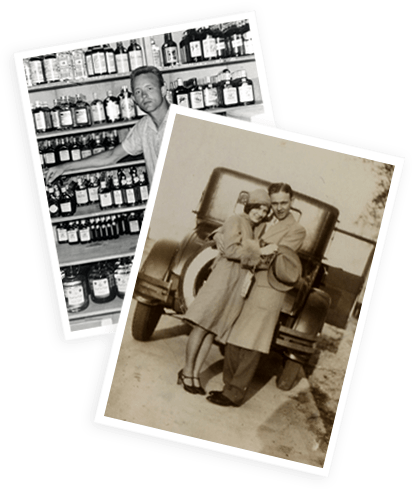
We've been around for a long time, over 75 years in fact! Now in our family's fourth generation, B-21 remains to be about quality wines, competitive prices and exceptional customer service. We know wine by vineyard, not just by book and have been traveling, tasting and loving wine since 1948.
General Information
Join our mailing list and save




